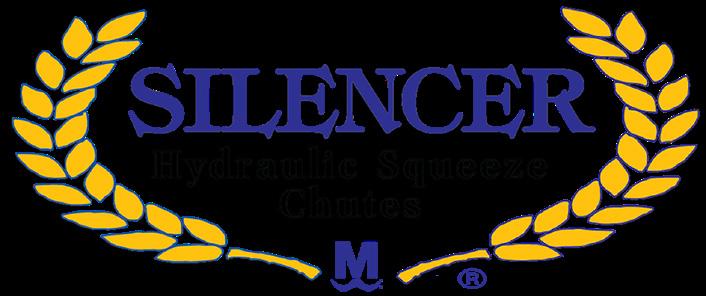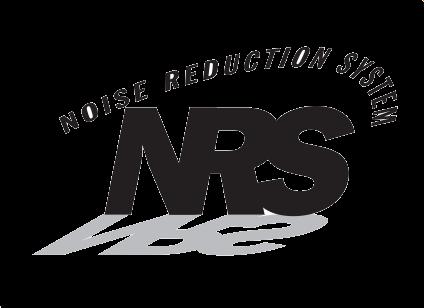Tough Conditions
Five ways to manage through drought and beyond.

Protect the Herd
What you need to know about Mycoplasma bovis.









Five ways to manage through drought and beyond.

What you need to know about Mycoplasma bovis.








Five recommendations for managing through drought and beyond.
By Jena McRellWhat you need to know about Mycoplasma bovis, a leading contributor to bovine respiratory disease in high-risk cattle.
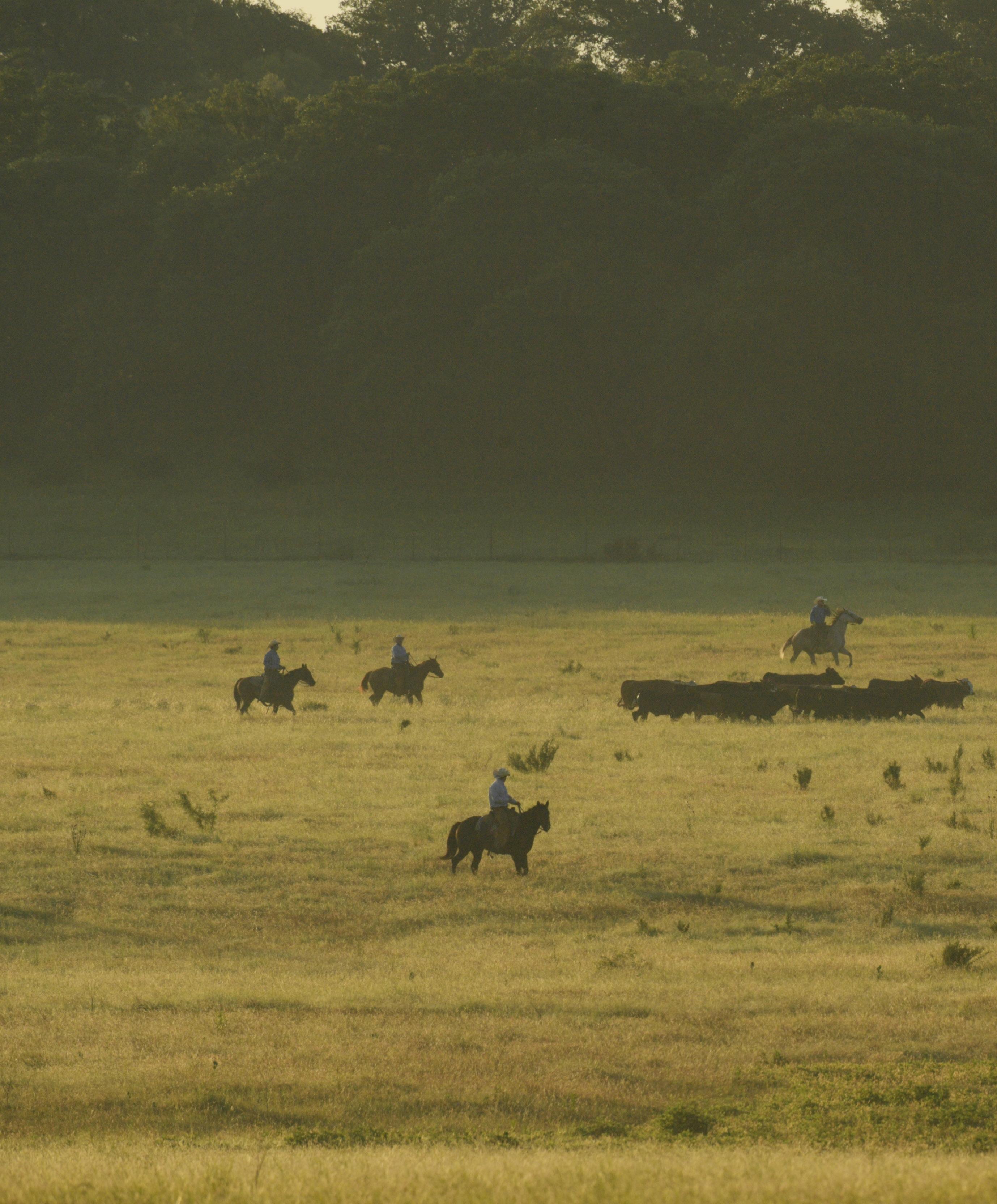 By Kayla Jennings
By Kayla Jennings

Published by Texas & Southwestern Cattle Raisers Association
P.O. Box 101988 Fort Worth, Texas 76185
Phone: 817-332-7155 Fax: 817-332-6441
Subscription Inquiries: (orders, address change, problems) tscra@tscra.org or 800-242-7820 tscra.org
Jaclyn Roberts
Executive Director, Communications & Marketing jaclyn@tscra.org • 817-916-1794
Jena McRell Managing Editor
Kayla Jennings Proofreader
Jana Earp Advertising & Partnership Manager jearp@tscra.org • 817-916-1744
Heather Heater Graphic Designer
Kendy Scudder Assistant Graphic Designer
Bart Ashford Creative Director
Production support by GRANT COMPANY grantcompany.net
The Cattleman/ TSCRA tscra.org
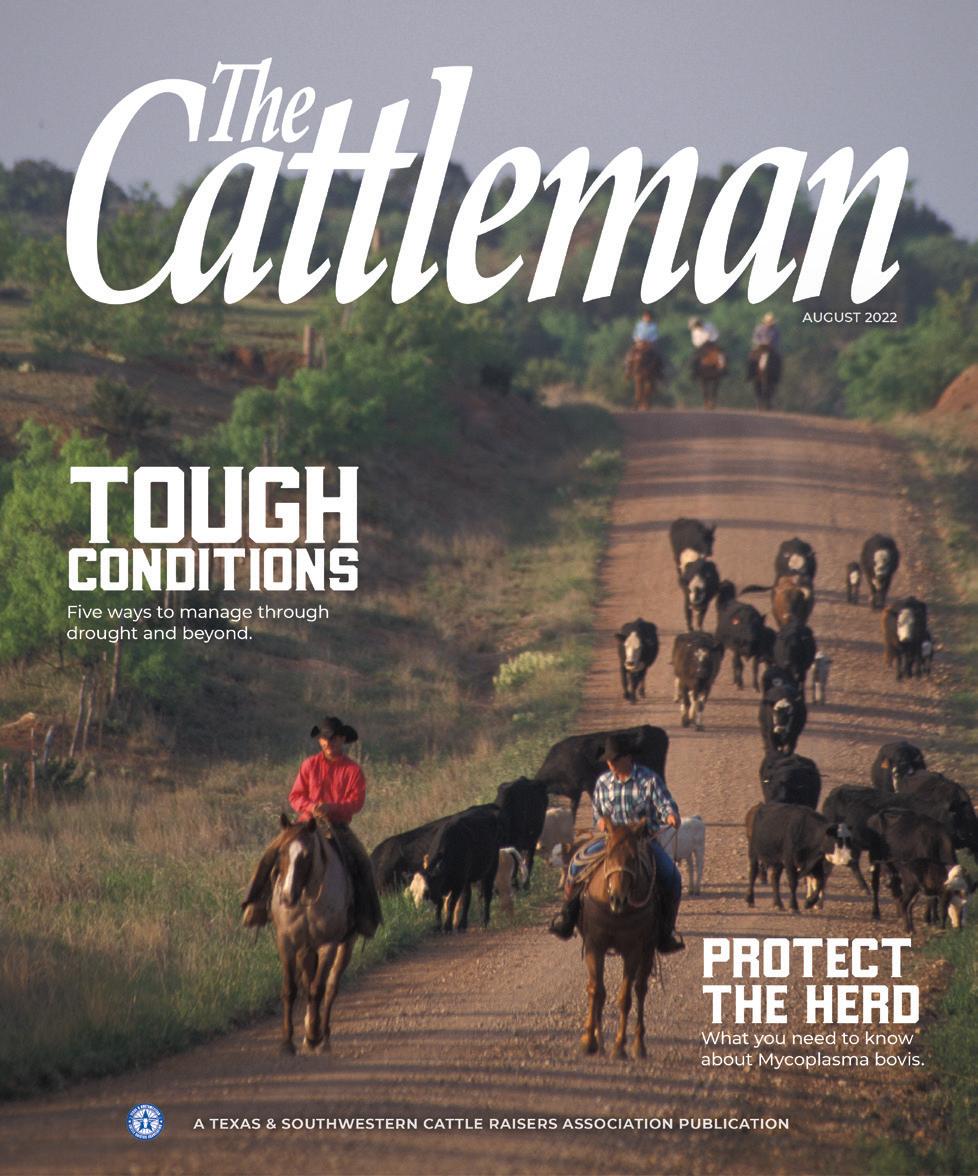
Cattle Raisers Insurance cattleraisersinsurance.com
Law Enforcement tscra.org, click on Theft & Law
Cattle Raisers Convention cattleraisersconvention.com
Changing pastures. A group of riders leads cattle along the road on a ranch south of Childress.
Photo by Russell GravesCase IH educational flyer
Published on the first day of each month by Texas & Southwestern Cattle Raisers Association Inc., P.O. Box 101988, Fort Worth, Texas 76185. The Cattleman (ISSN 0008-8552, USPS 095000), copyright 2022 by Texas & Southwestern Cattle
registered U.S. Patent
year.
The
Office.
for
Media. Subscription $50 per year; foreign
POSTMASTER: Send address changes to: The Cattleman, P.O. Box 101988,
Texas 76185, 817-332-7155, FAX 817-332-6441. All members of Texas & Southwestern Cattle Raisers Association
ryegrass is very important to our overall forage program and is extremely versatile whether we are using it for grazing, hay or silage production. We also like the fact Marshall produces lots of tonnage that is very high quality.
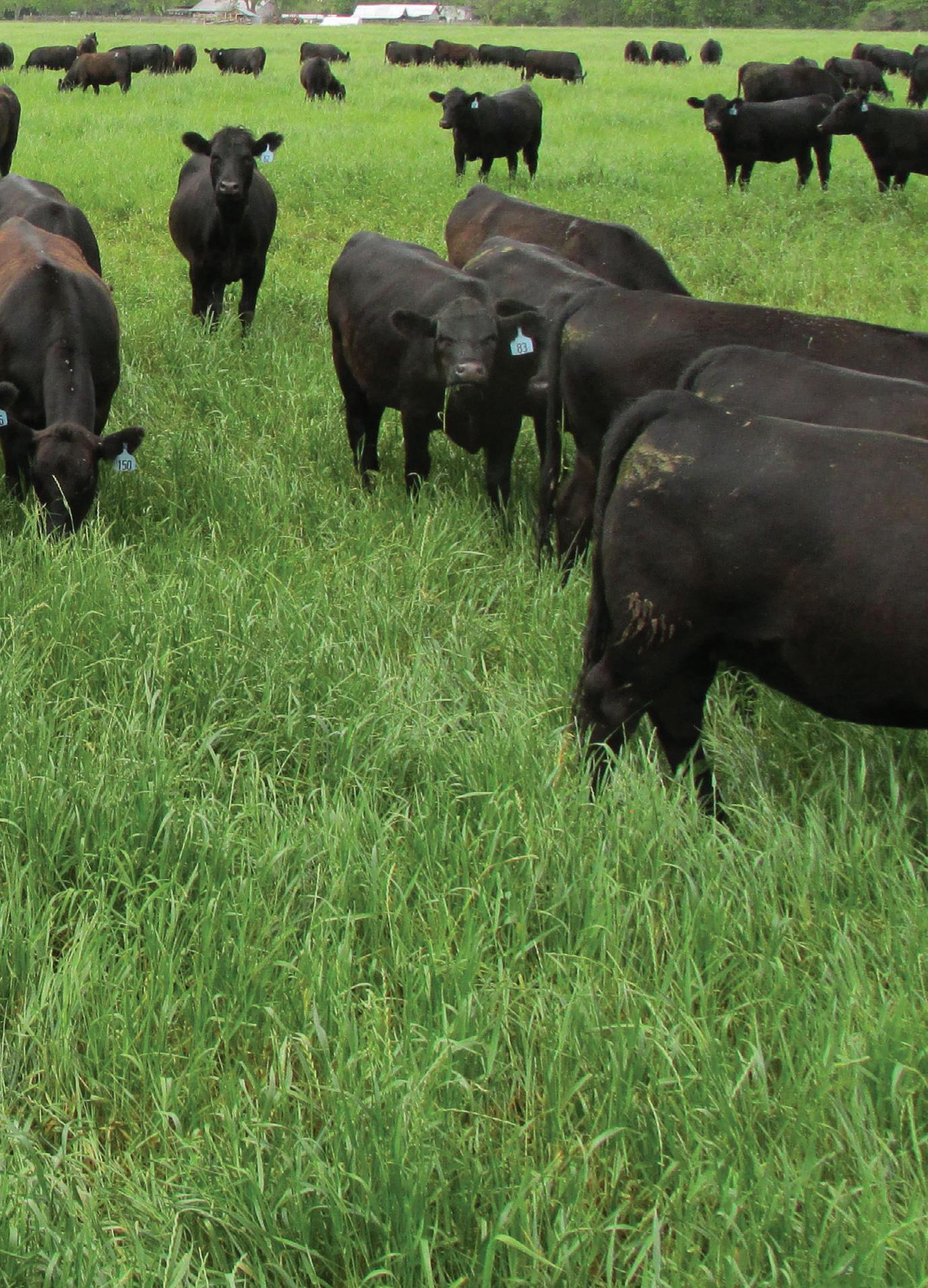
lost all our wheat due to the wet weather last winter, so this year we will be going entirely with Marshall.”
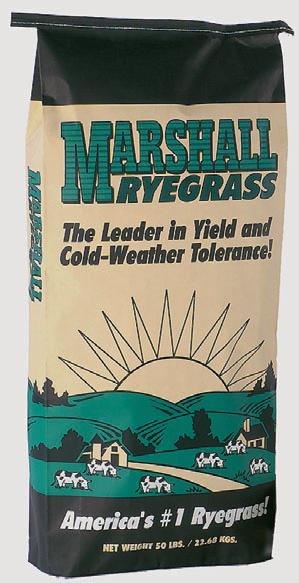
Brent Jennings Alba, Texas

is tough, easy to plant, economical, makes lots of high quality forage and is our main forage.
graze and bale Marshall and it lasts about a month longer than wheat.
tried other ryegrasses
the past but nothing compares to Marshall, it has cut our winter
in half.”
Jerry Wade Terrell, Texas



Five recommendations for managing through drought and beyond.
 By Jena McRell
By Jena McRell
The current state of rangeland conditions is the headline of daily coffee shop conversations, chute-side chats and silent prayers across the Southwest, and rightly so.
How long will drought conditions persist? And what can ranchers do to survive until then?
Unfortunately, all signs point toward 2022 being one for the record books across Texas.
As of the last week of June, more than 85% of the state faced drought conditions. That’s up from only 9% the year prior.
At time of press, around 45% of the Texas landscape was experiencing extreme drought conditions; and the dark-maroon areas on the U.S. Drought Monitor map, representing the highest-ranking exceptional drought regions, crept to nearly 16%.
Many ranchers remember all too well the last time they faced a similar challenge. Record levels set in 2011 resulted in more than 70% of the state under exceptional drought conditions. Pastures were bare, herds were liquidated, and the financial losses were significant.
Photo by Caitlin RichardsSome forecasts believe 2022 could end up being worse.
But then again, if the right weather system comes along, the drought pattern could change course.
Jason Smith, Texas A&M AgriLife Extension beef cattle specialist and assistant professor in the department of animal science, says there are lessons to gain from persevering through drought-related challenges. Mainly, a change in thinking.
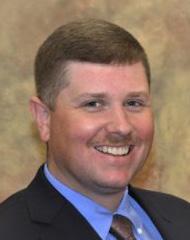 Jason Smith Texas A&M AgriLife Extension
Jason Smith Texas A&M AgriLife Extension
“We often set up management programs based around the best times, so then we are forced to react to the worst,” Smith says. “From a long-term standpoint, we need to flip that paradigm. Let’s be set up to react quickly to adverse conditions and be a little more conservative at how quickly we react when conditions improve.”
He points to last year’s summer rains as an example. Producers who received adequate moisture to support substantial forage production realized the situation was short lived. Once the rains shut off, they never came back.
“That forage came and went very quickly,” Smith says. “I would encourage folks to keep that in the back of their minds. If we start to get some relief in the drought, be careful not to react too quickly to a green up and potentially short-term forage availability.”
During these uncertain conditions, what can cattle raisers and stewards do to make the best of an impossible situation? The Extension expert offers five recommendations for managing through drought.
At this stage, many ranchers may have culled as deeply as they wanted to within the herd. Smith admits those tough decisions will likely have to continue.
Among the top criteria is identifying females that do not match the operation’s environment and have a higher risk of reproductive failure. A clear signal is the animal’s body condition score and whether or not they have experienced significant losses during the summer months.
Smith says especially for fall-calving cows coming through a drought, if they are calving at a low body condition score (BCS 4 or lower), both the cows and the calves are at a nutritional disadvantage — leading to health and performance consequences down the road.
“A cow’s condition at calving is a prime indicator of her likelihood to rebreed during the upcoming breeding season,” Smith says. “But it also indicates her calf’s likelihood of survival through weaning.”
Times of plenty, and times of want. While never welcome, seasons of drought often come as no stranger to Texas and Southwestern cattle producers.
Exactly 11 years ago, the state faced the worst drought on record. And the remainder of 2022 looks to compete for that mark in history.
All maps represent the last week of June, respectively, and are courtesy of the U.S. Drought Monitor. The U.S. Drought Monitor is jointly produced by the National Drought Mitigation Center at the University of Nebraska-Lincoln, the United States Department of Agriculture, and the National Oceanic and Atmospheric Administration.




Another area of focus is relative input cost per return on investment. Simply put, the cost incurred to see an animal through to successful production.
This is an important consideration when it comes to replacement females or first-calf heifers.
Relative to the mature cow herd, these animals can be more expensive to feed and manage, without the guarantee they will carry a calf. When identifying animals to keep in the herd, focus on those in their prime — females requiring minimal inputs that have proven to bring returns to the operation.
Smith reminds producers to rely on fundamental management practices, like recordkeeping and production data, to make decisions along the way.
“From a genetic selection standpoint, there’s value in identifying animals that can maintain productivity under drought conditions,” he says. “That potentially will bring benefits that stay with the herd beyond this drought and help to shape it to be successful for the next one.”
In addition to strategic culling, Smith advises cattle raisers give thought to early weaning as a way to extend forage supplies without a substantial cost increase. Early weaning typically occurs when calves are around 90 to 120 days old.
By speeding up the transition, demands on the lactating cow are eliminated and her overall feed or forage intake greatly reduced, sometimes up to 20%. In this instance, higher quality feed can be shifted to meet the calf’s needs instead.
However, for early weaning to pay off, it must be part of a carefully determined plan.
“Depending on how early weaned calves are managed, it is not always a cheap endeavor,” Smith says. “There are certain ways we can employ early weaning and keep any added costs at a minimum.”
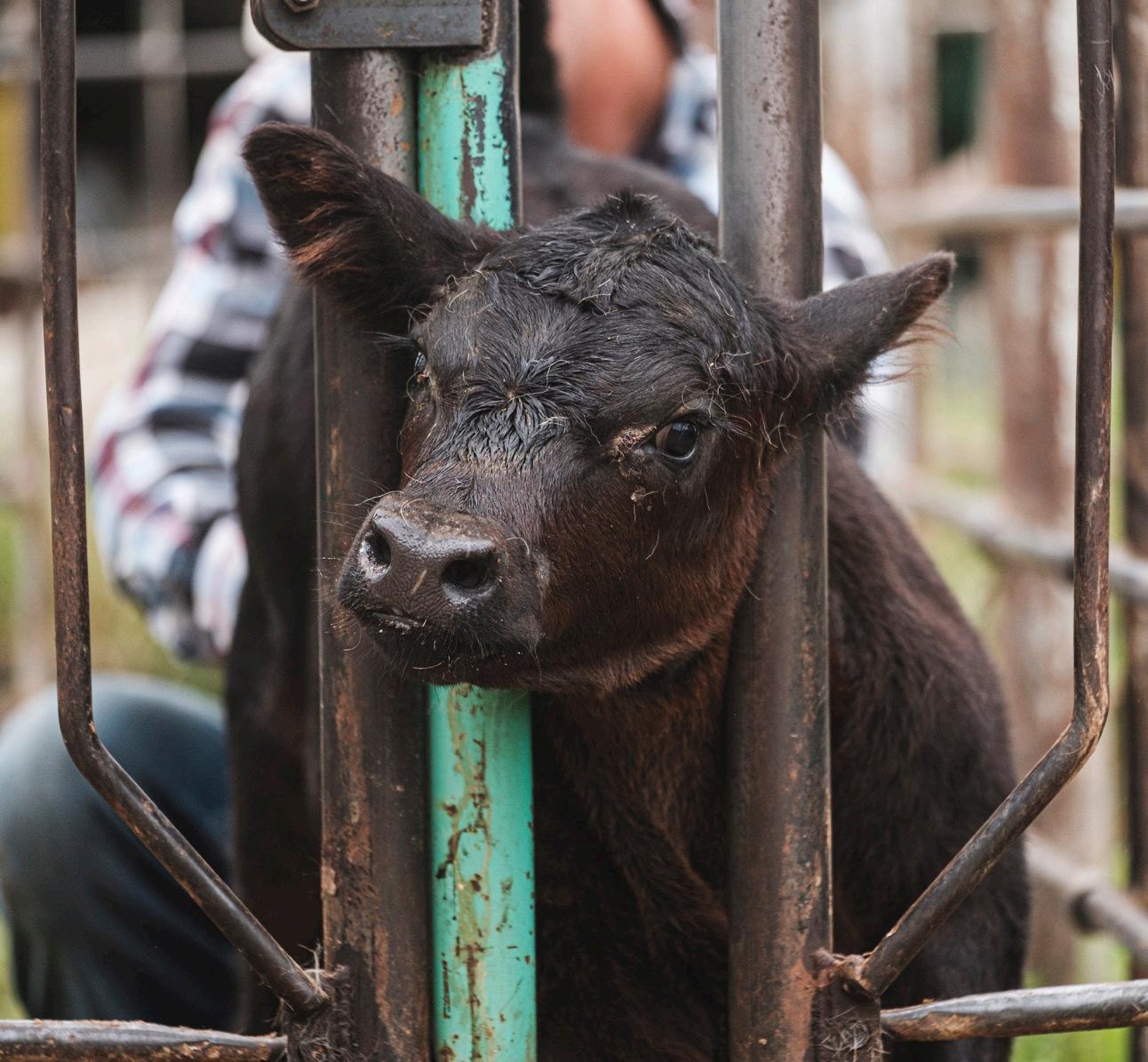
At this stage, calves are undergoing significant growth and development, and normally, the cow and forage resources provide all they need to thrive.
In early weaning and drought situations, the responsibility rests on someone else’s shoulders. Calves will need to be fed a high level of protein and energy, among other nutrients, to replace what they were receiving from milk.
In a perfect scenario, Smith says early weaned calves move into a pasture with abundant, high-quality forage and are supplemented as necessary to achieve growth targets. With available forage at a minimum, that changes the game completely.

“If you are considering early weaning for the first time or have limited experience managing weaned calves, my best advice would be to find someone who has that experience,” Smith says. “Find someone who is really good at managing lightweight calves, and either sell to them or find a way to partner with them throughout that time period.”
Speaking of partners, be sure to alert a herd health veterinarian when considering early weaning calves. The conventional vaccination and preventative health program for weaned calves may need to be modified.
Like most anything these days, supplemental feed costs will likely remain significantly higher than they’ve been in the past. Because of this, Smith says it is crucial producers make the most economical decisions possible on supplemental feeding.
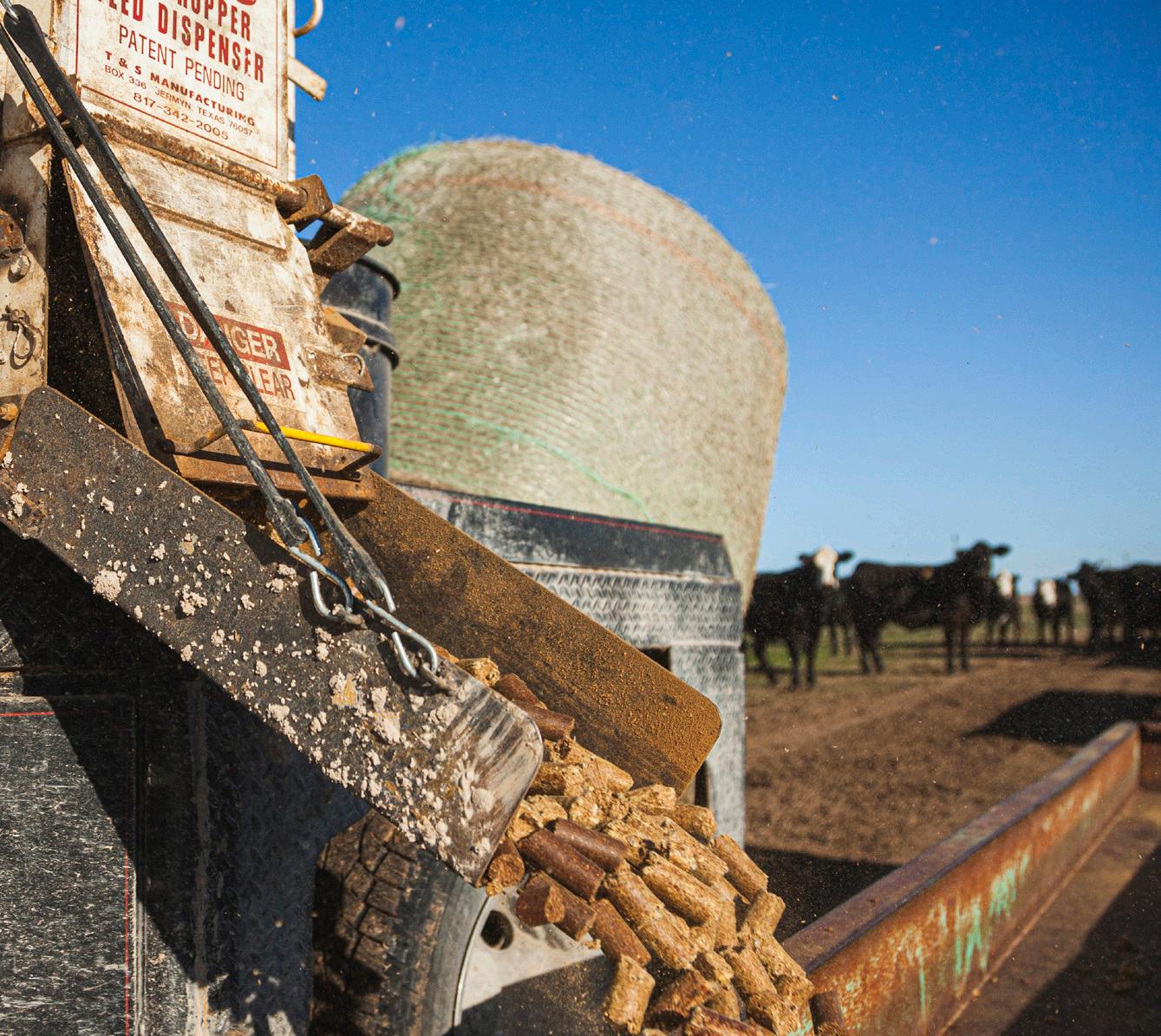
“We are seeing a lot of cows being fed already in the Texas Panhandle,” he says. “And by being fed, I mean being supplemented at a high level or even being fed a total mixed ration to replace a large portion of the nonexistent forage. And that is incredibly abnormal for this time of year.”
Making a supplemental feeding plan begins by crunching the numbers.
Texas A&M AgriLife Extension offers a calculator, available for download on the department of animal science website, that allows producers to evaluate the value of different supplemental feedstuffs and identify the best options for their operations.
Similar to working with a veterinarian on herd health protocols, Smith recommends reaching out to a beef cattle nutritionist to ensure the herd’s needs are met. Even in the same geographic area or environment, no two plans are created equal.
“Supplemental feeding of grazing cattle in drought conditions is incredibly complicated,” Smith says. “I say that because not all supplemental feedstuffs act the same, meaning they influence forage digestibility and consumption in different ways.”
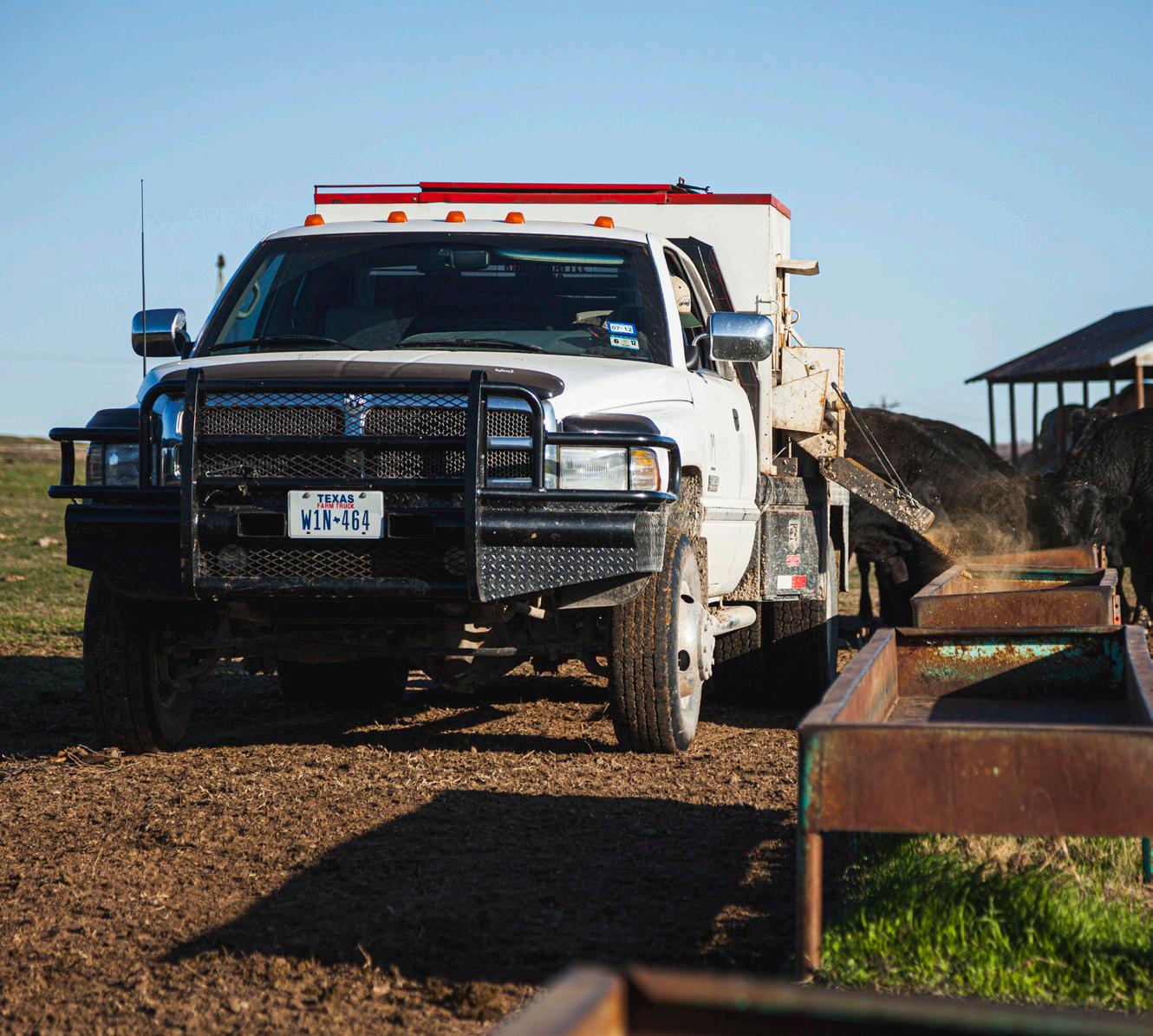
Some feedstuffs simply replace forage in an animal’s overall diet, while others displace, or reduce, the overall amount of forage the animal would voluntarily consume. Others may increase voluntary forage intake. There are situations where each could be valuable, Smith says, but it varies by operation. A nutritionist can help to determine the optimum strategy for a specific scenario.
Particularly during prolonged drought conditions, he cautions against relying heavily on non-protein nitrogen, most commonly provided by urea, as a supplemental protein source. Because the relatively low-quality forages have been dormant for an extended period of time, Smith says they do not pair well with urea-based supplements.
“Unless you’re providing another supplemental source of a readily fermentable carbohydrate to that animal, which is the other necessary part of the equation required to turn the urea into protein, its overall benefit will be substantially limited,” he says.
At times, urea-based supplements can be risky. Hungry, poor-conditioned cows are prone to overeating, and if they do not have the other necessary nutrients or substrates, they can become toxic.
Smith reassures that there certainly are situations where urea-based supplements are incredibly valuable, but he warns “drought conditions are typically not that scenario.”
It comes as no surprise that water, the herd’s most important nutrient, also tops the list of considerations when managing through drought.
Before turning cattle into a new pasture, it is recommended to sample for nitrates, sulfates and total dissolved solids. As water evaporates over time, everything else left behind becomes concentrated. Smith says that is why issues arise with overall water quality and potential toxicities.
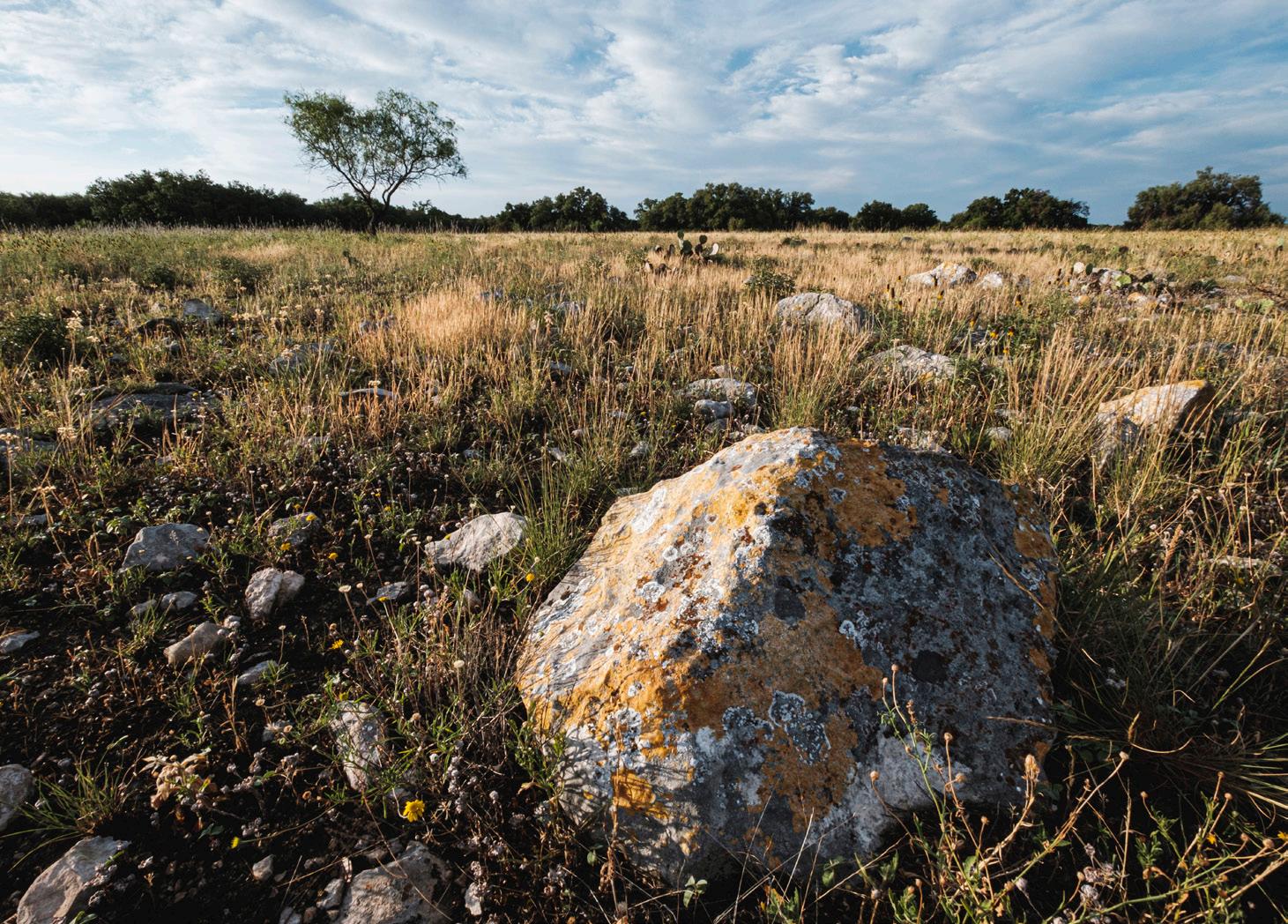
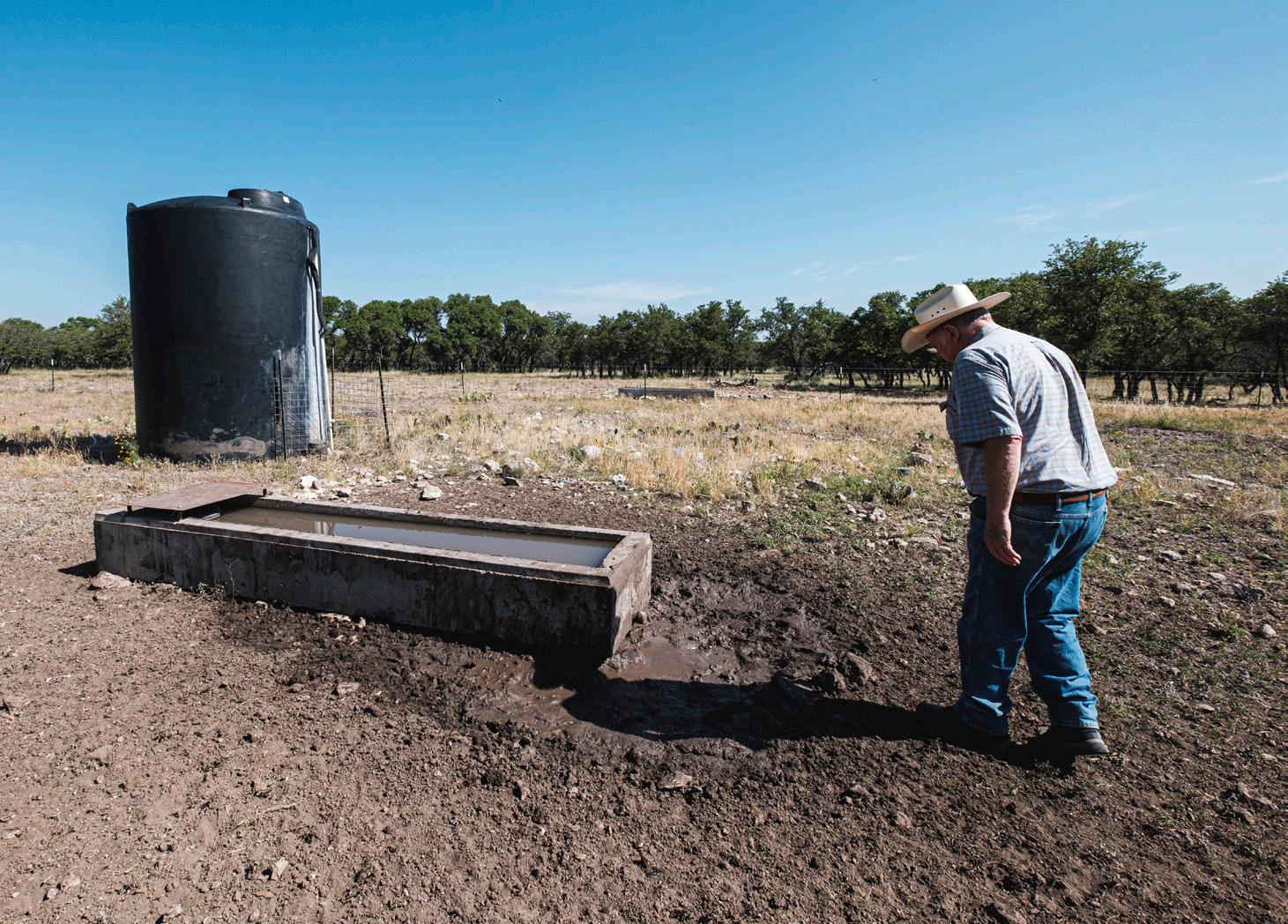
When there is a water quality issue, oftentimes the first sign is mortality. There typically are not many other indicators to signal when something is wrong, Smith says, so it is especially important to test the water before granting the herd access.
He suggests contacting the local Extension office for information on how to obtain and submit a water sample for analysis.
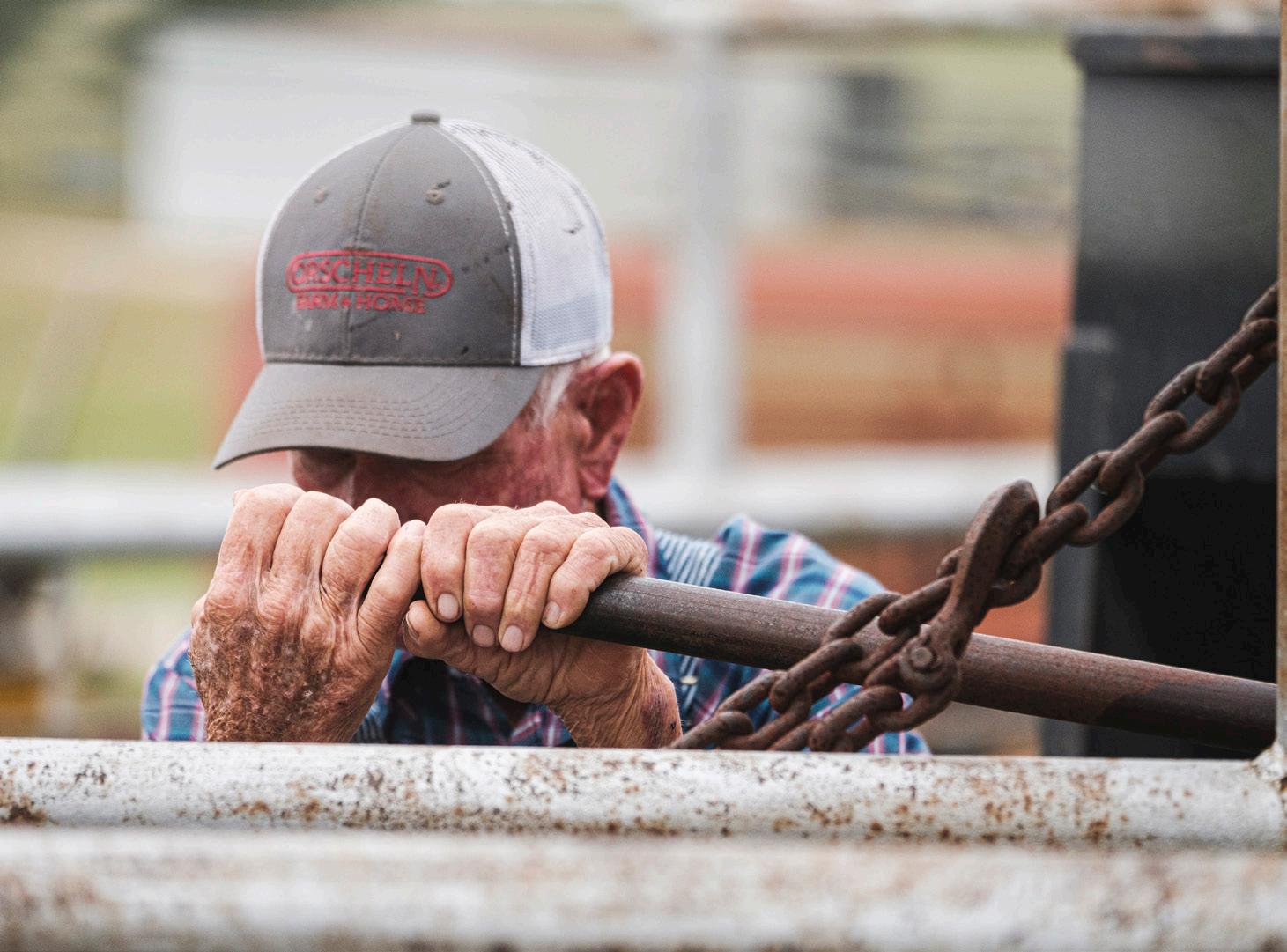 Photos by Jerod Foster
Photos by Jerod Foster
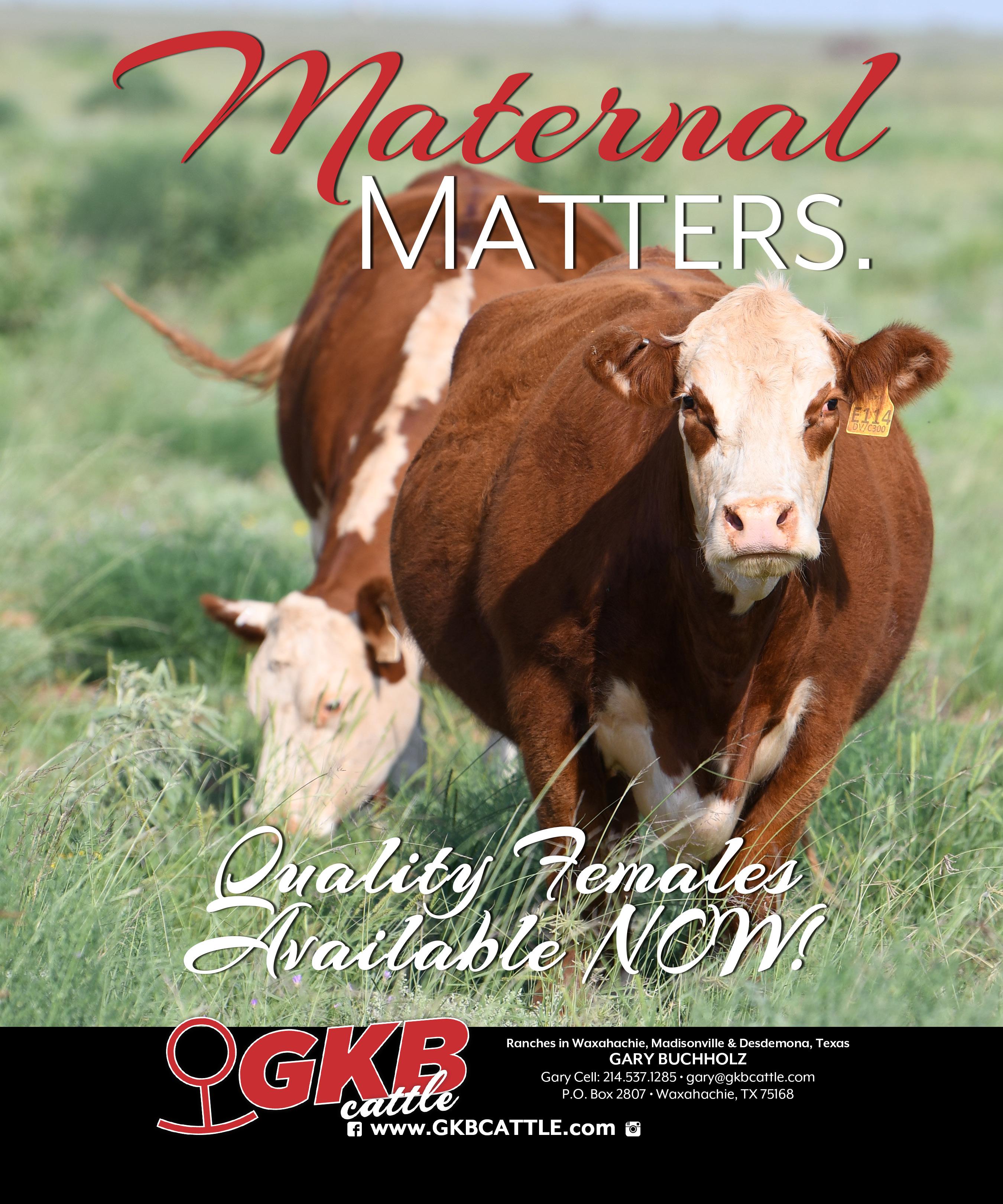
“If you are going to have fewer calves to sell or those calves are going to be lighter, whatever the case may be, we recommend you do everything that you can to capture as much value as possible,” Smith says.
Every operation brings different opportunities to the table when it comes to adding value, but there are a few tried-andtrue strategies Smith suggests producers consider.
The first is preconditioning. Especially when weaning calves early, it presents an ideal opportunity to set up vaccination protocols and precondition those calves for the next stage of life. Potential buyers continue to seek out and pay a premium for preconditioned calves.
When marketing feeder calves, another tool Smith recommends is the use of growth implants, which have the potential to increase weaning weights around 3% to 7%. While the benefits may not be as great as they would be in a non-drought year, he says producers can still yield a positive and substantial return on investment.
Smith adds that those and other similar strategies to add value to whatever remains of the marketable calf crop will be important for the operation, now and in the years ahead.
“How those cattle are marketed can be a saving grace during these situations,” he says.
As the cattle raisers community navigates yet another relentless season of drought, it helps to be reminded they are not in this journey alone.
Smith and his colleagues at Texas A&M AgriLife Extension have almost 20 different publications on various aspects of drought management and encourage ranchers to access these resources through the beef cattle publication library at animalscience.tamu.edu.
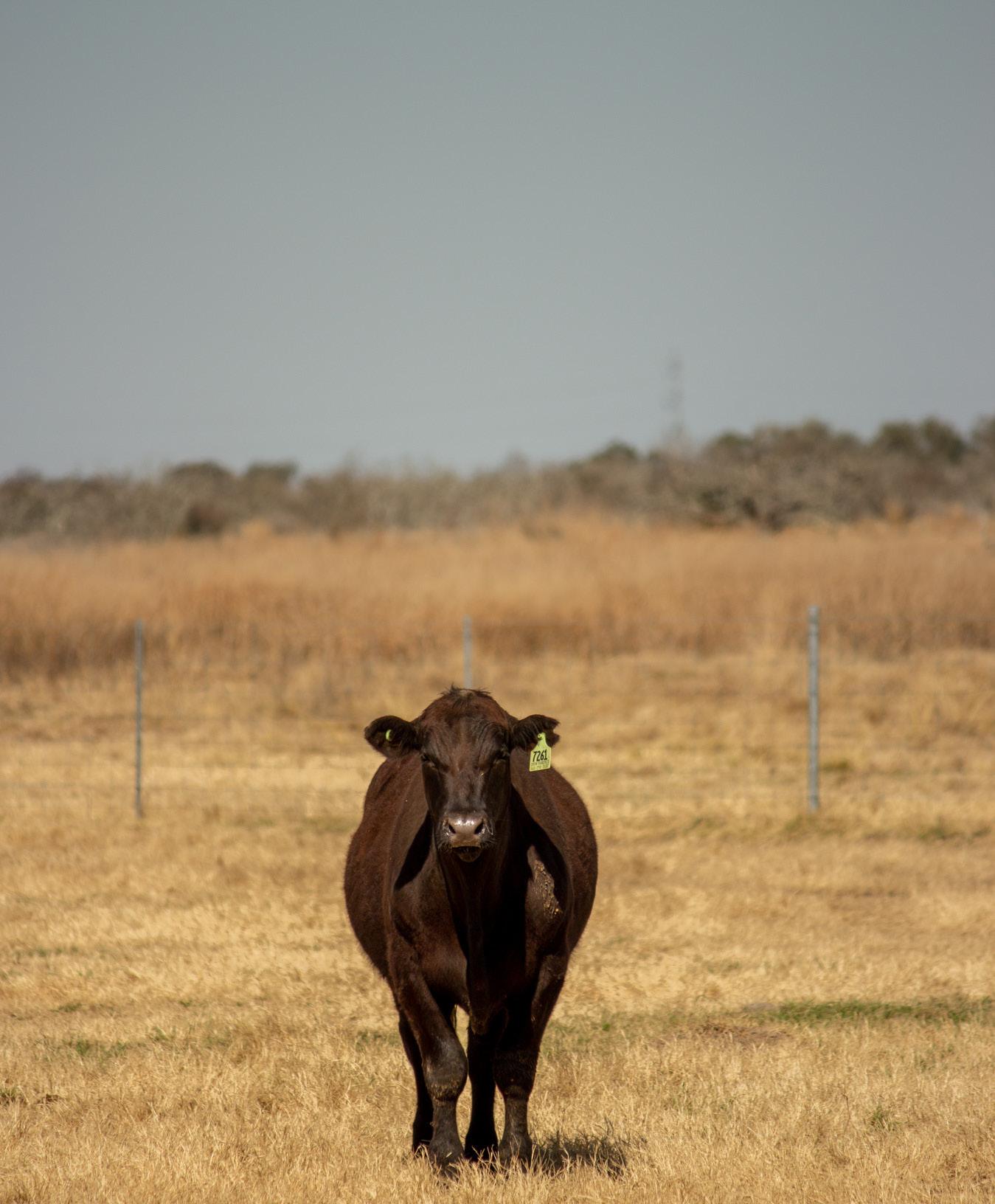
And like any moment of adversity, perhaps there are positive lessons to learn along the way.
“The current drought situation does provide the opportunity for operations to reposition what’s at the center of their management programs,” Smith says. T C
Photo by Cami Froneberger


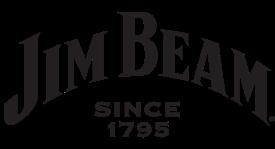



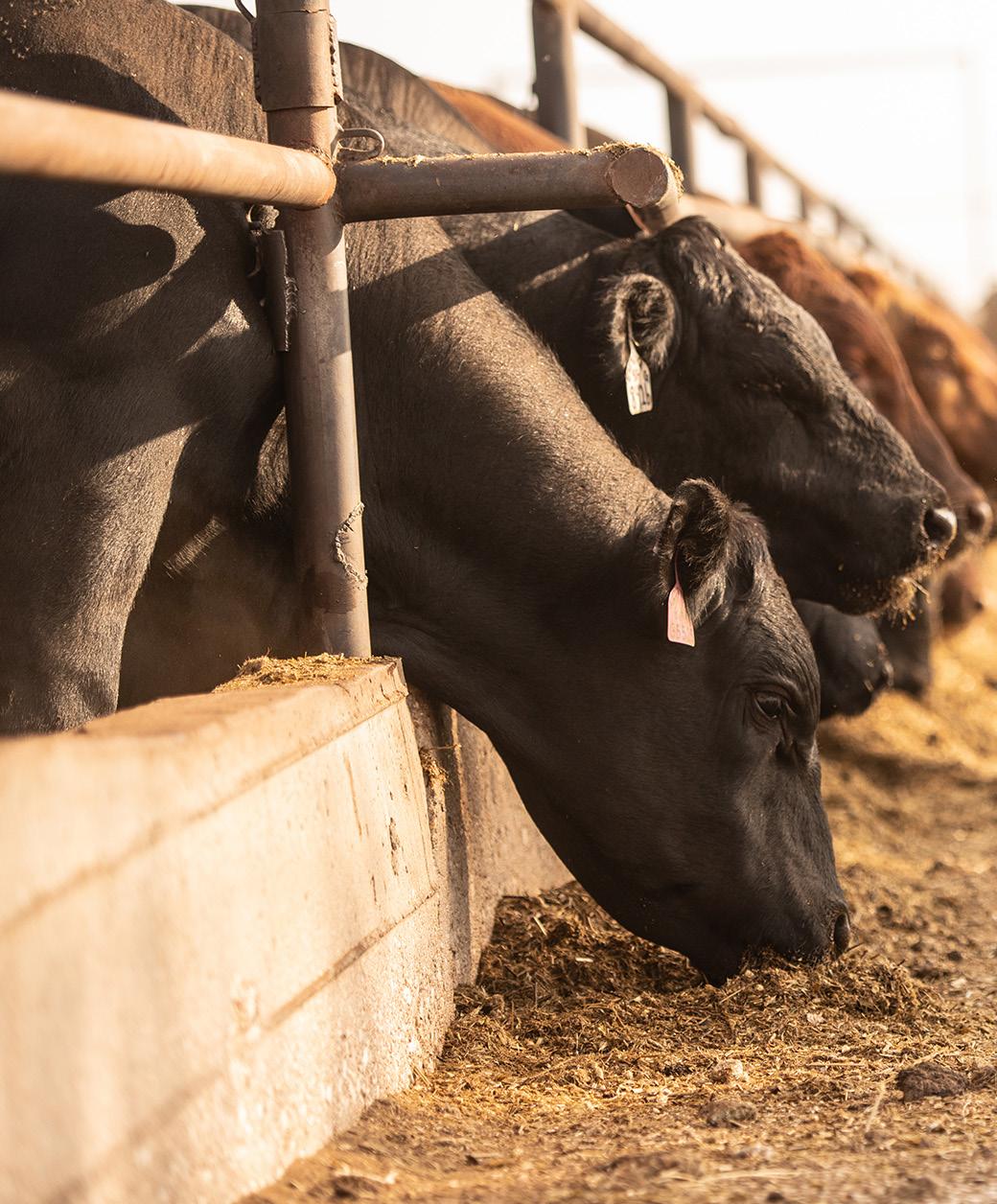 Photo by Kayla Jennings
Photo by Kayla Jennings
What you need to know about Mycoplasma bovis, a leading contributor to bovine respiratory disease in high-risk cattle.
By Kayla JenningsHope for the best. Prepare for the worst. This common adage rings true when it comes to developing a herd health plan.
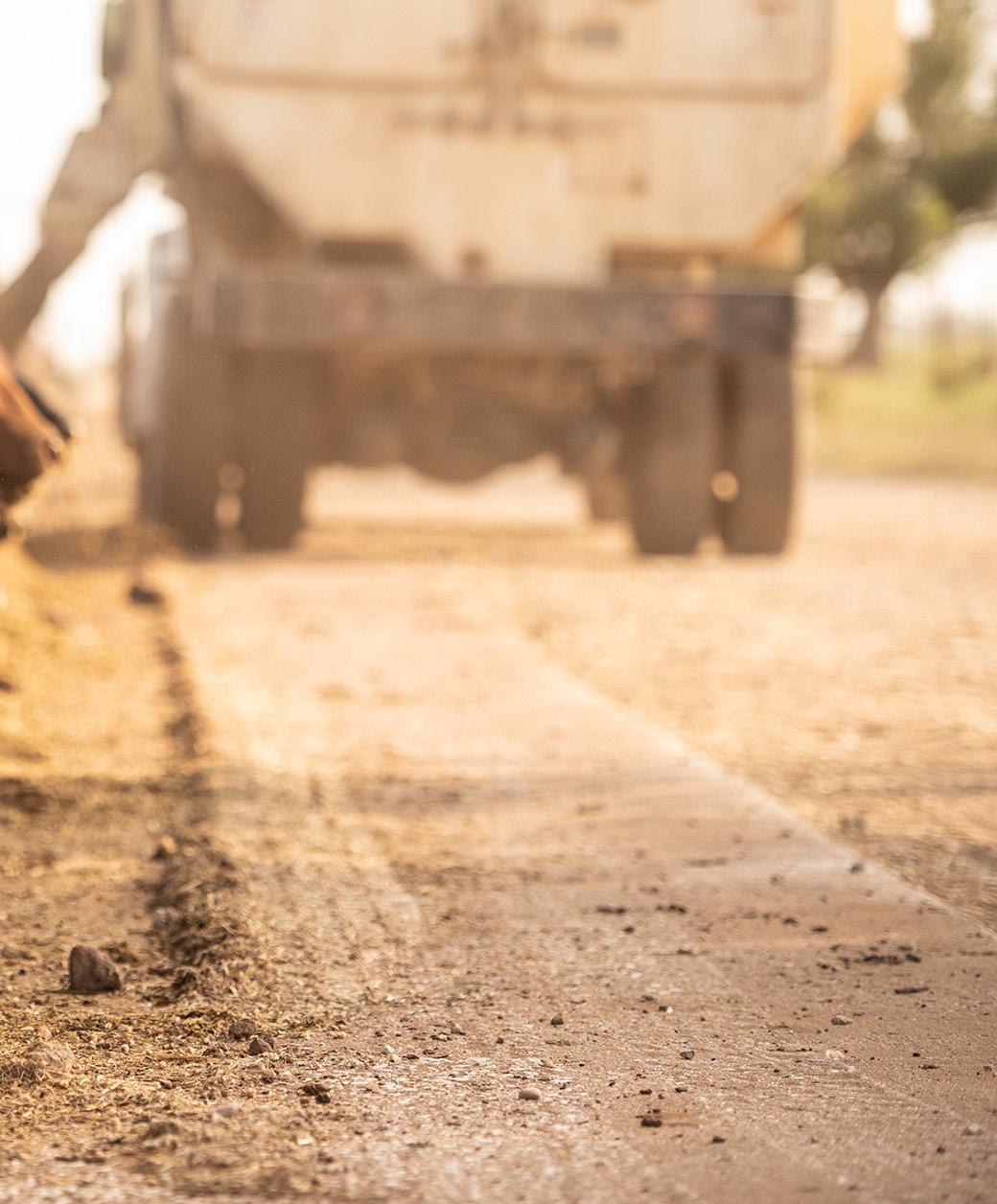
Cattle raisers who have been around for any length of time can attest, disease strikes at any time and causes more problems than just one sick calf.
Often, disease is a domino effect in the worst way.
Dr. Daniel Scruggs, cattle technical services veterinarian for Zoetis, says Mycoplasma bovis, a leading contributor to bovine respiratory disease, works in that exact way. It is highly contagious, and if not treated properly, can result in extreme loss in confinement cattle especially.
With more than 35 years of experience in diagnostic pathology in food animal species and infectious disease in production animals, the last 20 years specifically in cattle, Scruggs has seen the effects of Mycoplasma bovis in operations across the country. One unique attribute he shares about this product of frustration among the cattle industry is its insidious nature.
“Cattle may be infected and they may have diseased lungs, but they don’t show that they’re sick for several days, maybe even a week or longer,” he describes. “Consequently, the treatment is less optimal.”
Obviously, those factors make it more complex for producers facing sickness from the bacteria.
Unlike other bacteria commonly seen in cattle, Mycoplasma bovis does not have a cell wall. That matters because some classes of antibiotics used to kill bacteria have no effect on mycoplasmas. There are a limited number of antibiotics labeled for treatment or control of this bacterium, so consultation with a veterinarian for the right choice is important. Even so, Scruggs says the drug is often administered too late because the sickness is difficult to identify.
He says most of the time, the first symptom of infected cattle is they appear less full because they aren’t eating well, but to some observers, that alone does not typically warrant treatment. However, after a few days, it becomes more apparent they are sick.
Dr. Daniel Scruggs ZoetisHe says if it is indeed Mycoplasma bovis, it has likely already caused well developed changes in their lungs — resulting in poorly responsive bovine respiratory disease.
“What’s important to recognize is that Mycoplasma bovis can cause disease by itself, but more commonly, it occurs as a co-infection with some of the other usual suspects,” Scruggs adds.
Once reaching that point, even the antibiotics labeled for treatment have limited efficacy. This often means a higher incidence of retreated cattle.
“Mycoplasma is associated very much with reduced treatment response and a higher level of retreats in high-risk animals,” Scruggs says.
Mike Eason, of Pogue Cattle Co. near Sulphur Springs, has seen this play out first-hand. He oversees the extensive yearling operation, as well as a cow-calf business and cattle procurement from not only Texas sale barns, but also Oklahoma, Louisiana and Arkansas.
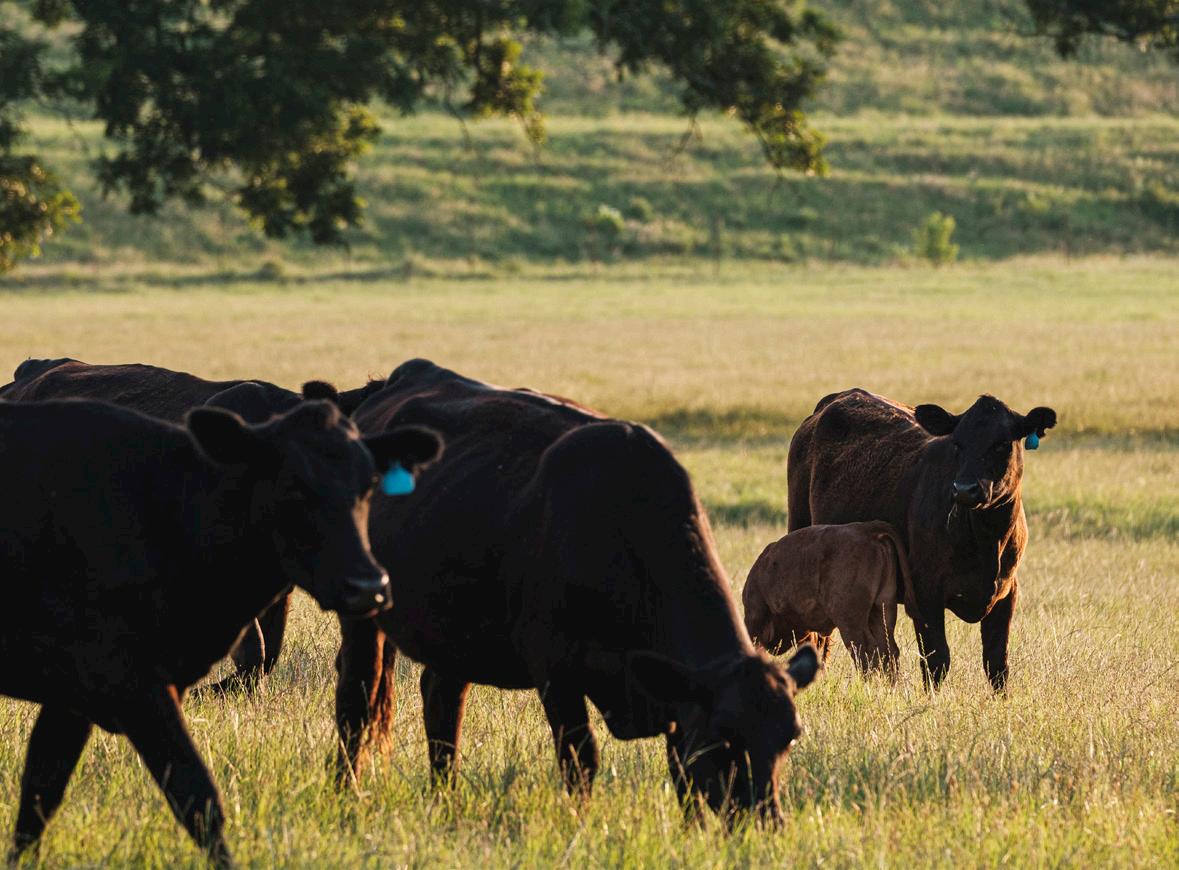
In his nearly three decades of experience, Eason has seen it all relative to cattle health. He says Mycoplasma bovis is not something cattle get quickly or get over quickly.

“A lot of time, it takes me anywhere from three to six months to get a calf back, if I’m able to get him back at all,” Eason says. “It depends on how severe he is, and how far along he was before we caught the actual symptoms.”
He says Mycoplasma bovis presents in a variety of ways, including going off feed, respiratory symptoms, and a drooped ear or lameness in more advanced stages.
Scruggs adds, “The absence of lameness or the absence of the ear infections doesn’t mean it’s not Mycoplasma. Most of the time, it’s a respiratory infection, and the other things come along later.”
Scruggs and Eason agree Mycoplasma bovis is most often seen in younger cattle comingled in a feedyard setting. The stress associated with bringing cattle in from different
Wireless Loadbars



system

locations in addition to environmental changes, such as heat or cold, exacerbate the effects.
“In higher-risk cattle, right after arrival on the feedyard, I counsel people to assume Mycoplasma is part of the infection process the first time they pull an animal,” Scruggs says.
By applying this philosophy and treating those cattle at the beginning, Eason has seen fewer retreats on their operation. That, in turn, means more dollars staying in their pocket and increased performance.
While this bacterium is a source of frustration for cattle producers and veterinarians alike, there are practical steps cattle raisers can take to prevent Mycoplasma bovis from taking over.
“That’s where we can take management steps that can keep a smoldering brush fire from becoming a blazing forest fire,” Scruggs says.
In the veterinarian’s experience, he says nothing can replace a solid herd health vaccination protocol. In his cow-calf and cattle procurement experience, Eason strongly agrees.
Cattle who come into environments where stress is higher due to comingling can combat the effects of disease more effectively if they have received at least their first round of vaccinations, ideally two rounds, before entering the feedyard.
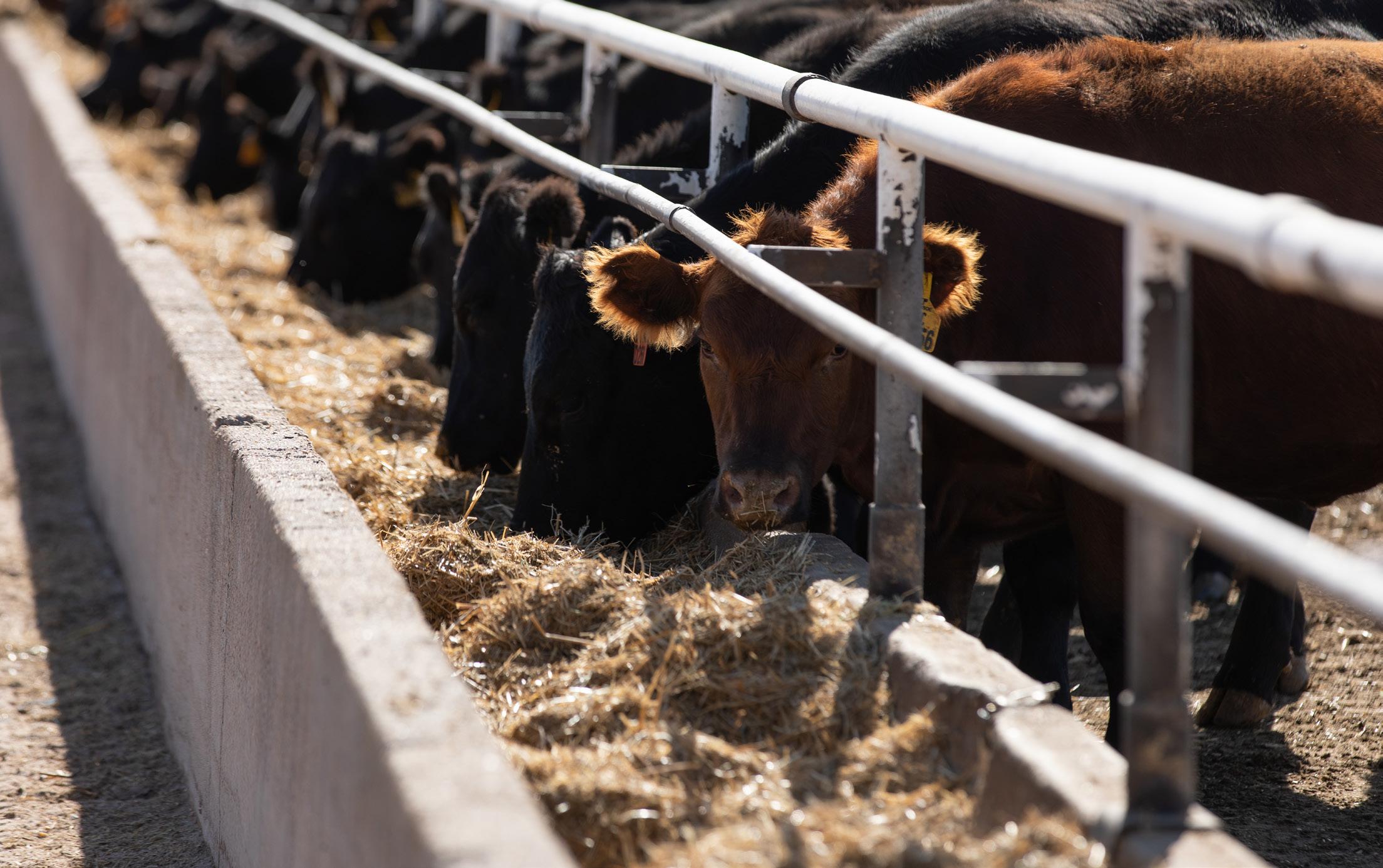
“Everybody needs to understand that proper immunizations at the cow-calf level are important,” Eason says. “If cattle have been vaccinated properly from the beginning, we have less trouble with them into the backgrounding stage. I want our yards performing at 30 days. I don’t need a wreck at 30 days.”
To achieve this, Eason uses all live vaccines when receiving cattle. After that, he ensures the crew checks the cattle daily. At Pogue Cattle Co., they have seen a huge difference by pulling sick cattle as soon as possible for treatment.
“A lot of guys miss this, but if you’ll spend most of your day really focusing on the bottom 20% of your herd, it sure creates better herd health across the board,” Eason says.
Secondly, minimizing stress for confinement cattle at every turn will help reduce disease. At a basic level, providing quality nutrition, clean water and access to
Backgrounder Mike Eason says Mycoplasma bovis is not something cattle get quickly or get over quickly. Photo by Grant Company.shelter during extreme weather, while developing cattle in smaller groups, will help combat health problems.
As Scruggs can attest, letting sick cattle progress is only decreasing the chance of recovery. With Mycoplasma bovis specifically, quarantining infected cattle is a smart practice. With such a highly contagious bacteria, isolation is one way to aim toward getting ahead of it.
“We need those cattle out of the population and in a chronic pen to reduce their impact back on the other cattle struggling to maintain health,” Scruggs says.
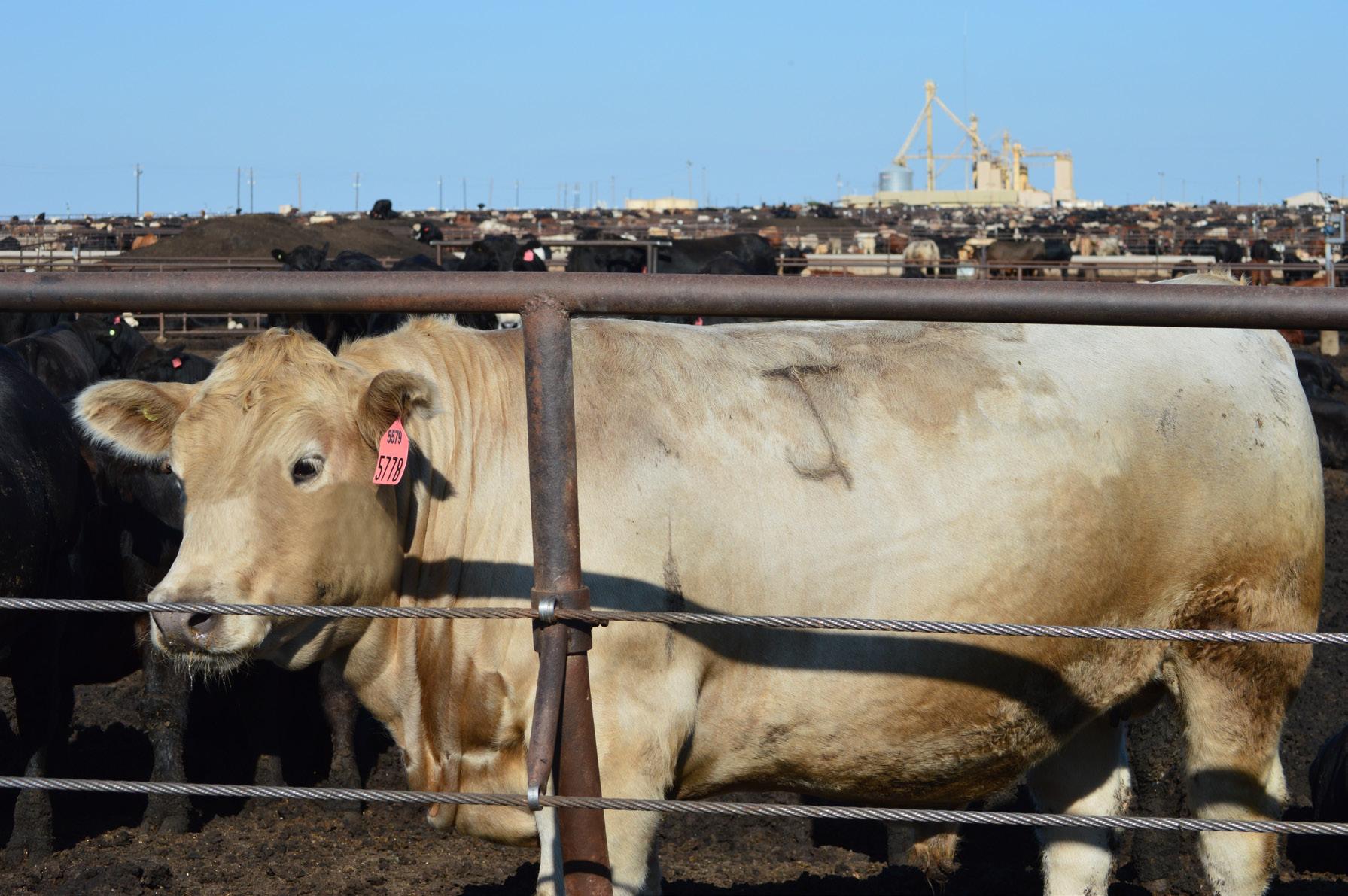
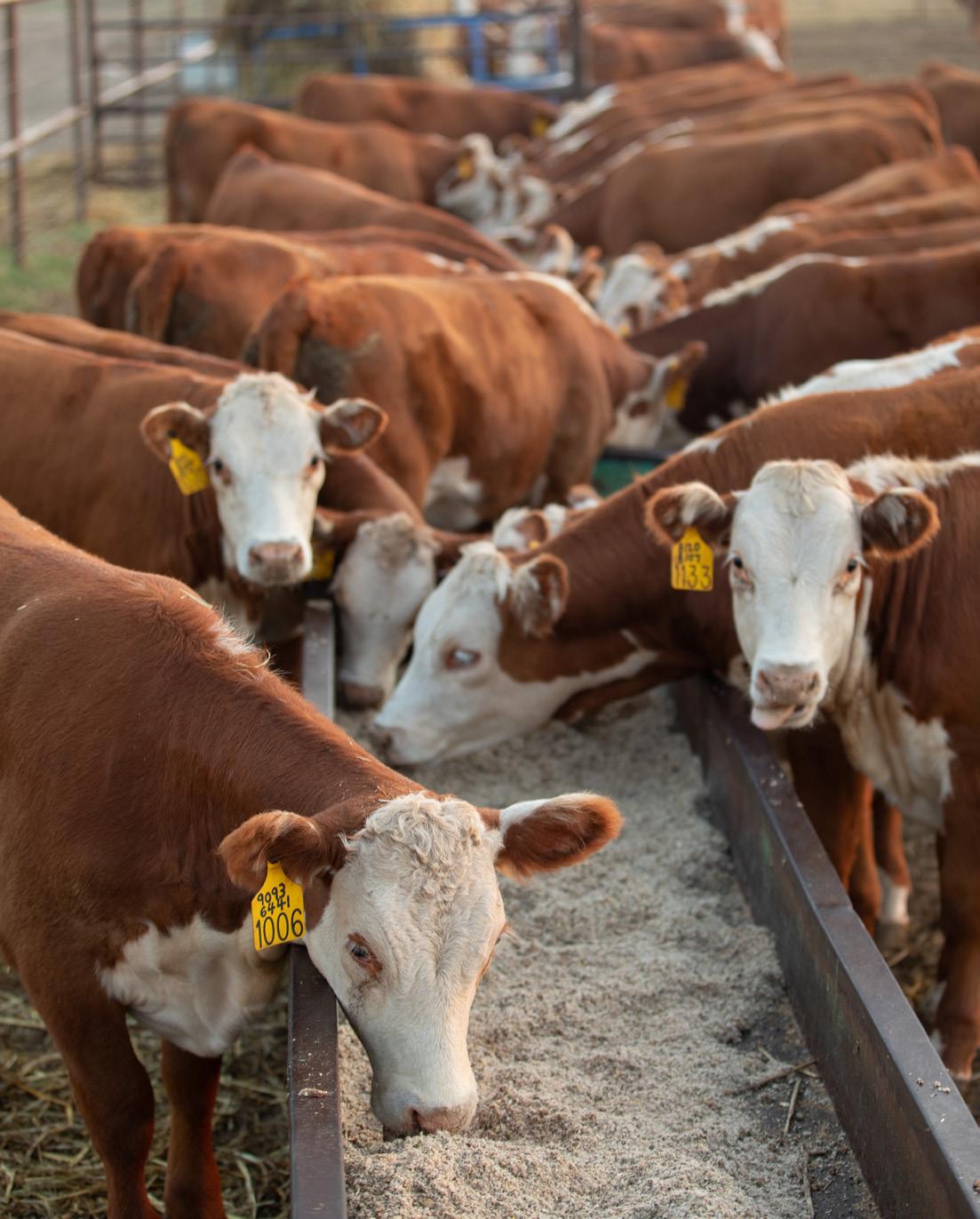
In addition to animal welfare, isolation and treatment in a timely fashion is also sustainable from an economic standpoint. A higher level of retreated cattle or cattle that fall out of the program due to illness will rapidly decrease the bottom line.
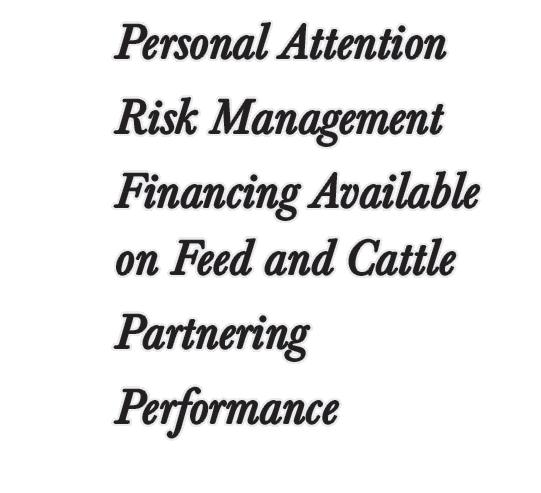


“Mycoplasma bovis is a major component of retreatment cattle, and it is a major component of chronics,” Scruggs says. “That’s what bleeds economic value. Multiple studies show Mycoplasma is a major component of the chronic non-responding cattle.”

In other words, treatment failures are the gift that keeps on giving — but not the kind a cattle raiser wants.

Scruggs and Eason suggest ranchers find a local veterinarian to assist in determining the best herd health program for their situation. The hope is to prevent Mycoplasma bovis and other bacteria or viruses before they have a chance to cause problems.


T C
 Proper vaccinations at the cow-calf level can help control issues caused by Mycoplasma bovis. Photo by Emily McCartney.
Proper vaccinations at the cow-calf level can help control issues caused by Mycoplasma bovis. Photo by Emily McCartney.


Texas & Southwestern Cattle Raisers Association was founded in 1877 to combat cattle rustling. Today, the association continues its mission of protecting cattle producers, not only through law enforcement, but also through advocating for sound public policy on issues affecting our members.
Traditionally, this column highlights one of those specific policy issues. For this month, however, I want to explain the several ways the association positively impacts the many, varied policy issues affecting our membership.
Association leaders and staff advocate on a wide variety of topics, directly and indirectly, related to your ability to raise cattle and own land. Policymakers, most of whom have little to no experience raising cattle, regularly consider issues of great importance to our members such as taxes, property rights, financial markets, border security, international trade, water, cattle diseases, wildlife, beef substitutes, labor and many others.
To ensure policymakers understand how their decisions impact our members, Texas & Southwestern Cattle Raisers Association actively participates in all three branches of government — legislative, executive and judicial — in both Texas and Washington, D.C.
In the U.S. Congress and Texas Legislature, our leaders and government relations staff serve as liaisons for cattle producers and landowners. We bring legislation that will benefit our members and defend against legislation which will harm our members.

The Texas Legislature meets every odd-numbered year from January to May. During the last legislative session, the association’s government relations team read 7,385 pieces of legislation and worked on 798 bills that impacted you and your fellow cattle raisers. Thousands of hours were spent in more than 1,000 meetings and conference calls during those six months, not to mention numerous
legislative committee meetings and countless hours spent preparing, strategizing and compiling information.
Like our work in the Texas Legislature, the association is actively engaged with the U.S. Congress as they craft federal statutes on every issue imaginable. For these purposes, association leaders and staff regularly travel to Washington D.C. and are in constant communication with Congressional members and their staff to advocate for and against legislation as necessary.
Our work doesn’t end in the halls of the U.S. or Texas Capitols, though.
Texas & Southwestern Cattle Raisers Association also monitors and works with 33 executive branch regulatory agencies at the state and federal levels. These agencies propose countless regulations every year impacting your operation and property. We frequently provide written comments and oral testimony to these agencies and continually work with their leaders and staff to address the needs and concerns of ranchers and landowners.
Each year, federal and state courts also hear thousands of cases, many of which have implications for cattle raisers. The association actively participates in the judicial process when cases reach appeal and have consequences beyond the parties involved. This often means filing an amicus curiae brief in certain precedentsetting cases. This tool allows us to provide the court with additional expertise and insight into each matter, hopefully swaying opinion.
Texas & Southwestern Cattle Raisers Association’s mission is to protect the stewards of land and livestock in the Southwest. Rest assured, your association is working diligently on almost every issue imaginable and using every avenue to ensure a bright future for you and your fellow members. T C I
U.S. Rep. Glenn “GT” Thompson was elected to represent Pennsylvania’s 15th Congressional District in 2008. The district encompasses 14 counties in a largely rural portion of northwestern Pennsylvania. Despite living more than 1,400 miles from Texas & Southwestern Cattle Raisers Association headquarters in Fort Worth, Thompson has a vital role in our industry’s future.
Currently, he serves as a ranking member of the House Committee on Agriculture, meaning he is the committee’s Republican leader. Also serving on the committee are U.S. Rep. Michael Cloud and U.S. Rep. Mayra Flores, both of Texas. Flores recently won a special election, becoming the first Mexican-born congresswoman and the first Republican to represent the Rio Grande Valley in more than a century.
Last year, the committee, and subsequently the full House of Representatives, passed the Cattle Contract Library Act and a one-year extension of the Livestock Mandatory Reporting Act. Texas & Southwestern Cattle Raisers Association supported both bills.
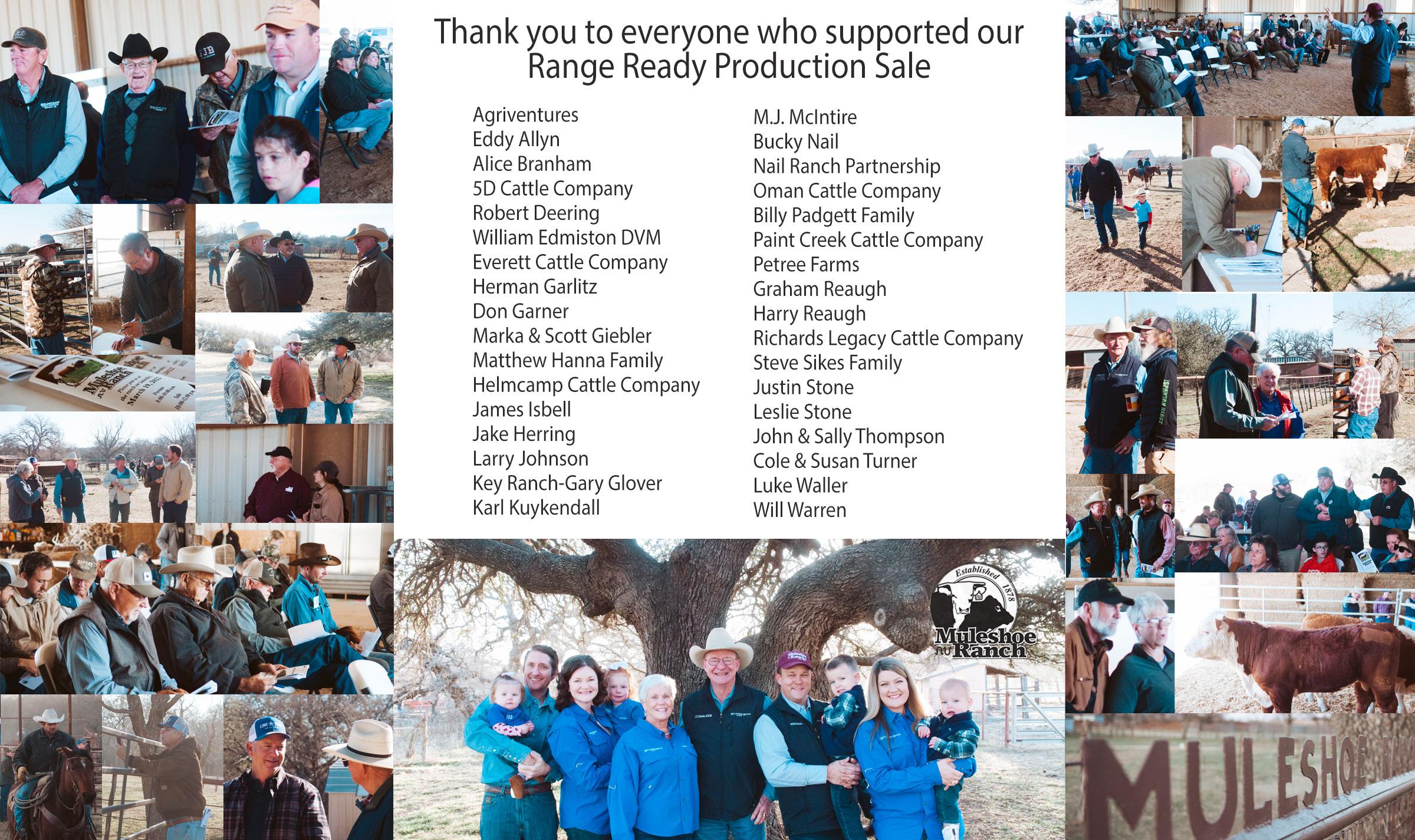
In addition, Thompson introduced the Chronic Wasting Disease Research and Management Act, which focuses on another important subject for the association. All three bills are currently pending in the Senate.
U.S. Rep.
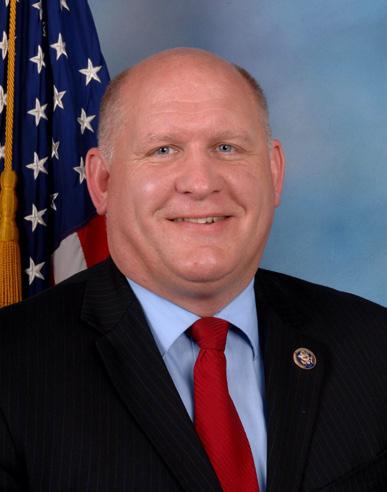
Glenn Thompson
Thompson is also vocal in his opposition to administration actions on WOTUS, SEC greenhouse gas reporting, misguided market reforms and others that will unfairly burden agriculture producers.
As a ranking member of the House Committee on Agriculture, Thompson is a vocal advocate for American cattle producers.
If Republicans regain the majority in the House, as many predict, Thompson is in line to become the chairman of the House Committee on Agriculture at a critical time. During the next Congress, the committee will tackle a new farm bill, among other important issues. T C
Jaclyn Roberts joined the Texas & Southwestern Cattle Raisers Association July 5 as the executive director of communications and marketing, bringing nearly a decade of experience in policy communications, issues management and digital strategy.
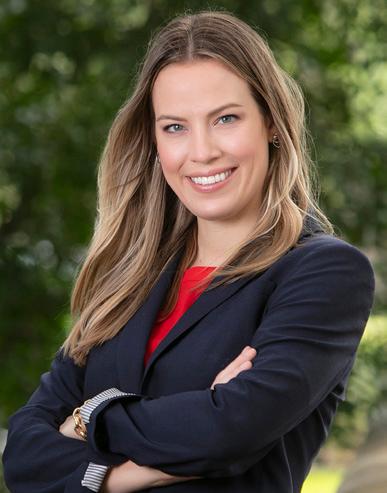
Roberts previously served as the director of communications and strategic partnerships for the Texas Agricultural Land Trust, and as the associate director of specialty communications for the National Cattlemen's Beef Association and the Public Lands Council.

She is an alumna of Texas Tech University where she received undergraduate and graduate degrees in agricultural communications.
The TSCRA Summer Meeting was held June 9-11 in Santa Fe, New Mexico, hosting just under 200 attendees for meetings, meals and comradery.
The summer meeting serves as a launching pad for Texas & Southwestern Cattle Raisers Association policy committees to determine priorities for the upcoming spring legislative session. The cattle health and wellbeing committee, marketing and transportation

committee, natural resources and wildlife committee, and property rights and tax committee each met with leading industry speakers to set guidelines for legislative staff on key policy issues.
The event was highlighted by keynote speaker Susana Martinez, former New Mexico Governor, named in Time Magazine’s Top 100 Most Influential People in the World.
Summer meeting concluded in an outdoor dinner reception catered by Perini Ranch Steakhouse of Tuscola.
The 2023 TSCRA Summer Meeting will be held next June 8-9 in Marfa.
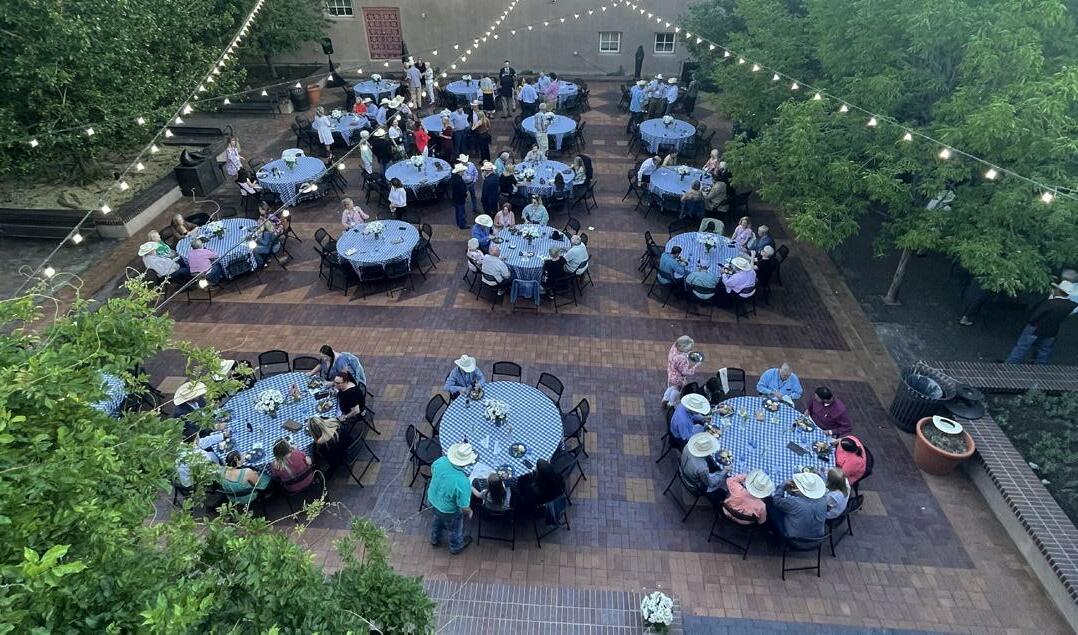
TSCRA Policy
Texas & Southwestern Cattle Raisers Association invites you to attend the 2022 TSCRA Policy Conference Sept. 12-14 at the Omni La Mansion del Rio on the riverwalk in San Antonio. Registration is open. Early bird pricing and the hotel block ends Aug. 17.

The event will feature three keynote speakers discussing pertinent policy issues facing the state and nation. The association’s four policy committees and board of directors will meet to determine Texas & Southwestern Cattle Raisers Association’s stance on issues in the upcoming legislative session. In addition to committee members, the event is open to all ranchers, landowners and wildlife managers from across the country.
From border security to wildlife issues to animal health guidelines, the TSCRA Policy Conference will tackle big issues with big impacts for Texas agriculture.
Register for the event now by scanning the QR code below, or by emailing events@tscra.org. T C

12 p.m. – 5 p.m. Registration Open 4 p.m. – 5 p.m. Opening Session
5 p.m. – 6 p.m. Welcome Reception
7 a.m. – 5 p.m. Registration Open 8 a.m. – 9 a.m. General Session
9:15 a.m. – 10:45 a.m. Property Rights and Tax Committee Meeting
11 a.m. – 12:30 p.m. Cattle Health and Well-Being Committee Meeting
12:30 – 1:30 p.m. Luncheon, Keynote Session
1:45 p.m. – 3:15 p.m. Natural Resources and Wildlife Committee Meeting
3:30 p.m. – 5 p.m. Marketing and Transportation Committee Meeting
7 p.m. – 10 p.m. Evening Reception and Dinner, Briscoe Western Art Museum
7 a.m. – 9 a.m. Registration Open
a.m. – 10 a.m. Board of Directors Meeting
The membership of the Texas Auctioneer Association selected Troy Robinett, a Texas & Southwestern Cattle Raisers Association member, as president for the coming year. The election was held at the recent convention in Frisco.
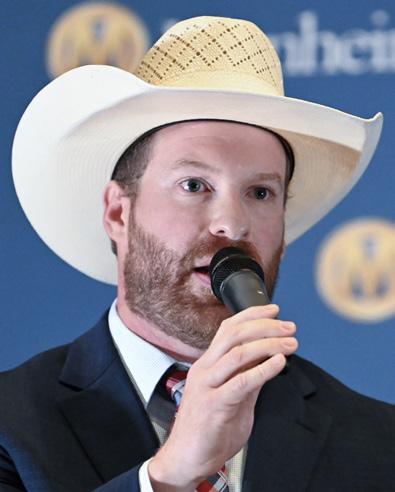
Robinett has served on the Texas Auctioneer Association board for eight years and was a cofounder of the associationsponsored Lone Star Open Bid Calling Contest, the highest paying auctioneer contest in the U.S. He and his wife, Amelia, and their two sons reside in Decatur.
Troy Robinett Texas Auctioneer AssociationA first-generation auctioneer, Robinett calls cattle sales, equipment sales and benefit events throughout the nation. He was named the 2014 Texas State Champion Auctioneer. He is a 2009 graduate of the Missouri Auction School and the benefit auction specialist course. He is president of Robinett Auction Services, a company focused on registered bull, production and commercial replacement female sales.
“The Texas Auctioneer Association has played an important role in my development as an auctioneer,” Robinett said. “I have been able to grow my business through the continuing education programs, networking with other successful auctioneers and establishing mentor relationships. I’m honored to serve in this position and have the opportunity to contribute and lead the organization.”
Since 1956, Texas Auctioneer Association has been actively promoting and enhancing the auction method of marketing. Today, the association serves its diverse membership by involvement in legislative issues to protect the auction industry, by offering extensive educational training and promoting the value of price discovery through auctions.
Robinett will be joined in leading the 65-year-old association with Jarod Hamm as president-elect; Doug Bradford, first vice president; Trey Galloway, second vice president; and Montie Davis, secretary/treasurer.
Applications are open for the 44 Farms International Beef Cattle Academy 2022-2023 online certification program. Applications for this comprehensive certificate program, offered through Texas A&M AgriLife Extension, are due Aug. 13.
“This world-class program has totally changed my way of thinking,” said Amanda Faver, New Mexico cattle owner and former academy participant. “I considered myself truly blessed that I got to do this program because you see it from a different perspective. All the emerging technologies, it is pretty amazing.”
The next academy begins in September 2022 and continues through August 2023. The program consists of seven courses with nearly 30 learning hours per course. Classes are taught online with prerecorded lectures. Course topics include cattle welfare and behavior; forage production and utilization; nutritional management and requirements; reproductive physiology and management; breeding and genetics; immunology and herd health management; and beef quality and safety.
Anyone involved in the beef cattle industry is eligible to apply. The International Beef Cattle Academy’s online learning format allows anyone from across the globe to participate. Class size is limited to offer an exclusive and customized learning experience.
In key locations across Texas, Oklahoma and New Mexico, Helena has branches staffed with people who can provide landowners, ranchers and wildlife enthusiasts with all their management needs.
For more information, contact your local Helena representative or visit HelenaAgri.com.
Scholarships are available, covering up to 70% of tuition costs. To be considered for a scholarship, complete the application process and provide the information required for scholarship request. Scholarships are limited and will be awarded based on student profile and potential contribution to the academy’s goal — advancing knowledge to enhance beef production and quality across the globe.
Scholarships are made possible in part by generous sponsors, including endowments from 44 Farms, Texas Department of Agriculture, Sydney and Buck Thomason of Indian Hills Brangus and the Santa Gertrudis Breeders International Foundation.
The Texas A&M University System’s Board of Regents recently named a much-decorated professor, Jeffrey W. Savell, Ph.D., as Vice Chancellor and Dean of Agriculture and Life Sciences for Texas A&M University.
Savell is a University Distinguished Professor, Regents Professor and the E.M. “Manny” Rosenthal Chair in the Department of Animal Science at Texas A&M. He earned his bachelor’s, master’s and doctorate degrees from Texas A&M. His appointment was effective June 6.
 Jeffrey W. Savell Texas A&M University
Jeffrey W. Savell Texas A&M University
Savell teaches the introductory course in meat science, as well as a freshmen class on Texas barbecue. He also leads a graduate course in carcass composition and quality, and team-teaches a graduate and undergraduate course in hazard analysis critical control point.
A past president of the American Meat Science Association, Savell is a member of the Meat Industry Hall of Fame.
“Dr. Savell is a highly recognized scholar who has been identified among the top 2% of most-cited researchers in the world,” said Texas A&M President M. Katherine Banks. “His impact and long tenure at Texas A&M includes teaching 12,000 Aggies and producing 150 graduate students who have become leaders in academia, industry and government.”
Ground has broken, quite literally, on a $19 million research initiative aimed at understanding how a farmer or rancher’s grazing management decisions impact soil health and, in turn, how soil health can positively impact land and producer well-being.
The inaugural field sampling took place on Noble Research Institute’s ranches in southern Oklahoma in April 2022 with a second sampling session completed June 29. Field sampling was also conducted in June at the Michigan sites, and a final sampling session is scheduled in August for the project’s Wyoming locations.
The collections are part of the Metrics, Management, and Monitoring: An Investigation of Pasture and Rangeland Soil Health and its Drivers, also known as the 3M project, one of the most robust investigations of ecosystem functions across time and space, diversity of landscapes, and gradients of management.
During each sampling session, researchers from Noble, Michigan State University, the University of Wyoming, Colorado State University and Quanterra Systems collect soil samples, perform water infiltration tests, assemble energy flux monitoring towers and take multiple vegetation measurements to tie back to satellite imagery.
These field samplings occur on the project’s intensive measurement sites at ranch properties owned and managed by Noble, Michigan State and the University of Wyoming. The samplings are only the first step in a project that will span six years.
“Farmers and ranchers will directly benefit from this project, and they will also be actively involved,” said Isabella C. F. Maciel, systems researcher at Noble and project co-lead. “Next year, we look forward to taking similar measurements at 60 producer-owned/managed sites located across Oklahoma, Texas, Colorado, Wyoming and Michigan.”
In addition to taking ecological measurements, researchers at Michigan State and Oregon State University will seek to understand socio-economic barriers to adoption of soil-health-related management in cow-calf operations. Understanding barriers will result in educational pathways for large-scale adoption of management principles leading to more profitable, resilient and productive ranches across the U.S.
The Foundation for Food & Agriculture Research awarded Noble Research Institute a $9.5 million grant to lead this critical research of pasture and rangeland soil health. Noble Research Institute is providing $7.5 million to this project, with additional financial contributions from Greenacres Foundation, The Jones Family Foundation and ButcherBox.
For decades, farmers and ranchers who have followed soil health principles have improved the overall health of their land. The connection to economics and improved producer well-being, however, have — to this point — been largely anecdotal.
The 3M project seeks to quantify these observations and examines how management decisions on grazing lands are connected to the overall health of the ecosystem, economics and the well-being of farmers, ranchers and land managers. T C
month’s
cattle do well at

difference to an
Texas & Southwestern
a moderated



auctioneers during the upcoming
be held Aug. 16 at 1 p.m.
line.
cover sale barn best practices.
Baumeister is the owner of Lampasas Cattle Auction and has participated in the World Livestock Auctioneer Championship. Christensen is the Producers Livestock Auction Co. general manager in San Angelo.
include the best and worst times to market during the year, ideal cattle condition at sale time and much more.


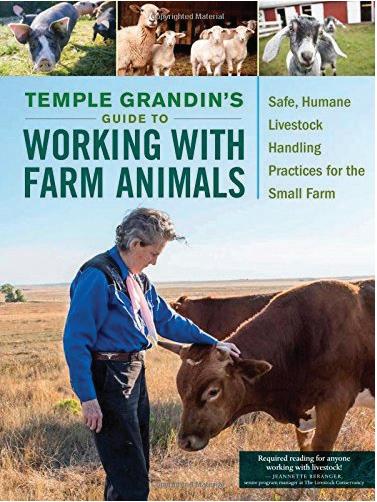
will be Andy Baumeister and Charley Christensen.
Interested attendees can scan the QR code to register for the hour-long Zoom webinar. T C

BODE GEORGE (BUCK) OWENS JR., 89, of Barnhart, died May 29. From the brim of his cowboy hat to the heels of his boots, Owens exemplified a true West Texas rancher.
He was born Sept. 3, 1932, to Bode and Edith Coffman Owens, and attended school in Barnhart, where his years revolved around basketball. He eventually carried his love of the sport to Sul Ross State University, and split his time between the gym and the roping arena.
While there, he met his wife, Janet Pauley, and the two were married Oct. 10, 1953. After graduation, they made their home on the family ranch southwest of Barnhart.
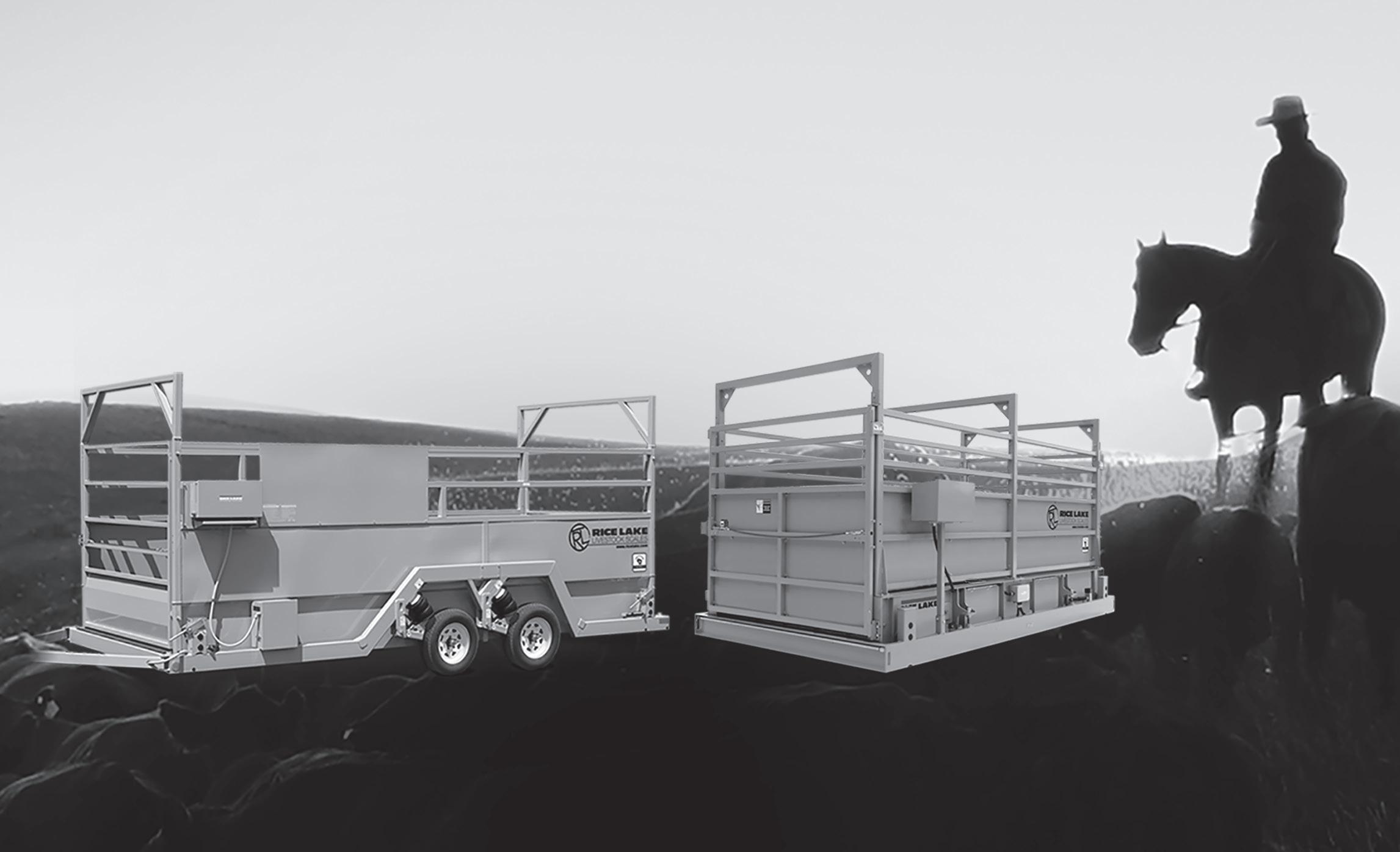
Over the years, Owens served as president of West Texas Boys Ranch and the San Angelo Stock Show & Rodeo. He was a member of Texas & Southwestern Cattle Raisers Association and named the 2005 Outstanding Conservation Rancher in Crockett County, as well as the Outstanding Rangeland Stewardship Award Winner in 2019.
Owens is survived by his wife, Jan, of 69 years; son, Rusty, of Big Lake; daughter, Mitzi Drennan (Brent), of Mason; son, Mickey (Laure), of Monahans; brother, Tommy (Edra Ann) of Rankin; seven grandchildren; and 11 greatgrandchildren.

Join or renew your membership today.
Member benefits include the support of TSCRA Special Rangers, government relations advocacy, educational programs, networking and social events, member-only discounts, The Cattleman magazine and phone app, and insurance services.
To learn more about membership, scan the code above or visit TSCRA.org.


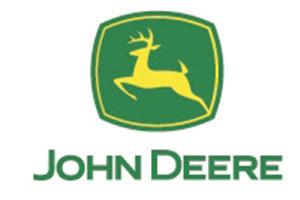



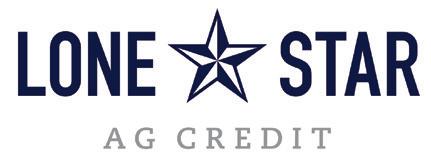


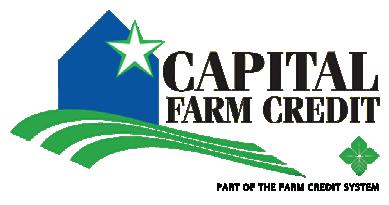

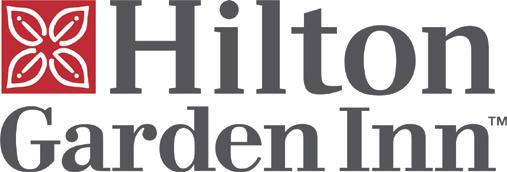

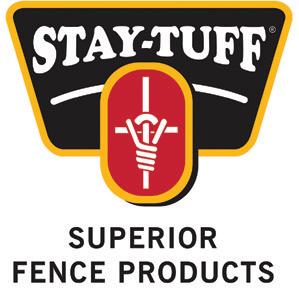
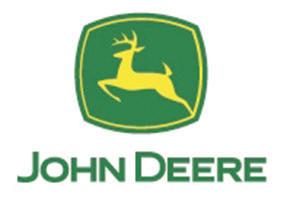


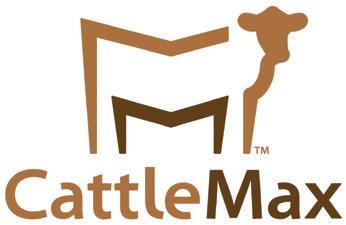
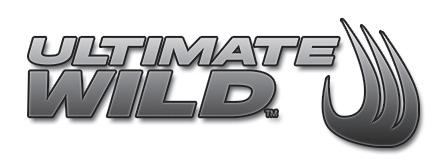

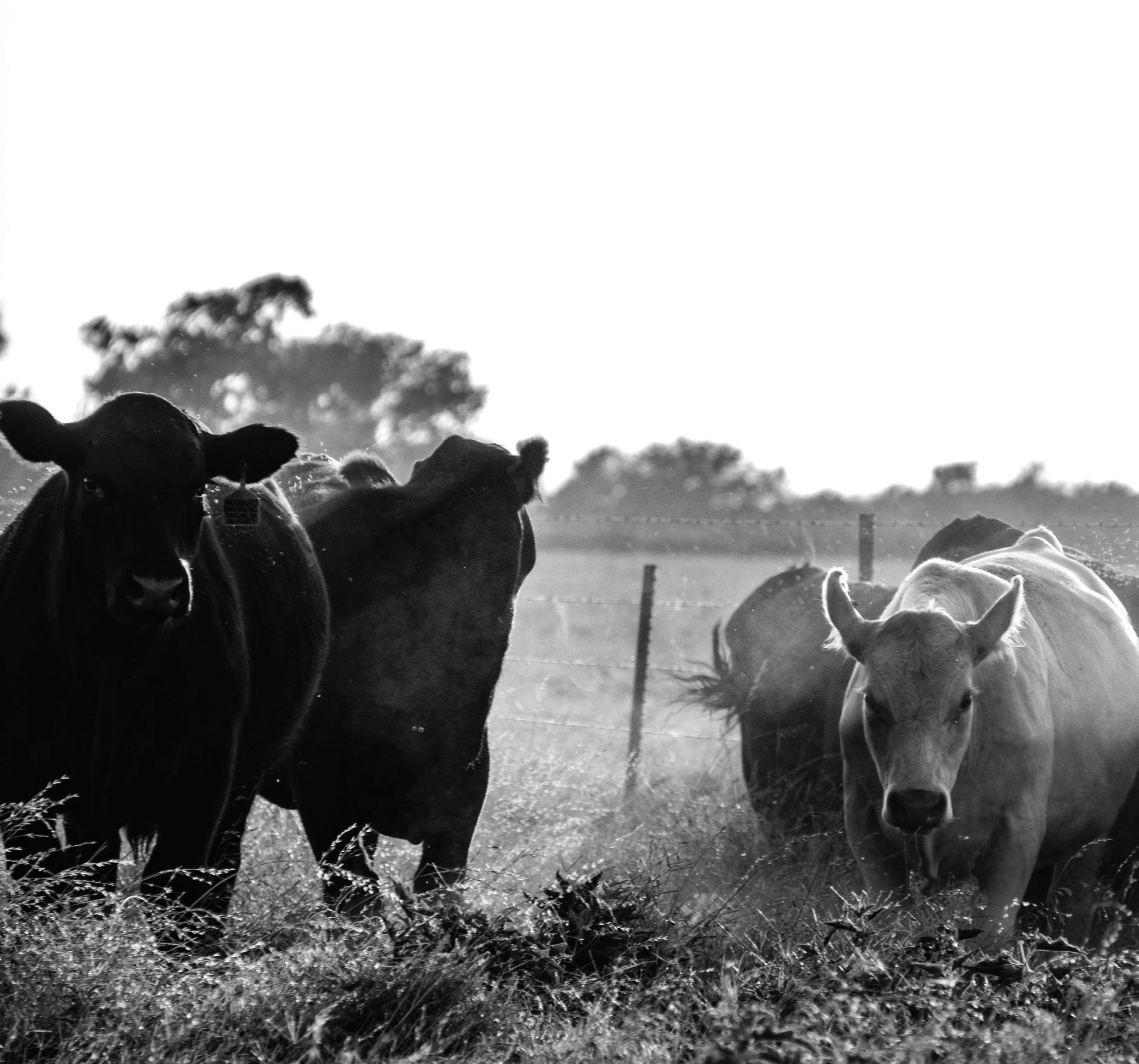
Cameron Ross Irons arrested and charged for theft of a horse.
Cameron Ross Irons, 32, was apprehended May 24 on an arrest warrant for larceny of domestic animals after criminal charges were filed by Texas & Southwestern Cattle Raisers Association Special Ranger Bart Perrier.
Irons was reportedly charged with one count of larceny of domestic animals (horse) from a victim near Ponca City, Oklahoma, within rural Osage County. The victim initially reported this case to Oklahoma Department of Agriculture Special Agent Ryan Hensley who initiated the investigation. At that time, Hensley contacted Perrier and requested assistance. Hensley recovered the stolen horse in Noble County, where the horse was allegedly sold by Irons.
According to Perrier, on March 3, Irons stole the victim’s dark brown gelding from a rural address and later sold the horse for $3,500. Irons had access to the horse in question that belonged to the victim, identified as Iron’s brother, who was the sole owner of the horse for several years. The victim noticed the horse was missing April 15 and initiated the investigation with Hensley.
On May 11, Hensley obtained an arrest warrant for Irons in the District Court of Noble County for knowingly concealing stolen property. This warrant was issued after Hensley recovered the stolen horse and was unable to locate Irons to interview him over the allegations.
Irons was located and arrested that day, by Perrier and Hensley, for the Noble County arrest warrant. After his arrest, he was interviewed and Perrier submitted the case investigation and an affidavit for the arrest warrant for larceny of domestic animals (horse) to the Osage County District Attorney’s Office.
On May 24, Irons was arrested on the Osage County felony warrant and was booked into the Osage County Jail on a $50,000 bond.
The stolen horse in this case was recovered and returned to the victim, and the buyer of the stolen horse will be seeking financial restitution through the district court.
Texas & Southwestern Cattle Raisers Association and the special rangers would like to thank the Oklahoma Department of Agriculture for their joint effort in the investigation.
Robert Ray Snow signed a guilty plea to multiple cattle thefts dating back to 2015.
On June 16, Robert Ray Snow, 49, pleaded guilty to one count of third-degree felony theft of livestock in Wood County. Snow, a resident of Garvin, Oklahoma, signed a guilty plea for five years deferred adjudication probation, payment of court costs and $57,983.74 in restitution to Winnsboro Livestock & Dairy Auction.
Snow was charged after he failed to make payments and issued bad checks for multiple cattle purchases at an auction September 2015 through March 2016. The previous prosecutor halted the case due to Snow filing bankruptcy.
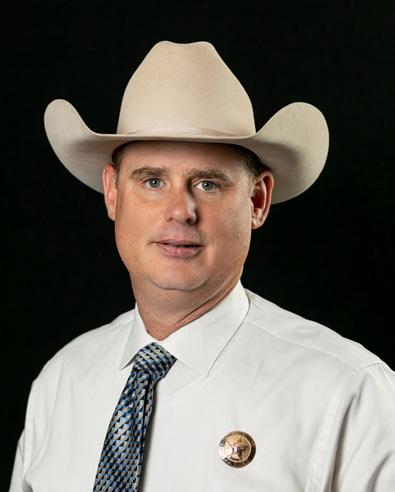
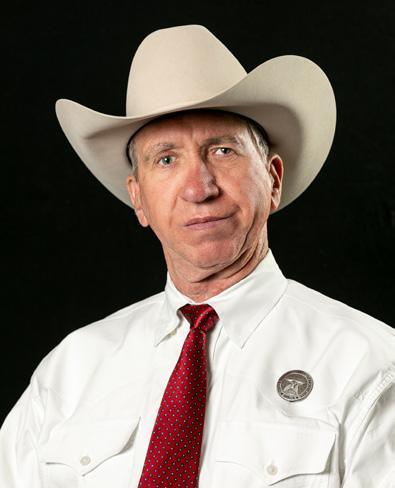
Upon taking office in 2019, District Attorney Angela Albers reviewed legal statutes and lawfully renewed the prosecution of Snow. Texas & Southwestern Cattle Raisers Association Special Ranger Larry Hand led the investigation with assistance of fellow Special Ranger Bo Fox and retired Special Ranger Toney Hurley.

“This has been a long process, beginning in 2016,” Hand says. “Due in great part to District Attorney Albers and her staff, the victim literally had his say in court and a proper judgement was handed down. The livestock industry continues to be protected by special rangers.”
Texas & Southwestern Cattle Raisers Association and its special rangers would like to thank District Attorney Albers for her diligence and joint effort in this case.
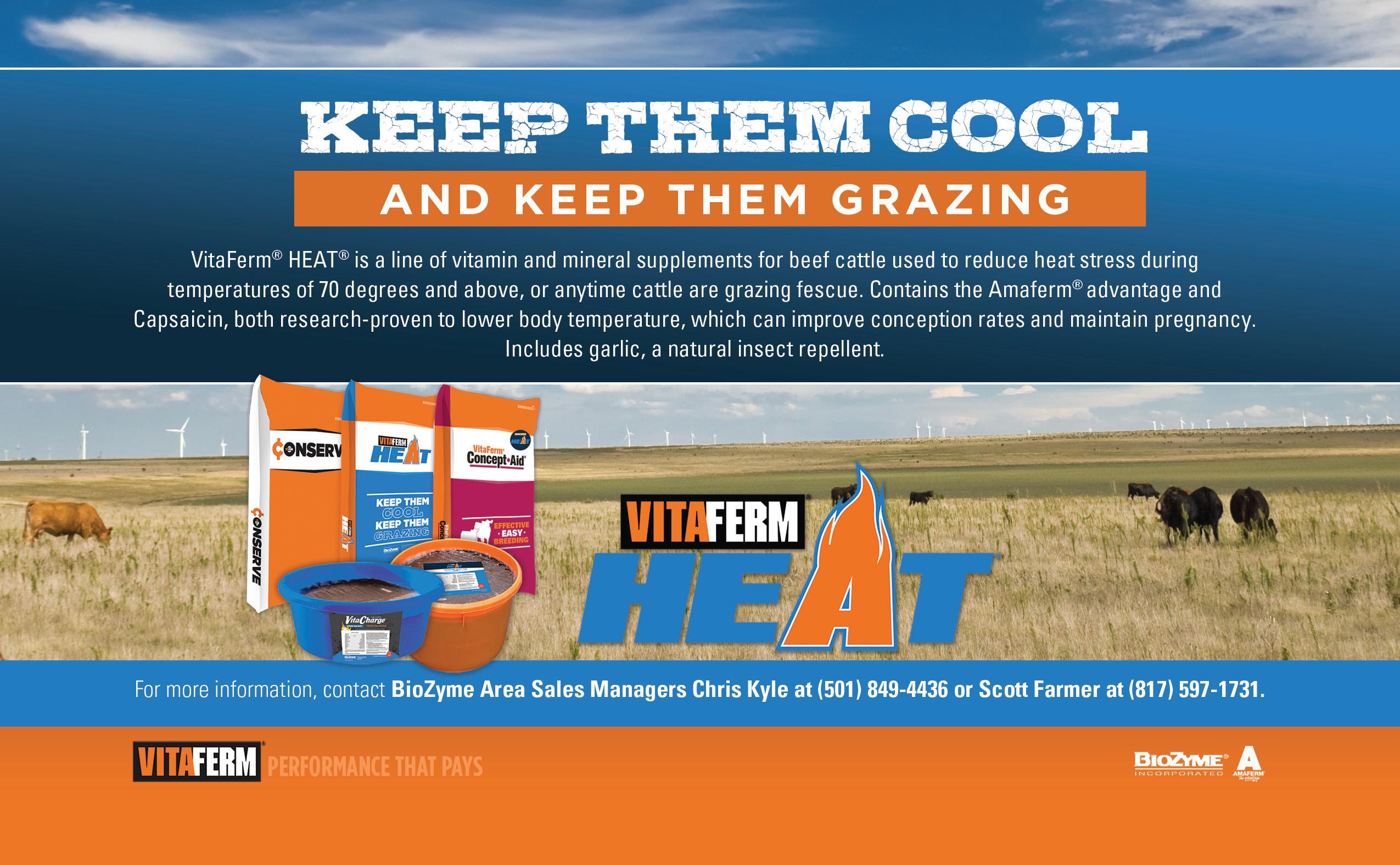
In March, an owner of the Brenham Livestock Auction Barn noticed a suspicious seller brought in a group of calves with both ear tips notched. Texas & Southwestern Cattle Raisers Association Special Ranger Kenny Murchison was called to investigate the situation and found no reports of missing calves matching the sale barn’s description.
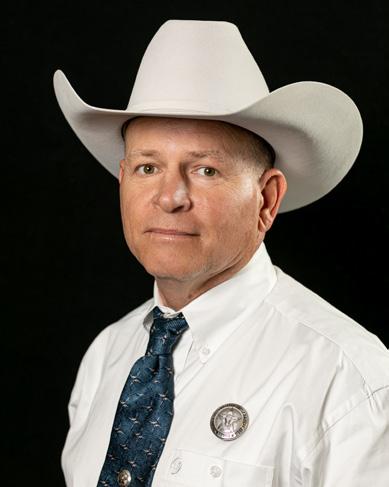
During the investigation, Murchison showed the rancher a picture of Wilbur Jackson, the man who sold the calves at the Brenham Livestock Auction Barn. He confirmed Jackson had been working for him for several years.
Murchison sent a report to special rangers in the area to check auction barns for a group of 11 calves recently sold by Jackson. Texas & Southwestern Cattle Raisers Association Special Ranger Brent Mast notified Murchison of a group of calves that sold on May 7 by Jackson at the Navasota Livestock Auction. The auction barn video revealed Jackson indeed sold calves matching the description of the reported missing calves.
After Murchison obtained an arrest warrant for a probation violation, Jackson was arrested May 13 by the Lee County Sheriff’s Office where he remains in the Lee County Jail on a $250,000 bond.
TSCRA
On May 10, Murchison received a call from a Lee County rancher reporting 11 missing calves stolen from a locked pen four days prior. The rancher gave a description of his calves, including that both ear tips were notched. After speaking with the rancher and remembering the calves from the Brenham Livestock Auction Barn, Murchison discovered the calves sold from the March sale looked like some of the rancher’s calves, as well.
The Lee County Grand Jury indicted Jackson on two counts of theft of livestock. Due to Jackson’s criminal history, both charges were enhanced to first-degree felonies, and he was filed as a habitual offender.
Texas & Southwestern Cattle Raisers Association and Murchison would like to thank the Lee County Sheriff’s Office, Lee County Attorney’s Office, Special Ranger Mast, Brenham Livestock Auction Barn and the Navasota Livestock Auction for their joint effort in the investigation. T C
Saddles stolen in Amarillo.
Texas & Southwestern Cattle Raisers Association
Special Ranger Chris Ward reports two 16-inch seat saddles stolen from the Tri-State Fair Grounds. One of the saddles is made by Bobby Burns with swells, cantle and skirts tooled in a floral pattern. The seat and fenders are roughout, natural colored leather and the owner’s name is under the edge of the seat. The second saddle, made by Jeff Smith, is dark brown in color. It has floral tooling around the edges of the seat, fenders and skirt, as well as on the swells and cantle. The saddles were stolen June 11 from a locked stall at the Bill Cody Arena. Anyone with information on this case is urged to contact Ward at 806-205-0119.
Trailer stolen in Cimarron County, Oklahoma.
Texas & Southwestern Cattle Raisers Association
Special Ranger Ben Eggleston reports a white 1997 C&M stock trailer missing near Wheeless, Oklahoma. Last seen around June 5, the 16-foot, single-axle trailer has “Faith Boyd, Miss Santa Fe Trail Days, Sweetheart 2014” written on the front sides. The VIN number is 49TSG1S12V1031380. Anyone with information on this case is urged to contact Eggleston at 806-852-4741.
Cattle missing near Stilwell.
Texas & Southwestern Cattle Raisers Association Special Ranger Bart Perrier reports one black cow-calf pair, one red cow-calf pair and one red cow missing from the Spade Mountain area in Adair County. Last seen in April, the missing cattle have yellow numbered ear tags in the left ear with Spade R branded on the cows’ left hip.
Calves missing in Osage County.
Perrier also reports two white steer calves, seven black heifer calves and one black bull calf missing near the Quail Hollow area of Osage County. The white calves weigh approximately 450 pounds, and the black calves weigh approximately 500 pounds. The missing bull calf is approximately 260 pounds. Last seen April 28, none of the calves are branded, but they all have orange or yellow ear tags. Anyone with information on these cases is urged to contact Perrier at 918-440-8360.
Cattle missing in Throckmorton County.
Texas & Southwestern Cattle Raisers Association
Special Ranger Jay Foster reports 18 black cows, a few Red Brangus cows and five black calves missing near the Bush Knob community. The cows range in age from 4 to 9 years old. The calves are approximately 500 pounds. All the missing cattle have a + brand on the left shoulder and were last seen in March. Anyone with information on this case is urged to contact Foster at 940-457-0295.
Cattle missing near Mineral Wells.
Texas & Southwestern Cattle Raisers Association Special Ranger John P. Bradshaw reports 22 mixed-breed sixyear-old cows missing. The cows are multi-colored, muley, horned and weigh approximately 1,200 pounds. Last seen April 20, the cattle have a 4T brand on the left hip and a 6 branded on the left thigh. Anyone with information on this case is urged to contact Bradshaw at 940-389-6123.
Trailer and tack missing near Gainesville.
Texas & Southwestern Cattle Raisers Association
Special Ranger Bo Fox reports a 2011 Calico bumperpull horse trailer and a Billy Cook roping saddle stolen. The trailer is a white, two-horse slant trailer with a front tack compartment and a “World Series of Team Roping” sticker on the back gate. The VIN number of the trailer is GA8B1320B1000438, and the license tag number is DXTZ58. The missing saddle has a 15.5-inch black suede seat with floral tooling and rawhide stirrups. The trailer and saddle were last seen May 20. Anyone with information on this case is urged to contact Fox at 903-348-9638.
Cattle missing near Crockett.
Texas & Southwestern Cattle Raisers Association Special Ranger Darrel Bobbitt reports two heavy-bred cows missing. Last seen around April 1, the cows are branded with a lazy S on their right hips.
Cattle missing near Groveton.
Bobbitt also reports 50 Black Hereford cattle missing. Last seen April 16, some are branded with D-T on the right hip and may have calves with them. Anyone with information on these cases is urged to contact Bobbitt at 936-222-2144.
Skid steer missing near Coleman.
Texas & Southwestern Cattle Raisers Association Special Ranger Joe Roberts reports a John Deere 329-D skid steer with a black Caterpillar 84-inch bucket
missing. The skid steer is yellow and black, and the VIN number is T0329DK1865. The equipment was last seen May 30. Anyone with information on this case is urged to contact Roberts at 325-669-1427.
Cattle missing in Howard County.
Texas & Southwestern Cattle Raisers Association Special Ranger HD Brittain reports six black heifers and two black steers missing. The calves weigh approximately 600 pounds and have no identifiable marks or brands. They were last seen May 23 before escaping the property through the fence.
Burglary in Schleicher County.
The special ranger also reports the burglary of a ranch house near FM 2084. Various household items were stolen April 10 at approximately 7 p.m. by a middleaged white male and a middle-aged female. The man is approximately 5’10” tall, 230 pounds and has facial hair. The woman is approximately 5’4” tall, 150 pounds and has long blonde or gray hair.
Sheep missing in Concho County.
Brittain also reports 30 unmarked lambs missing, last seen June 1. Anyone with information on these cases is urged to contact Brittain at 325-853-2062.
Saddle stolen in Bastrop County.
Texas & Southwestern Cattle Raisers Association
Special Ranger Kenny Murchison reports a Buck Steiner saddle taken from a barn off Sayers Road. Last seen May 16, the saddle has brown-tooled leather with red trim and an XS stamped on the fenders in red. Anyone with information on this case is urged to contact Murchison at 512-705-3226.
Cattle missing in Falls County.
Texas & Southwestern Cattle Raisers Association Special Ranger Steven Jeter reports 30 mixed-breed steers missing. Last seen May 15, the yearlings are approximately 500 to 600 pounds and have a turkey track brand on the left hip.
Horses missing near Gause.
Jeter also reports four Tennessee Walking horses missing in Milam County. The missing horses include one gray gelding, one buckskin mare and two sorrel mares. None of the horses have any brands or tattoos. Anyone with information on these cases is urged to contact Jeter at 936-335-2758.
ENDOVAC-Beef has been a Game Changer for me. I run a good sized cow-calf operation in addition to starting cattle. 100% of my cattle get ENDOVAC-Beef. Since using ENDOVAC we don’t have to treat as many cattle for respiratory, or even other common problems like pinkeye and foot rot. I am getting my Pasteurella and the stimulant that makes the vaccine work better with ENDOVAC-Beef. If everybody knew what I knew, everyone would be using it! Brad Haun, Haun Ranch, Fall River, Kansas
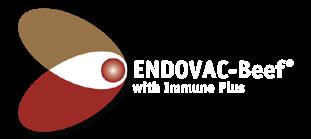

Tractor stolen near Cleveland.
Texas & Southwestern Cattle Raisers Association
Special Ranger Mike Boone reports a 2007 Kubota 9540 tractor missing with an attached Modern Ag 7-foot brush hog and a 5-prong hay fork. The tractor and attachments were stolen April 16 from the Cleveland area. The owner is offering a $5,000 reward for information leading to the arrest of anyone involved in the theft or for the return of the property. Anyone with information on this case is urged to contact Boone at 409-658-5725.
Equipment stolen near Victoria.
Texas & Southwestern Cattle Raisers Association
Special Ranger Robert Fields reports a 1994 Chevrolet dually 3500, a 2007 Artic Cat four-wheeler and four tires missing. Last seen June 15, the red, single-cab flatbed pickup has a VIN number of 1GBJK34N8RE154028. The four-wheeler, also red, has a VIN number of 4UFO7ATV97T206413.
Cattle missing near Nixon.
Fields also reports one 18-month-old Red Angus bull missing in Gonzales County. Missing since mid-May, the bull has a yellow ear tag with the No. 2011 and is branded with an upside-down triangle on the left rib.
Cattle missing near Waelder.
The special ranger also reports one yellow colored Charolais cross calf missing in Gonzales County. Last seen April 17, the calf is unbranded and weighs approximately 400 to 450 pounds.
Bull missing near Hallettsville.
Fields also reports a red Beefmaster bull missing in Lavaca County. The bull has a yellow ear tag with No. 5 on it and a rocking K brand on the left hip. The bull was last seen in late November or early December 2021. Anyone with information on these cases is urged to contact Fields at 361-207-5207.
DISTRICT 26 — CENTRAL TEXAS
Sheep missing near Llano.
Texas & Southwestern Cattle Raisers Association
Special Ranger Todd Jennings reports a ram, a ewe and a ewe lamb missing from Far West Road. The sheep have no identifiable marks and were last seen June 15.
Cow missing near Llano.
Also reported is one heavy-bred Black Angus cow missing. She has a yellow ear tag with the No. 2 in the left ear. The cow has possibly calved by now and was last seen May 31. Anyone with information on these cases is urged to contact Jennings at 830-997-7585.
Horse missing in Val Verde County.
Texas & Southwestern Cattle Raisers Association Special Ranger Tony Ashley reports a 15-year-old, registered American Quarter Horse missing. Last seen March 1, 2021, the blazed-face sorrel horse has white socks on the right legs.
Bulls missing in Frio County.
Ashley also reports three 5-year-old Brahman bulls missing from a pasture east of Pearsall. Two of the bulls are registered with the American Brahman Breeders Association. One bull has a half moon L branded on the right hip. The second bull is branded with an attached RV high on the left hip and a 78 over 1 below. The unregistered third bull is branded with a W high on the left hip. The bulls were last seen approximately five months ago after being turned out to pasture.
Tractor missing in Maverick County.
The special ranger also reports a John Deere 5410 tractor with a 520 loader and a round bale spike missing from a ranch approximately 23 miles west of La Pryor. Last seen May 16, the serial number of the tractor is LV5410S241085, and the serial number of the loader is W00520X017231.
Equipment missing in La Salle County.
Ashley also reports a black 2015 flat-bed trailer, a red 26-gallon air compressor and a 12-gauge Weatherby shotgun missing. The trailer model number is P8208, and the VIN number is 4P5P8202XF1235955. The serial number of the shotgun is TP068986. The missing items were last seen May 10. Anyone with information on these cases is urged to contact Ashley at 830-563-0555. T C
TSCRA offers a cash reward for information leading to the arrest and/or grand jury indictment of individuals for theft of livestock or related property. Anonymity is guaranteed. To provide information, call the Operation Cow Thief tip line at 817-916-1775.

looking at the philosophical approach and strategies, you start to see a common mindset amongst management of the most successful ranches, both large and small. With the experienced slate of ranch owners and managers presenting at this symposium, attendees will take away ideas and examples straight from the best minds in the industry!
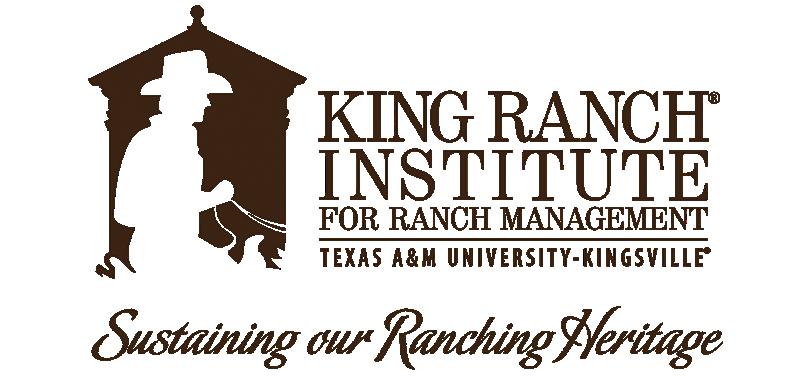


Date of Birth: May 21, 2000
Offense: Larceny of livestock
Date of Offense: Sept. 27, 2019; Dec. 13, 2019; Feb. 1, 2020; and Feb. 4, 2020
Victim: Joe and Shannon Wade
Location of Offense: Payne County
Plea: Guilty
Sentence: Six years, deferred adjudication
Fine: $500
Restitution: $5,500
Community Service: 80 hours with a non-profit or 50 hours with the CLEAN program
TSCRA Special Ranger: Bart Perrier
Date of Birth: Aug. 11, 1996
Offense: Theft greater than $2,500; less than $30,000
Date of Offense: Jan. 12, 2021
Victim: National Roper Supply/David Isham
Location of Offense: Wise County
Trial Date: March 2, 2022
Trial Court: 271st Judicial Court
Plea: Guilty
Sentence: Nine months, state jail
TSCRA Special Ranger: John P. Bradshaw T C
Antibiotic
100 mg of tulathromycin/mL
For use in beef cattle (including suckling calves), non-lactating dairy cattle (including dairy calves), veal calves, and swine. Not for use in female dairy cattle 20 months of age or older.
CAUTION: Federal (USA) law restricts this drug to use by or on the order of a licensed veterinarian. Before using Increxxa, please consult the product insert, a summary of which follows:
BRD – Increxxa Injectable Solution is indicated for the treatment of bovine respiratory disease (BRD) associated with Mannheimia haemolytica, Pasteurella multocida, Histophilus somni, and Mycoplasma bovis; and for the control of respiratory disease in cattle at high risk of developing BRD associated with Mannheimia haemolytica Pasteurella multocida Histophilus somni, and Mycoplasma bovis
IBK – Increxxa Injectable Solution is indicated for the treatment of infectious bovine keratoconjunctivitis (IBK) associated with Moraxella bovis
Foot Rot – Increxxa Injectable Solution is indicated for the treatment of bovine foot rot (interdigital necrobacillosis) associated with Fusobacterium necrophorum and Porphyromonas levii
Suckling Calves, Dairy Calves, and Veal Calves
BRD – Increxxa Injectable Solution is indicated for the treatment of BRD associated with M. haemolytica, P. multocida, H. somni, and M. bovis
Cattle
Inject subcutaneously as a single dose in the neck at a dosage of 2.5 mg/kg (1.1 mL/100 lb) body weight (BW). Do not inject more than 10 mL per injection site.
Table 1. Increxxa Cattle Dosing Guide
See product insert for complete dosing and administration information.
The use of Increxxa Injectable Solution is contraindicated in animals previously found to be hypersensitive to the drug.
WARNINGS
FOR USE IN ANIMALS ONLY.
NOT FOR HUMAN USE.
KEEP OUT OF REACH OF CHILDREN. NOT FOR USE IN CHICKENS OR TURKEYS.
Cattle
Cattle intended for human consumption must not be slaughtered within 18 days from the last treatment. This drug is not approved for use in female dairy cattle 20 months of age or older, including dry dairy cows. Use in these cattle may cause drug residues in milk and/or in calves born to these cows.
The e ects of Increxxa on bovine reproductive performance, pregnancy, and lactation have not been determined. Subcutaneous injection can cause a transient local tissue reaction that may result in trim loss of edible tissue at slaughter.
In one BRD field study, two calves treated with tulathromycin injection at 2.5 mg/kg BW exhibited transient hypersalivation. One of these calves also exhibited transient dyspnea, which may have been related to pneumonia.
Store below 25°C (77°F), with excursions up to 40°C (104°F). 100 mL: Use within 2 months of first puncture and puncture a maximum of 67 times. If more than 67 punctures are anticipated, the use of multi-dosing equipment is recommended. When using a draw-o spike or needle with bore diameter larger than 16 gauge, discard any product remaining in the vial immediately after use. 250 mL and 500 mL: Use within 2 months of first puncture and puncture a maximum of 100 times. If more than 100 punctures are anticipated, the use of multi-dosing equipment is recommended. When using a draw-o spike or needle with bore diameter larger than 16 gauge, discard any product remaining in the vial immediately after use.

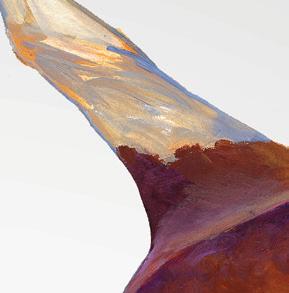
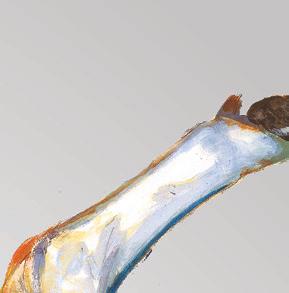








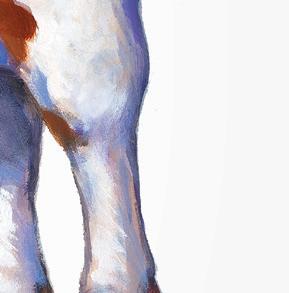
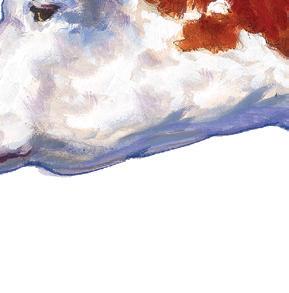






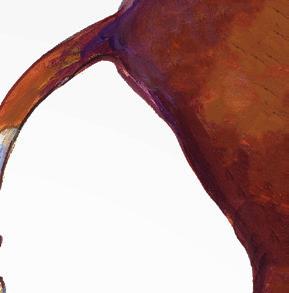



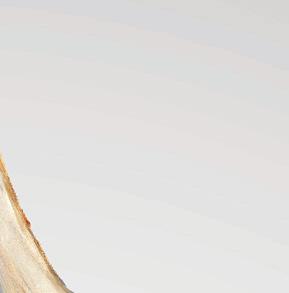



Balance your BRD protocol and budget with Increxxa™ featuring tulathromycin, the macrolide antibiotic you can trust to help your cattle breathe easier by fighting BRD. The addition of Increxxa to the extensive Elanco cattle portfolio provides yet another way to help combat BRD and help optimize herd health, efficiency and profit. As with all Elanco products, you can breathe easier knowing Increxxa is held to the company's uncompromising standards for potency, uniformity and quality.


Indication: Beef and Non-Lactating Dairy Cattle: Treatment of bovine respiratory disease (BRD) and control of respiratory disease in cattle at high risk of developing BRD associated with M. haemolytica, P. multocida, H. somni and M. bovis.





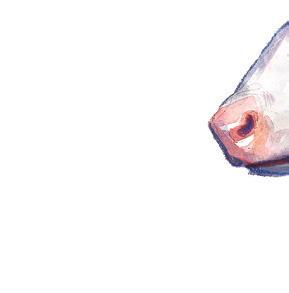






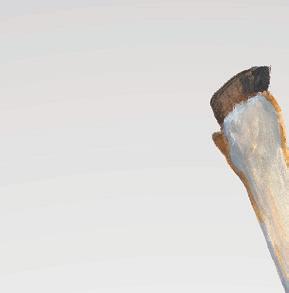







Not for human use. Keep out of reach of children. Do not use in animals previously found to be hypersensitive to the drug. Increxxa has a pre-slaughter withdrawal time of 18 days. Do not use in female dairy cattle 20 months of age or older.





Kinney County rancher, attorney shares a glimpse into the border crisis.
By Chrissy FlyFor those living on the frontlines, the border crisis has changed nearly every aspect of their lives.
Once rural places are now everyday targets for trespassing, property theft and other crimes. High-speed chases are commonplace on quiet main streets. Wideopen spaces are filled with helicopters; and come nightfall, residents lock their doors tight. Almost no one feels safe going outside.
These are first-hand experiences documented by Brent Smith, a Kinney County attorney and third-generation rancher, who was a recent guest on the Texas & Southwestern Cattle Raisers Association podcast, TSCRA Talk. He spoke with host Kristen Brown about the harsh realities of living along the southern border.
not have a port of entry into the U.S., it sees its fair share of people crossing the border — mainly single adult males.
Smith said there are people coming across the border from more than 120 different countries, not only Mexican citizens.
“In April alone, Border Patrol had 234,000 apprehensions,” Smith said. “Out of those people apprehended, that is only about 15% of the total people crossing the border.”
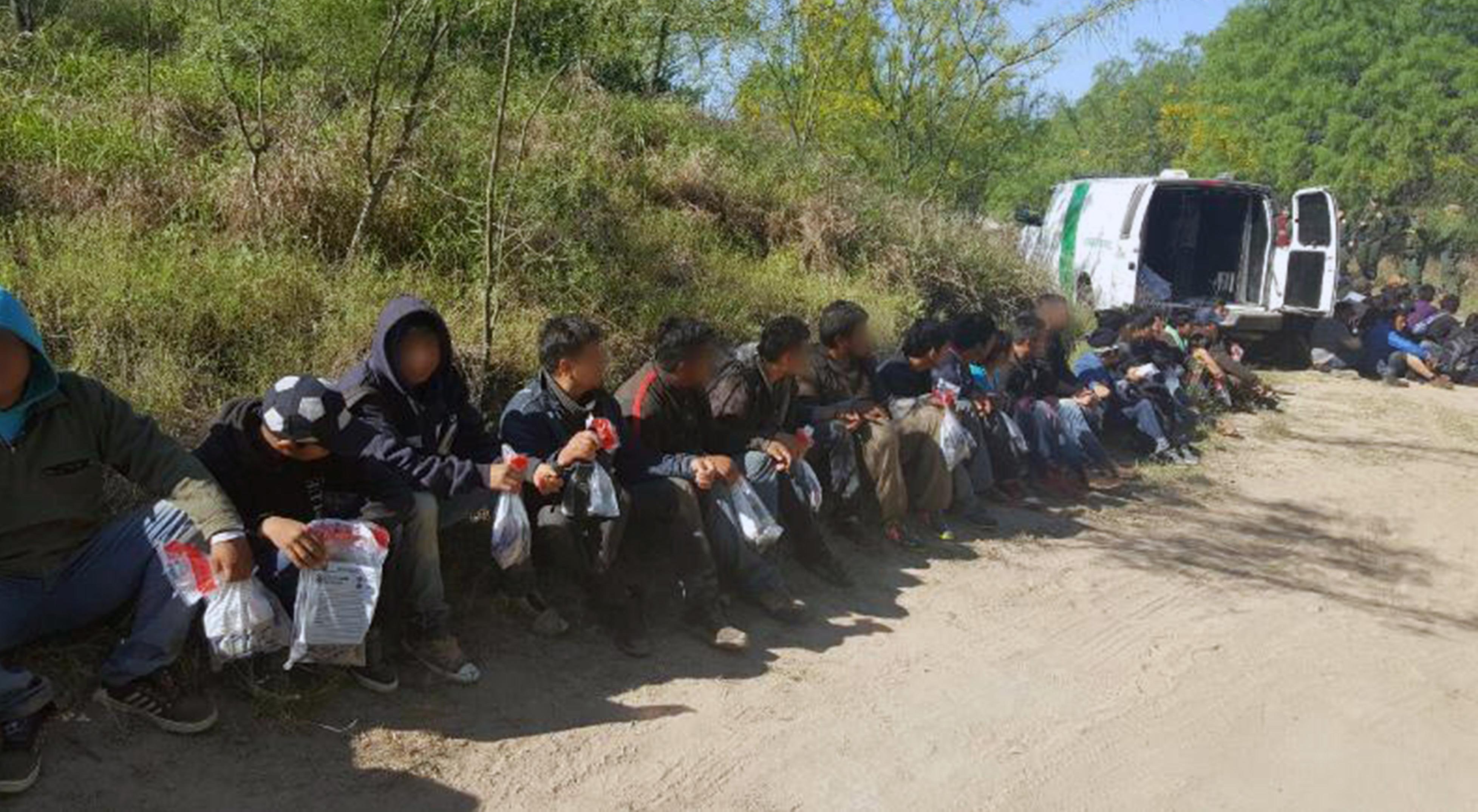
All ranchers he knows have experienced illegal trespassers on their property.
Brent Smith Kinney County Attorney
“Everyone down here calls it an active invasion,” Smith said. “Because when you have to live through it, that is what it feels like.”
Kinney County, of which Smith is a native, shares about 16 miles of border with Mexico. It’s about two hours west of San Antonio, and while the county does
“What we see every day is high-speed smuggling chases, bailouts and trespassing,” Smith said. “When law enforcement vehicles stop a suspected smuggler, the driver will start speeding off. Normally it results in a crash, or they drive through fences and ranches.”
Ranchers must check fences daily; going around their entire perimeter to make sure they are intact.
They also must keep a close eye on their water supplies. In some instances, people are going onto
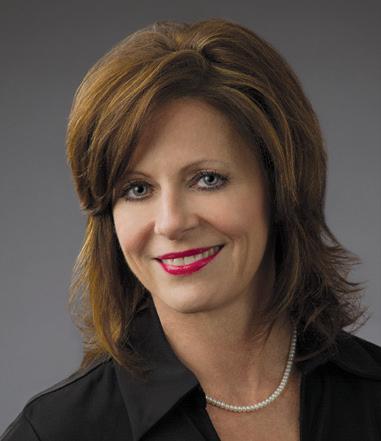

 Ortega
Ortega
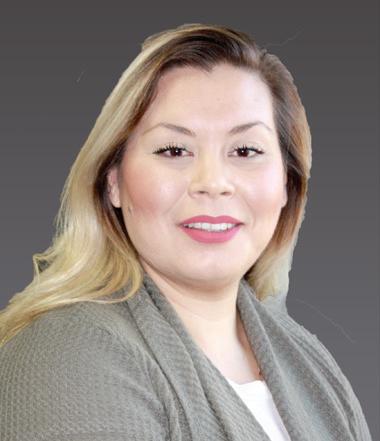
properties and drilling holes in water lines to get fresh water, leaving ranchers with no water pumping into their tanks.
Hunting leases are also being affected by illegal aliens. Many ranches have stopped selling hunts because their hunters are finding trespassers in their blinds, robbing their camps and stealing vehicles.
The solution to the crisis, he said, is putting economic pressure on Mexico to stop people from crossing the border. Once they enter Texas, Smith said it takes too many resources to apprehend illegal immigrants. Law enforcement officials are already so busy with processing, they can’t respond.
And Texas taxpayers are paying the price for this flood of illegal immigration.
“Attorney General Paxton came out with a lawsuit stating that every illegal alien in the state of Texas costs the state $34,000 per year,” Smith said.
Now is the time to speak up. He urged fellow cattle raisers to reach out to their elected representatives to hold them accountable for protecting the citizens of Texas.
“We have to focus on our state leaders,” Smith said. “I encourage people to check into their state representatives, call the governor’s office and encourage him to do more about the border and secure it for all Texans and the United States, as well.”
Texas & Southwestern Cattle Raisers Association members can also reach out to the organization’s border security task force for more ways to get involved in addressing the border security crisis.

To hear more of the conversation with Smith, download TSCRA Talk via Apple Podcasts, Google Podcasts, Spotify or Stitcher. T C
Chrissy Fly is a freelance writer and graduate student at Oklahoma State University.

Saturday,Aug.27@10:00a.m.–SanSaba
Saturday,Sept.24@10:00a.m.–SanSaba
Thursday,Oct.13@10:00a.m.–SanSaba
ReplacementFemaleSale
Saturday,Oct. 29@10:00a.m.–SanSaba
Offering quality pair, bred cows, bred heifers,
WEEKLY SALES
HELD AT 11:00 a.m.
Monday – Mason Thursday – San Saba Formoreinfoonabove salesoronlineviewing andbidding,pleasecall orvisitourwebsite.
was really pleased with Nelson ryegrass, the earliest we have ever started grazing after planting and the best hay crop we have ever had.
to Gulf, Nelson made over twice as much hay per acre. We are doubling our Nelson acreage next year. Nelson is easy and economical to establish and with todays cattle market, Nelson is extremely profitable

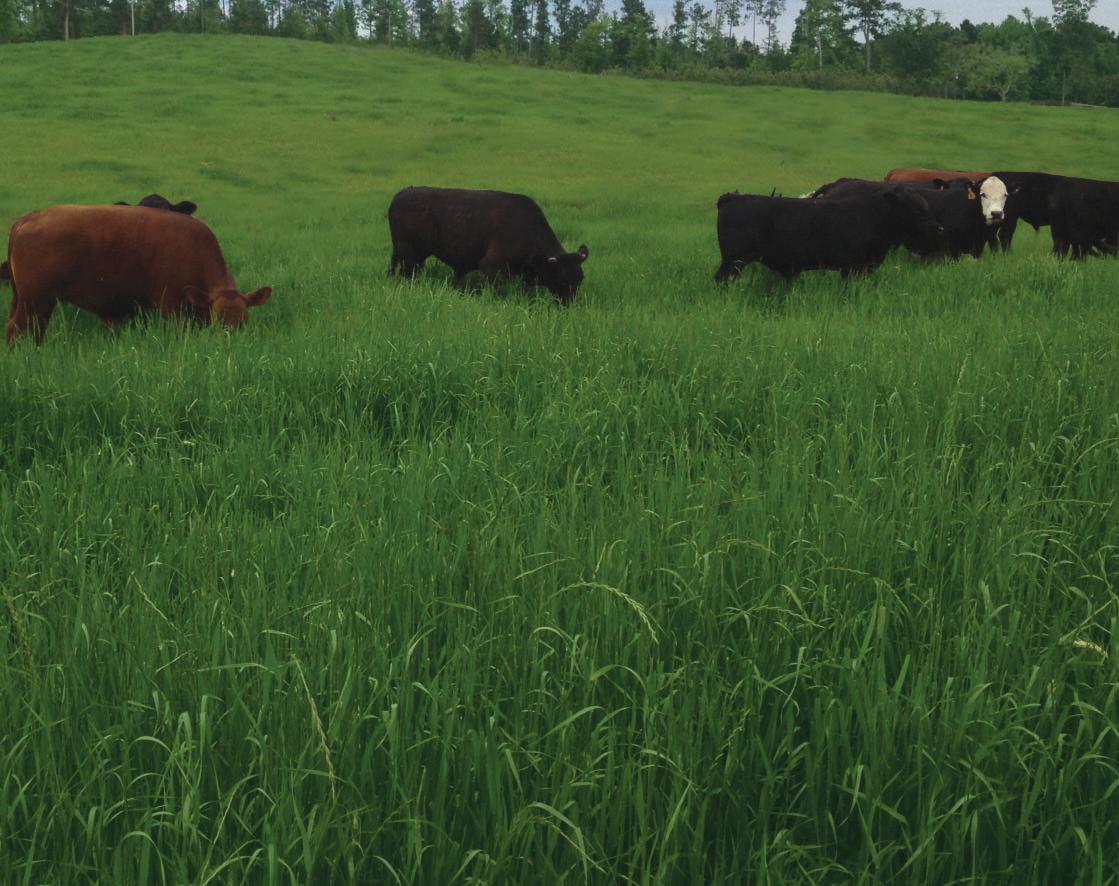
operation.”
John
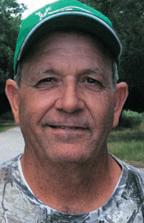

A checklist of priorities when facing prolonged dry conditions.
By Hugh Aljoe Photos courtesy of Noble Research InstituteFarmers and ranchers are no strangers to drought. Still, each dry spell brings its challenges.
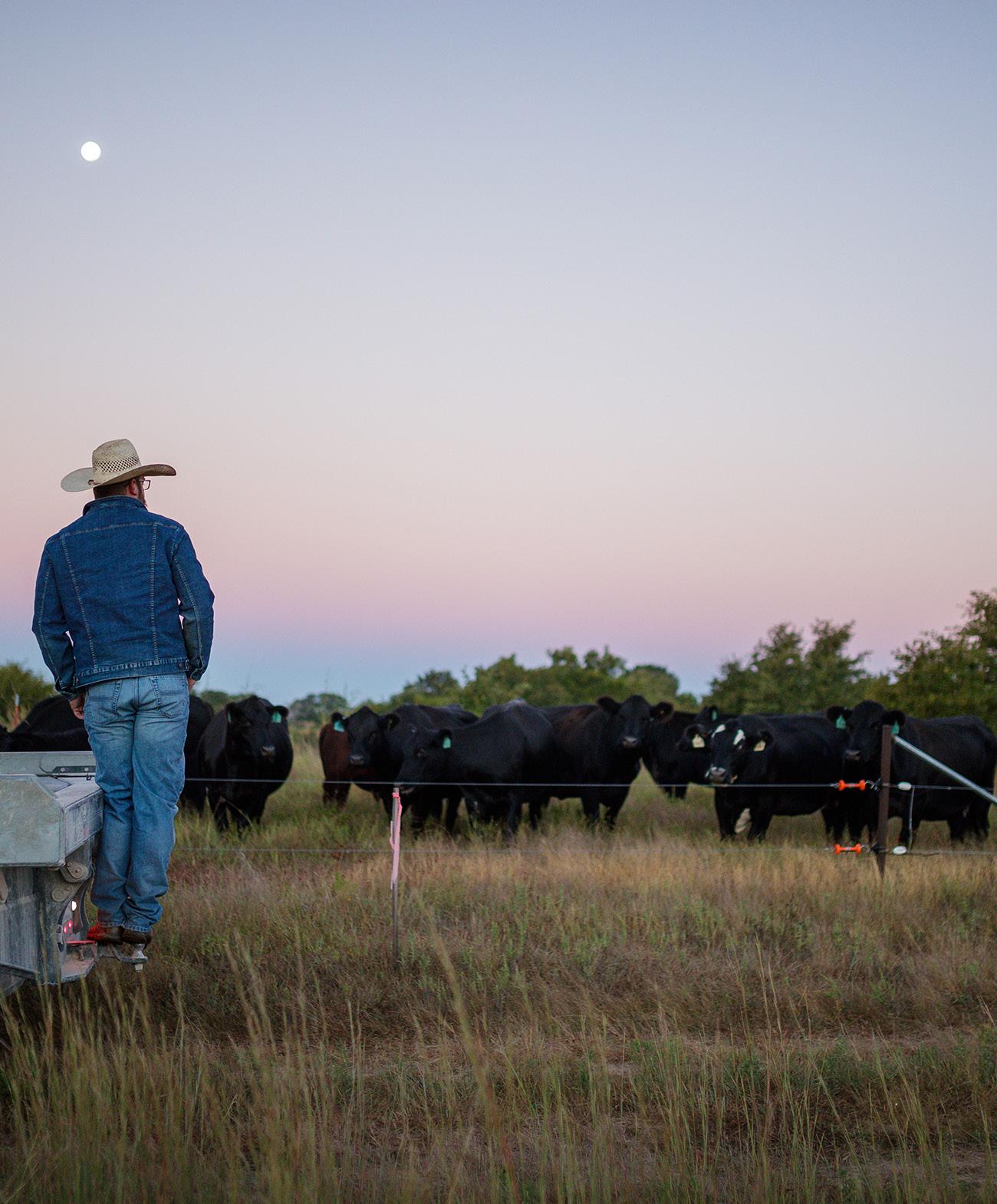
Across the board, Noble Research Institute agricultural consultants recommend producers and other natural resource managers keep strong records, evaluate their operations, plan for the future, and act accordingly at all times — but especially during drought.
On the next page, the institute’s consultants share their top tips and considerations to help producers deal with drought. Management areas of focus include economics, livestock, range and pasture, and wildlife and fisheries. T C
Hugh Aljoe is the director of producer relations and a pasture and range consultant for Noble Research Institute.
• As drought increases, cow prices historically decline.
• Supplemental feed costs historically increase during drought periods.
• Know production costs and keep close records to make better management decisions.
• Buying hay and feeding through a drought is never a good plan. On native range, hay should only be fed during inclement weather. On introduced pastures, hay use should be minimal — less than three months.
• Inventory water sources and determine if quantity is sufficient.
• Cull cows using the three O's: old, open or ornery.
• Determine hay needs and buy early before prices increase.
• Test hay to know the value.
• Without a spring flush, body condition score can decline in lactating cows eating hay only.
• If drought persists, consider early weaning. Once lactation ends, nutritional requirements of a cow will drop 15 to 20%.
• Consider finding new land to graze.
• $5 per mile for 500 miles equals $2,500 one way for a load of 40 head
• $125 per head for round trip trucking could be cheaper than feeding.
• As pond water draws down, the concentrated levels increase chances of leptospirosis and pseudorabies.
• Low quality pond water is less palatable to cattle and decreases gain.
• Watch for bogging in ponds with low water.
• As forages are grazed low, black leg cases increase due to cattle eating closer to the ground.
• If you're behind on rainfall from November to April, you are already in a drought.
• Match expected forage production with animal demand. If stocked at 100%, you're already overstocked.
• If rainfall for the year is 20 to 30% behind annual average by mid-May, a corresponding reduction in stocking rate warrants consideration.
• Maintain 6 to 8 inches of stubble height for native pastures and 3 to 4 inches of stubble height for bermudagrass pastures.
• If no stubble, you cannot take advantage of the rains we will get.
• If stubble heights get below these thresholds, it triggers the need for sacrifice pastures.
• Identify sacrifice pastures that are:
— Introduced pastures.
— Lower quality.
— Not highly erodible.
— Close to the house or barn to cut down on travel.
— Have a good source of water.
• Cattle still graze standing forage when they are fed hay, which is why sacrifice pastures are important.
• If forage is needed for cattle, postpone prescribed burning.
• Isolate where purchased hay is fed to reduce chances of bringing in invasive species.
• More bare ground from overgrazing can mean more grasshoppers in the summer.
•
Feral hogs will come to bait during drought better due to low natural foods available. This makes it easier to trap them.
• Reduce livestock stocking rates so wildlife habitat is not negatively affected.

• Low water levels make it easier and more affordable to renovate fish populations and provide opportunities to renovate and rebuild ponds.
• Low water levels in ponds can increase the chances of fish kills during the summer.
• If feeding wildlife, only use feed that is tested for mycotoxins, which can increase during drought.
• Do not drain wetlands until April or May to provide food for migrating birds as they head to the breeding grounds.

Texas & Southwestern Cattle Raisers Association members from Jack County, Steve and Becky Collins, have been looking for a way to increase their marginal revenue. They’ve been considering direct marketing of their beef.
But they had many questions and a lot of research to do before they got started.
While attending the Cattle Raisers Convention & Expo earlier this year, they listened to a direct marketing program by Texas A&M AgriLife Extension Service’s Justin Benavidez, economist, and Tiffany Lashmet, agricultural law specialist, both with the Texas A&M Department of Agricultural Economics in Amarillo.
It was enough to make them know attending the daylong “Where’s the Beef? Legal and Economic Considerations for Direct Beef Sales Businesses”
AgriLife Extension program in Amarillo would be a drive worth making.
The program included Benavidez, Lashmet and Jade Cooper, AgriLife Extension meat specialist in the Texas A&M Department of Animal Sciences, and a panel of producers already marketing their beef.
The “Where’s the Beef?” program is hosted by AgriLife Extension and the Texas A&M Department of Agricultural Economics and funded by Southern Risk Management Education Center and Texas Cattle Feeders Association.
More than 50 people registered for the Amarillo program. At least 20 of them reported already being involved in direct beef sales, but were looking for more guidance. Attendees came from as far away as East Texas, far West Texas and eastern New Mexico. In their exit evaluations, all said they would recommend the program to a friend.

The program will be repeated Aug. 26 in Brenham. To register, visit washington.agrilife.org/ag/beef. Lashmet and Benavidez advise registering early, as the Amarillo event filled up fast, and there will be limited seating in Brenham.
Steve said they started out low on the learning curve and definitely needed more information to evaluate upsides and pitfalls of direct beef sales and marketing.
“What this program offers us is a knowledge base and method of evaluating whether and how to begin direct beef sales,” he said.
“By attending this meeting, we hear not only from the speakers but also from other participants who have experience in direct beef sales,” Becky said. “That has been very valuable.”
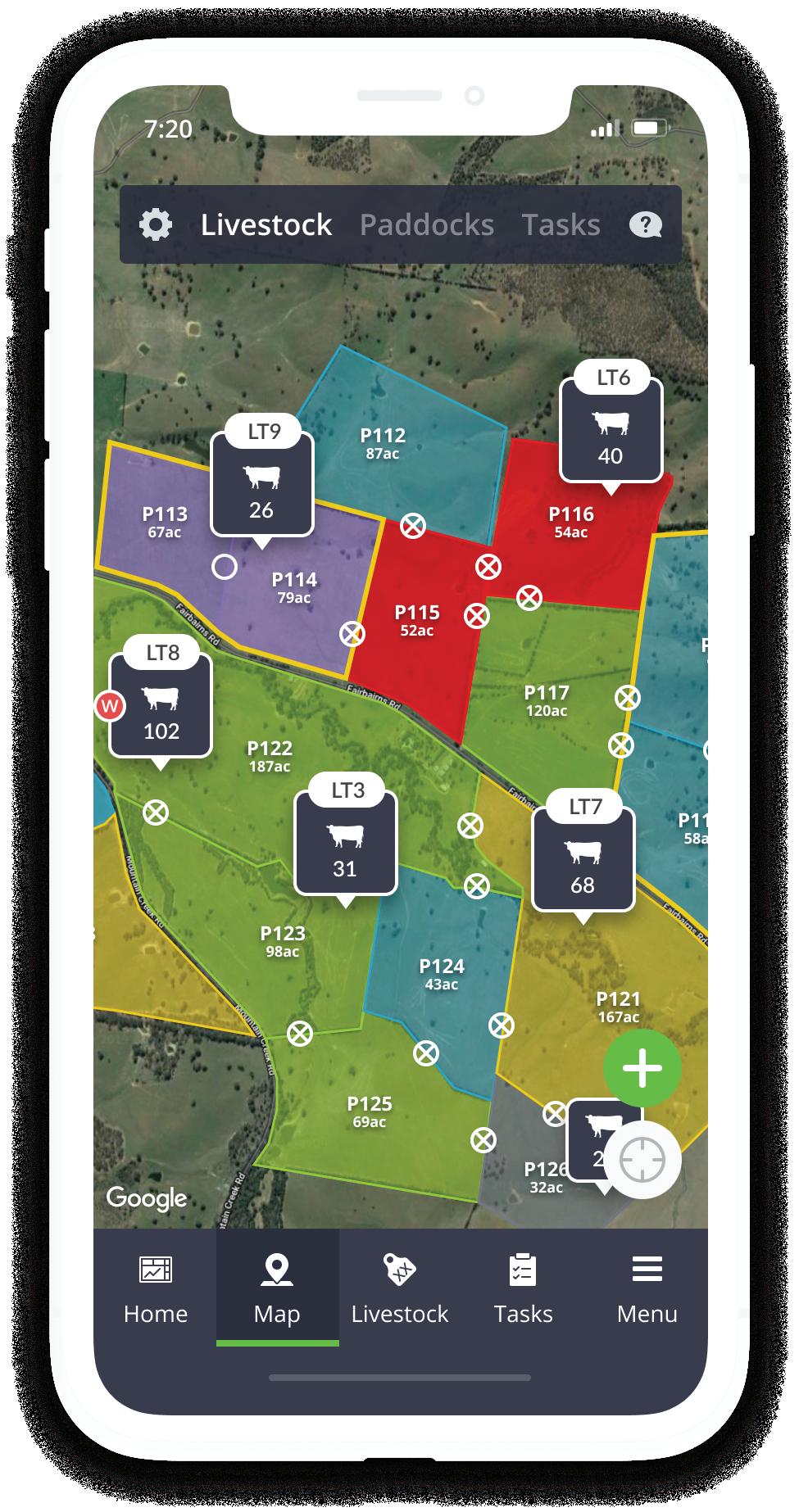
With AgriWebb, you can go beyond basic record keeping and transform everyday on-ranch data into powerful real-time insights that help you run a more profitable, efficient, more sustainable operation.
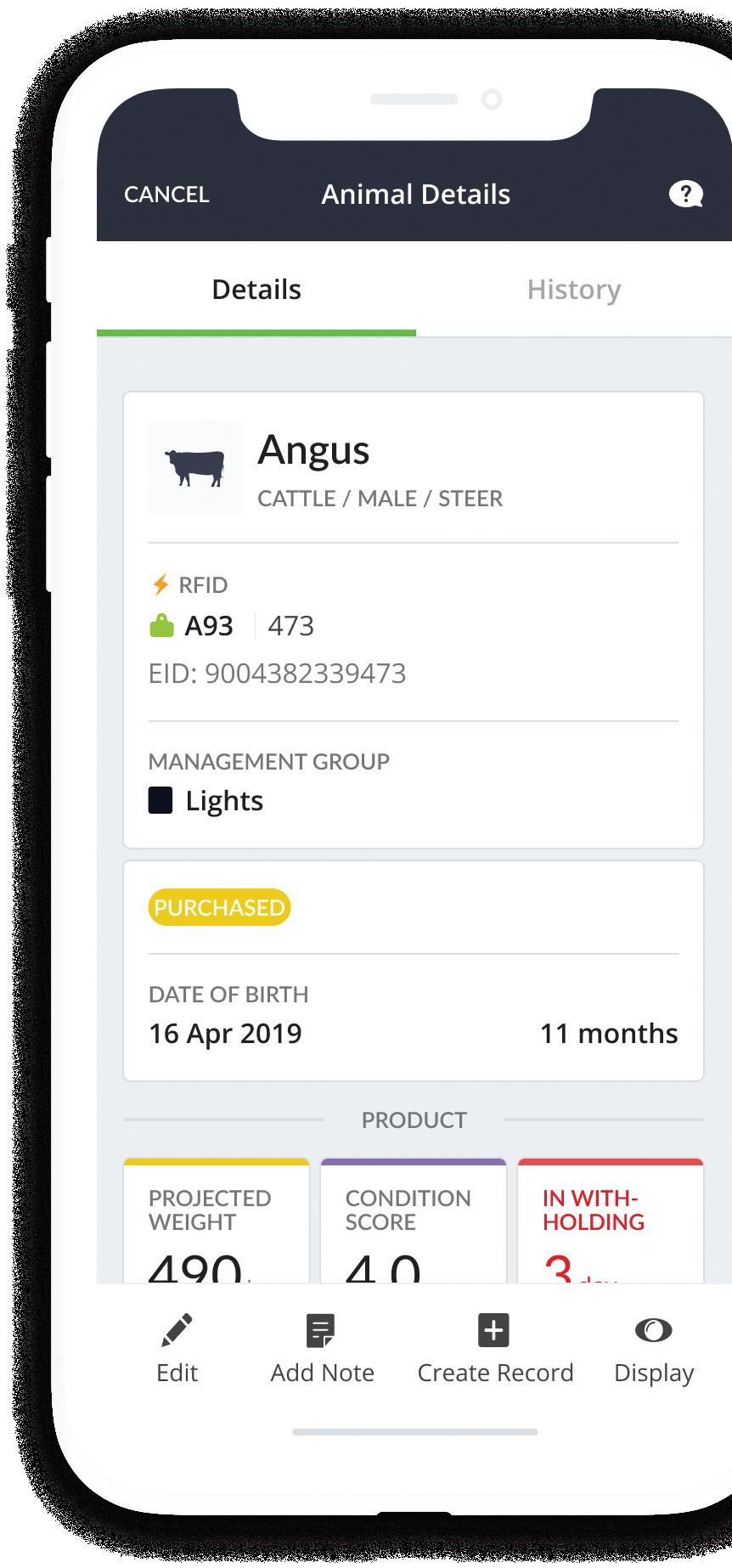
See your entire ranch, from anywhere
Manage ranch records online or offline, from any device
Know your real-time cost of production
Ensure the sustainability of your land and your future

Ready to take your future by the horns?
Check out AgriWebb now.
The program included representatives of 111 Beef Republic, which specializes in grain-finished beef in Bridgeport; Foote Family Meats, which sells frozen beef available for nationwide shipping or local pick up in Clovis, New Mexico; and Bell Road Beef, raising beef in Clayton, New Mexico, and shipping directly to customers.
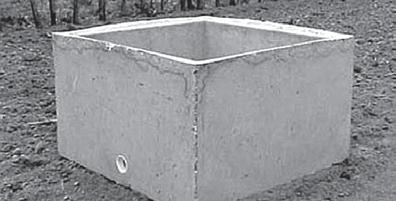
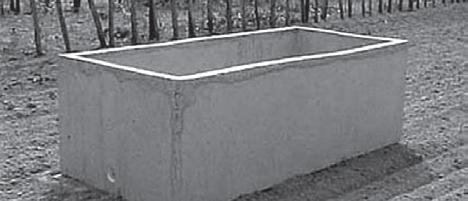


Lashmet added that the three producer panel members who participated in the program provided extremely helpful insights to participants.
“I don’t think there is anything more valuable than getting to hear from people actually doing the thing,” she said.
The Collins couple said they know even if they started today, it would take a year or more before they would have any sales. The “Where’s the Beef?” program covered many aspects they would need to consider before opening for business.
During the program, the speakers touch on a wide variety of topics useful in developing a direct-toconsumer beef marketing business.
Cooper focuses on the process of converting a harvested beef animal into specific products, consumer preferences for different beef products, and some of the attributes of live animals and production processes impacting beef quality.
Lashmet breaks down the importance of harvest facility selection, outlines the licenses required for different sales methods and highlights the importance of liability protection.

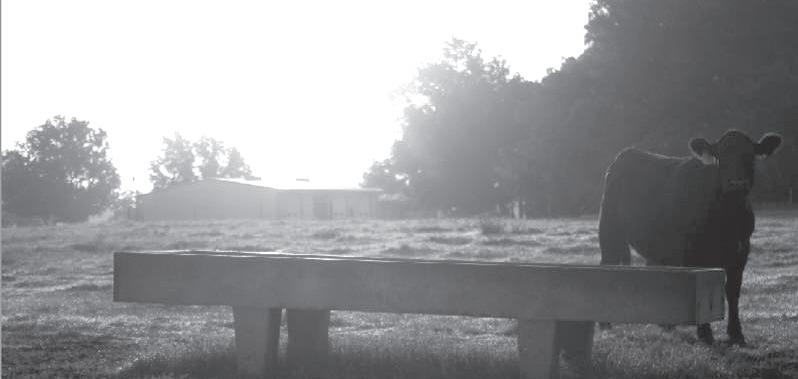
Benavidez discusses budgets for different parts of the business, including the costs and benefits of different strategies. He also provides an update on market expectations for the future.
Attendees receive a free hardback book that accompanies the training. And a downloadable version of the book will be available on Benavidez’ Amarillo AgEcon blog or Lashmet’s Texas Agriculture Law blog for those who have not attended the program. T C
Kay Ledbetter is a communications coordinator for Texas A&M AgriLife Extension.
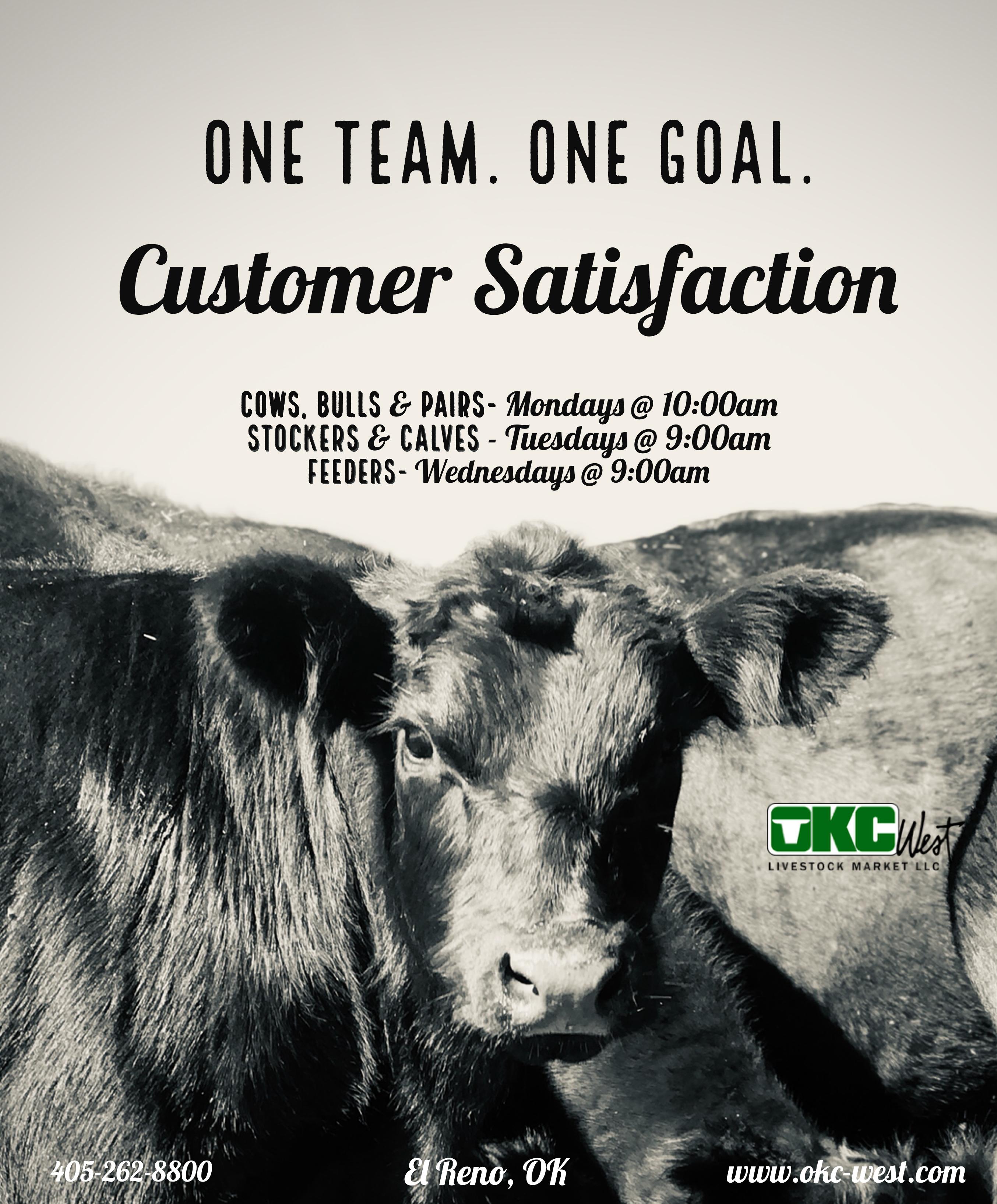
Arizona Black Walnut is a deciduous native tree found growing in Texas, New Mexico, Arizona and Mexico. Also known as Arizona Walnut and Nogal silvestre, it is usually found growing in riparian areas close to creeks, streams and rivers.

This tree:
Most often has one single trunk up to 50 feet tall, sometimes more in bottomland sites. If found upland, it’s roughly half that size.
• Has grayish-brown bark with deep fissures dividing broad flat scales.
• Has odd-pinnately compound leaves 7 to 15 inches long, with 9 to 15 leaflets. The leaves are lanceolate, curved like a scythe with a pointed tip and a rounded base, and have serrated edges — dark green on the top and light green on the bottom.
• Has 4-to-8-inch long male catkins that hang down and also female catkins, which are short, yellowgreen spikes.
• Produces fruit in clusters or singles of smooth round nuts with thin husks, about 2 inches in
diameter. They start out yellow green and turn black when mature. The walnuts also have vertical grooves that are rough to the touch.
The Arizona Black Walnut has the best nut production when the tree reaches 30 years and will keep producing for more than 50 years. It does not provide much for livestock or wildlife, other than squirrels seeking out the nuts for food. The flesh of the nut is edible, but difficult to remove.
Arizona Black Walnut produces a chemical called juglone, an allelopathic compound inhibiting the growth of other plants. It’s been used to produce dyes and insecticides, and is sought after by the furniture-making industry for its durable, dark-colored wood.
A word of caution: Wood shavings from the walnut lumber, if used around horse stalls, can cause a toxic reaction and should be avoided. T C
Kent Ferguson, a retired rangeland management specialist from the USDA Natural Resources Conservation Service, provides plant identification photo stories to help ranchers.

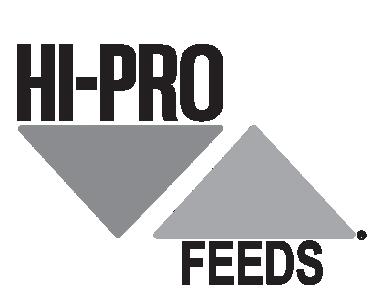


Weaning is an important practice for cowcalf producers to increase calf value and performance. When done correctly, sickness can be minimized during the weaning process on the ranch.
From a biosecurity standpoint, never bring in outside cattle and put them with or next to recently weaned calves.
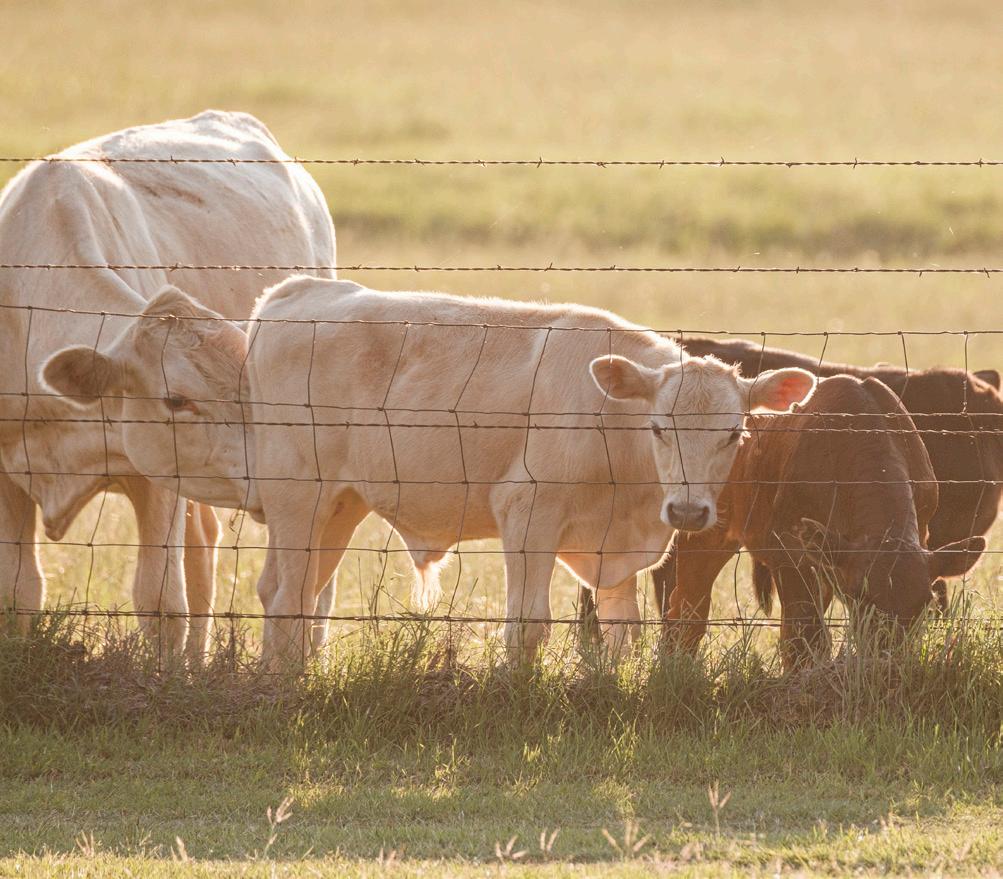
It is also best not to mix groups of weaned calves from the same ranch if they have been managed separately. One group may contain a bovine viral diarrhea, or BVD, infected calf you don’t want to expose to the other calves — especially during the stressful weaning period. T C
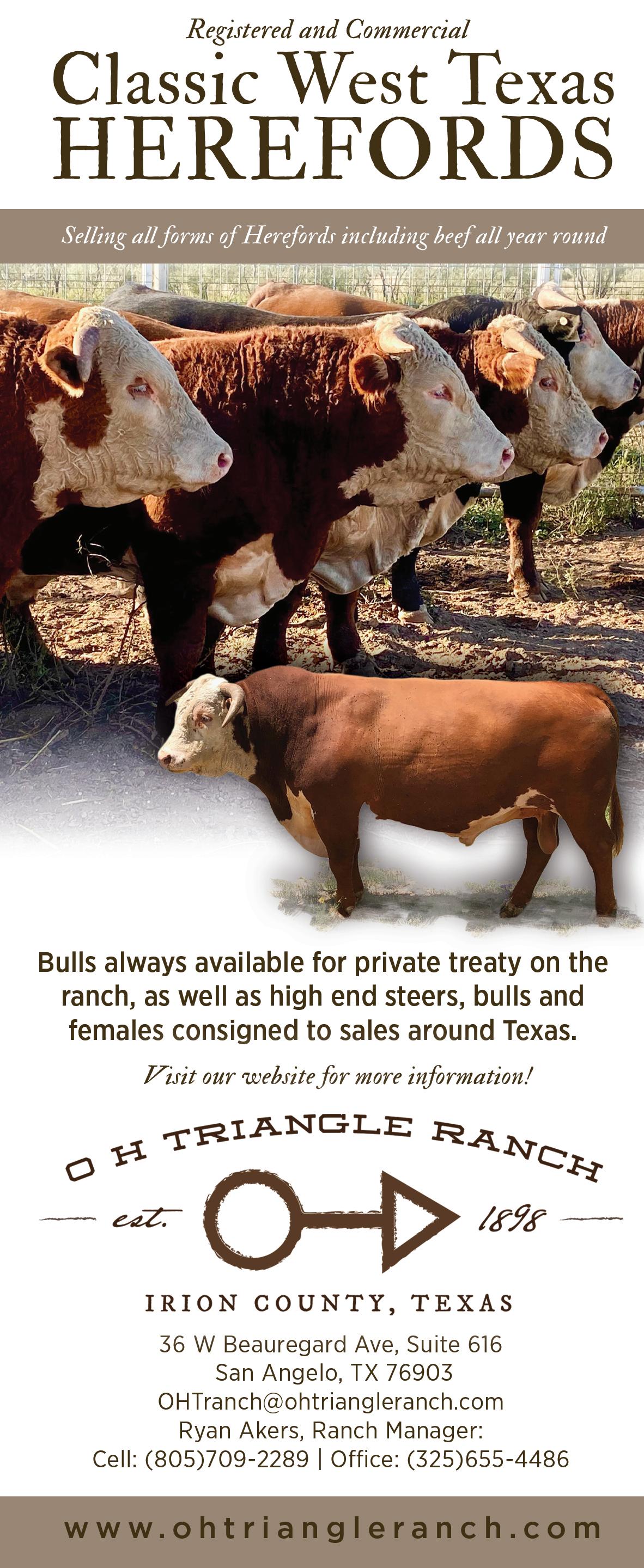


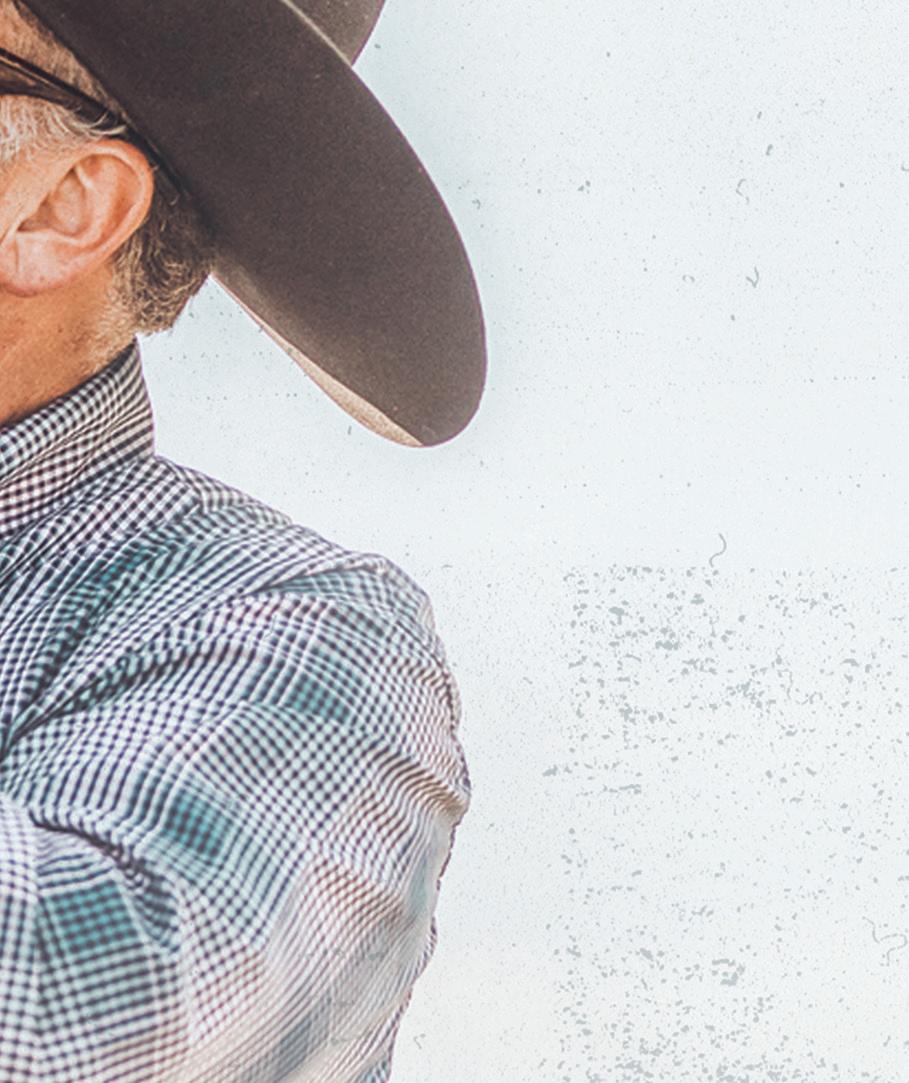


You’re a provider. A defender. You do what’s right, and trust others to do the same. That’s the Texas way. In 2021, your dollars drove consumers to discover unique beef recipes on BeefLovingTexans.com more than 1.4 million times an increase of 28% from 2020 inspiring all ages to savor beef done the Texas way.









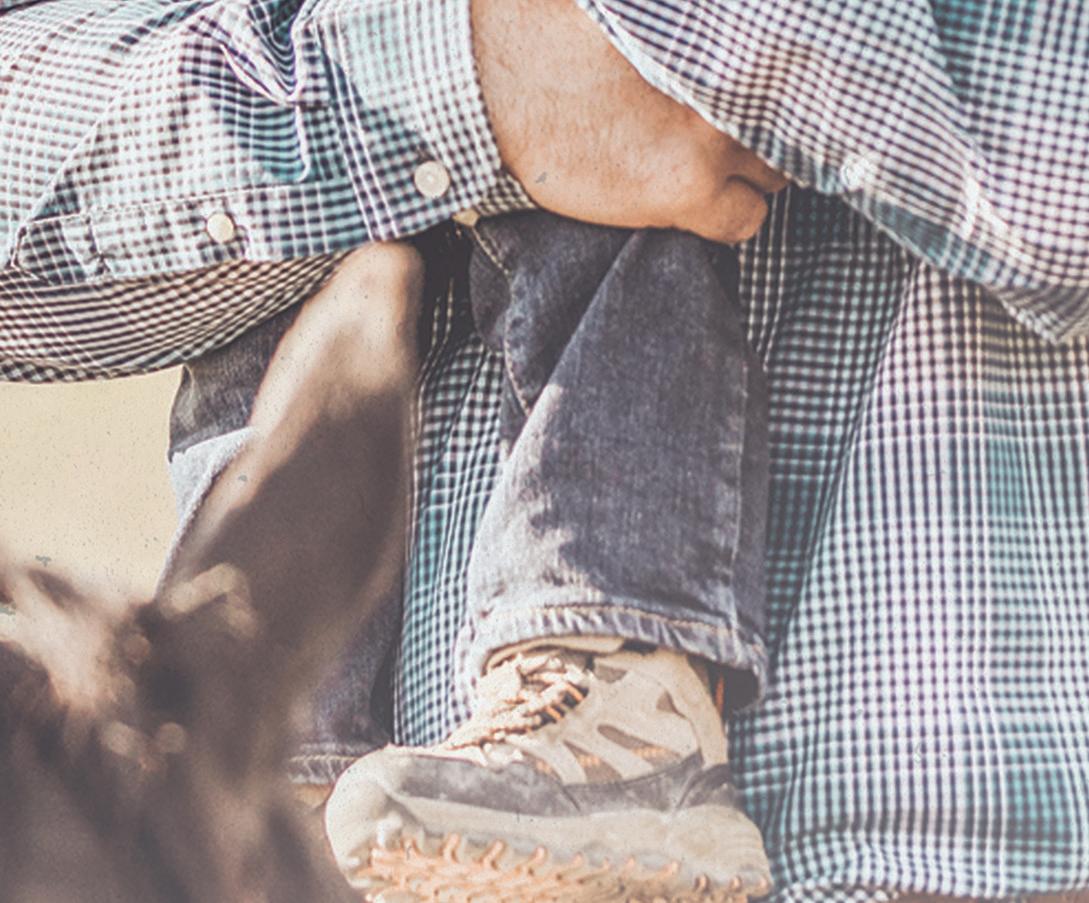




Sign up for the Cattle Talk newsletter at TexasBeefCheckoff.com to stay up to date on how your Beef Checkoff dollars are used to keep beef in its strongest state.






Leading economist says beef demand and prices remain strong.
 By Derrell Peel
By Derrell Peel
The question of beef demand for the remainder of 2022 is an interesting comparison to exceptionally strong wholesale and retail prices in the second half of 2021.
In the first quarter of 2022, retail and wholesale beef prices were sharply higher compared to last year. Retail all-fresh beef prices in May were 9.5% higher year over year. However, beef prices rose sharply in the second quarter of 2021 and remained high for the remainder of the year.
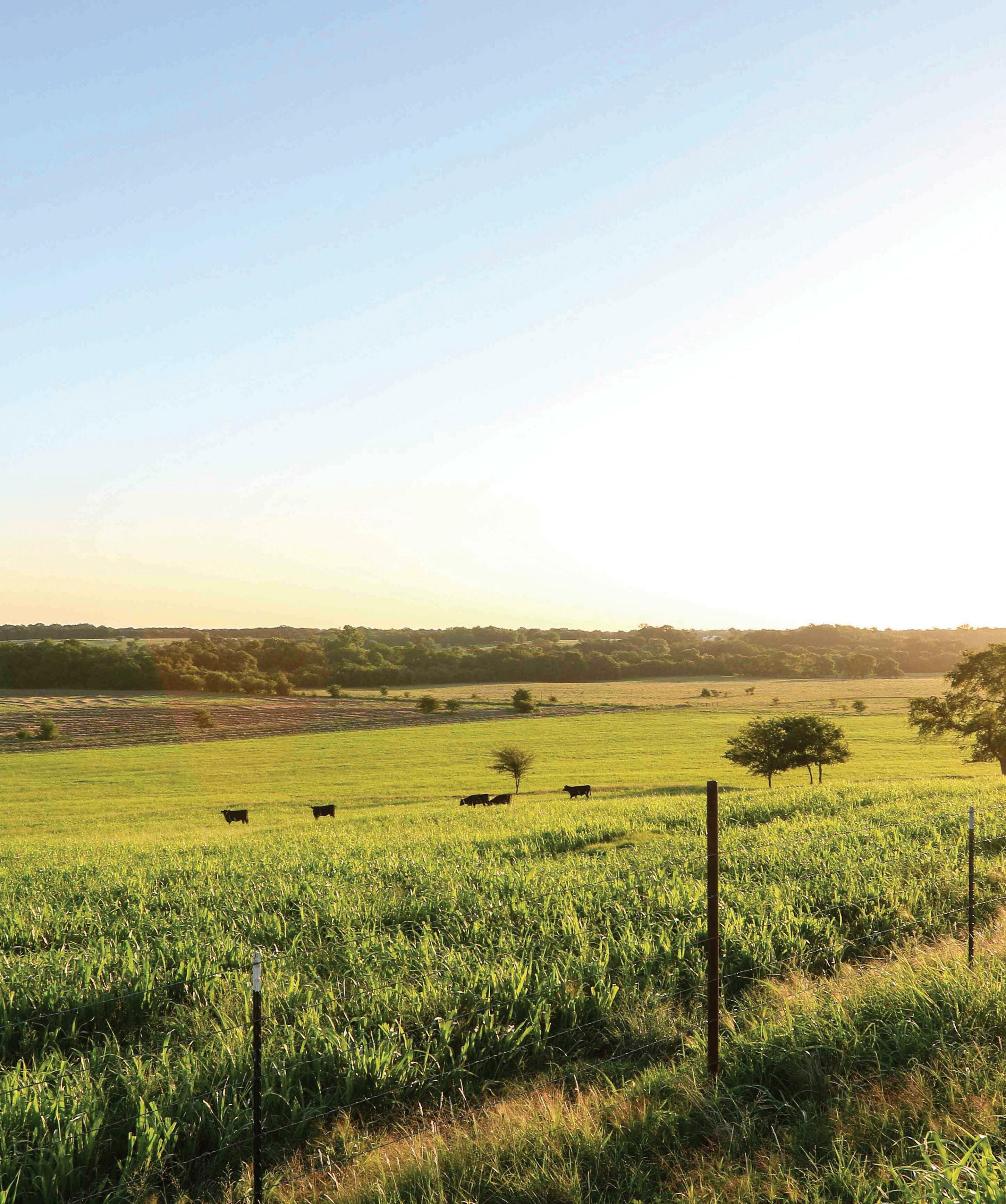
Retail beef prices reached a record high in October 2021 with an all-fresh price of $7.55 per pound. The all-fresh retail price has since decreased slightly to a May 2022 level of $7.37 per pound.
Despite higher prices for most products and record gasoline prices, domestic beef demand appears to be holding strong thus far. Wholesale and retail beef prices have moderated slightly from the robust domestic demand and record beef exports in 2021.
Most beef wholesale prices are currently below last year’s sharply higher prices.
The typical May pre-grilling season boost in beef products was more muted or absent this year, but prices have generally increased in June leading to higher Choice boxed beef prices the past several weeks. Prices for major steak products including tenderloin, ribeye, strip loin and top sirloin are lower compared to last year, but do not indicate appreciable demand weakness at this point.
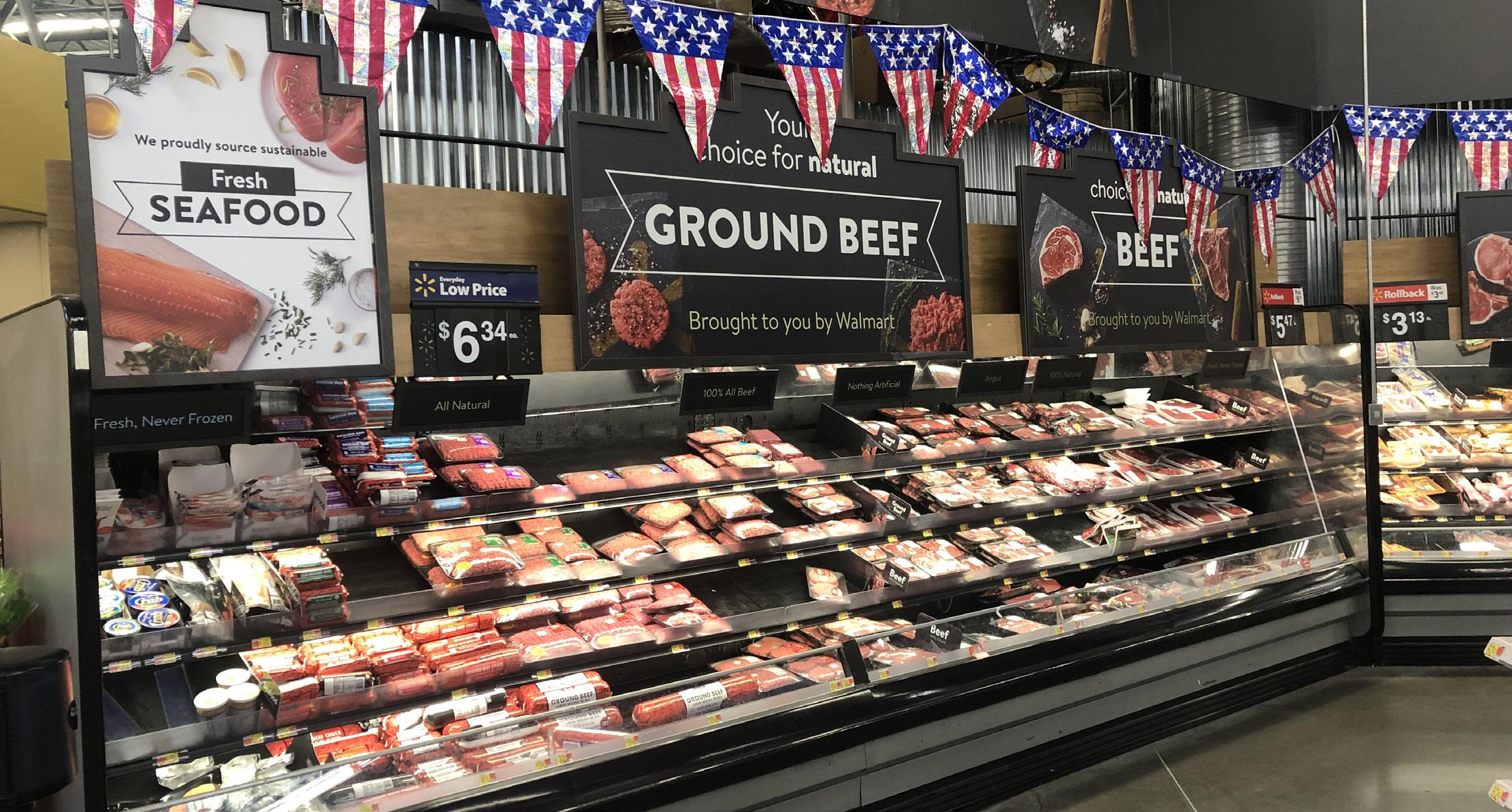 Derrell Peel Oklahoma State University
Derrell Peel Oklahoma State University
Brisket prices are significantly lower year over year and steady in the second quarter, but still high compared to recent years. The popular sirloin tri-tip has increased sharply the past several weeks and is more than 25% above the 2021 average price. The ground beef market has remained consistently strong for the last year — with prices for 90% lean trimmings holding close to the record high levels achieved one year ago.

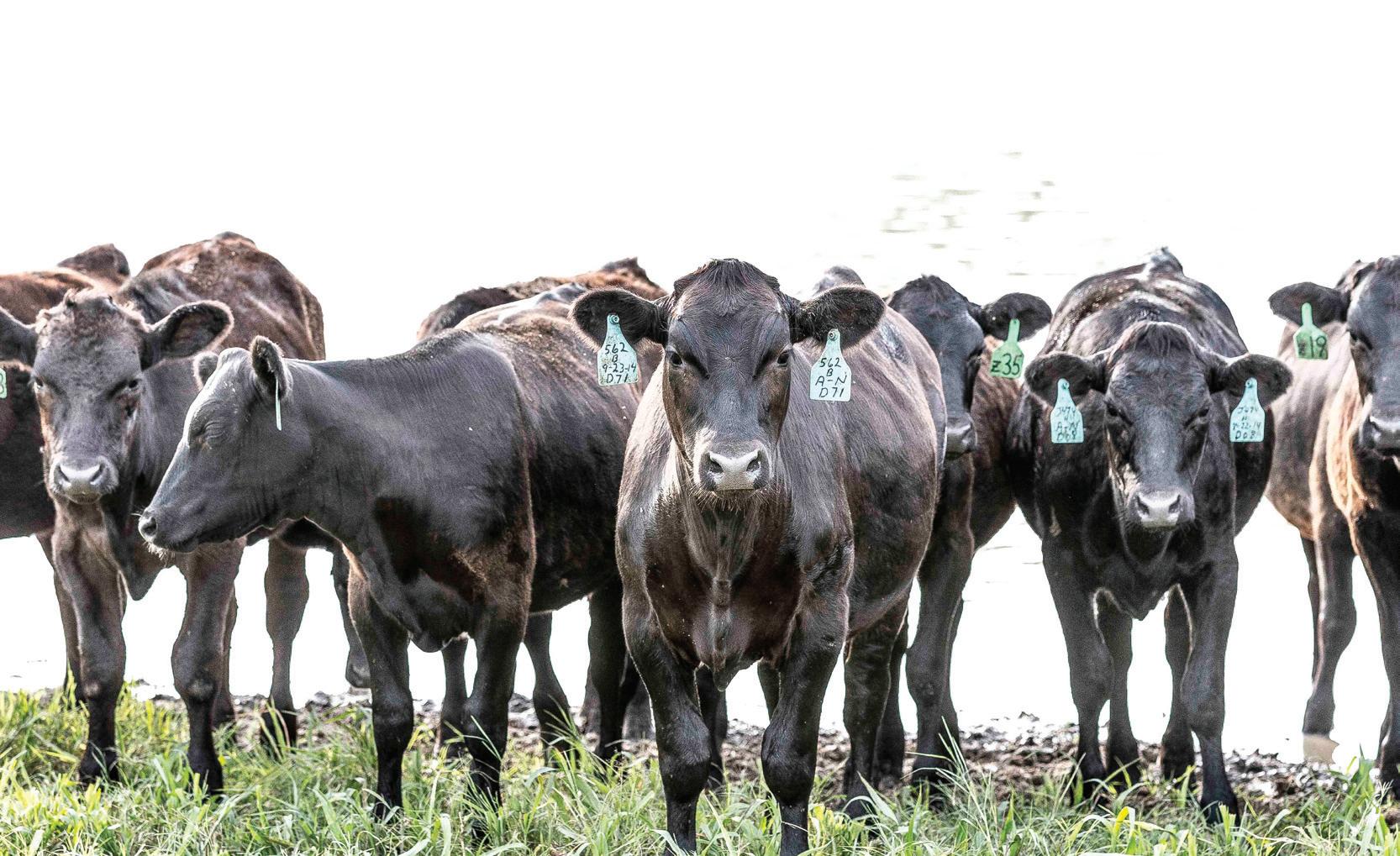

Broiler product prices have continued to rise and may be helping to support beef prices. Wholesale chicken breast meat prices rose more than 69% from the beginning of the year to a peak in late May before pulling back slightly. More recently, chicken leg and leg quarter prices have jumped sharply.

In contrast, chicken wing prices have decreased to the lowest levels in two years. From 2017 to 2021, wing prices averaged 1.65 times breast meat prices, but in 2022 have averaged about one half of breast meat prices. Retail broiler prices have continued to increase in 2022 in absolute levels and relative to retail beef prices.
In May, the ratio of retail all-fresh beef price to the retail broiler composite price dropped to the lowest level since early 2019; meaning broilers are relatively more expensive compared to beef.
Retail pork prices have also risen relative to beef prices with the ratio of retail pork to retail beef prices at the lowest level in a year. Prices are generally higher for all major wholesale pork products including loin, ham and shoulder products.
Demand for beef and other proteins will continue to be challenged by higher prices for food, gasoline and everything else. Thus far, however, beef prices indicate
that beef
value

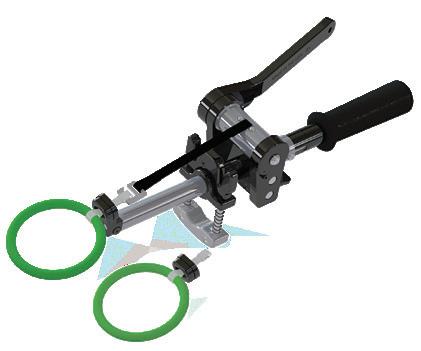
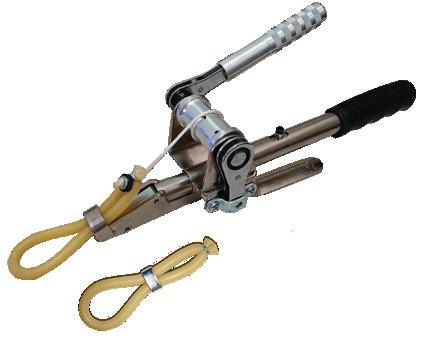
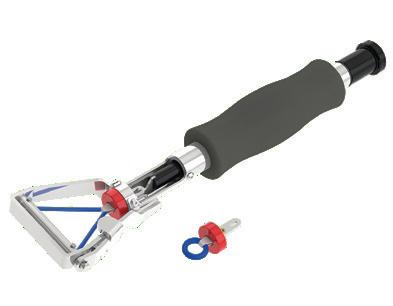
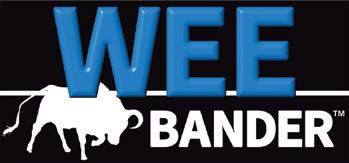
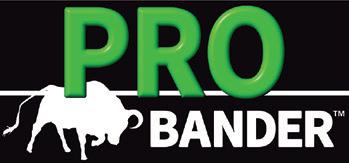
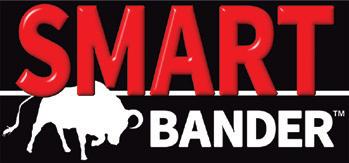





U.S. Meat Export Federation reports continued growth in overseas markets.
U.S. beef exports maintained a remarkable pace in April, topping $1 billion for the third time this year, according to data released by USDA and compiled by U.S. Meat Export Federation.
Beef exports totaled 124,408 metric tons in April, up 3% from a year ago and the fifth largest on record, while export value soared 33% to $1.05 billion — second only to the record $1.07 billion posted in March.
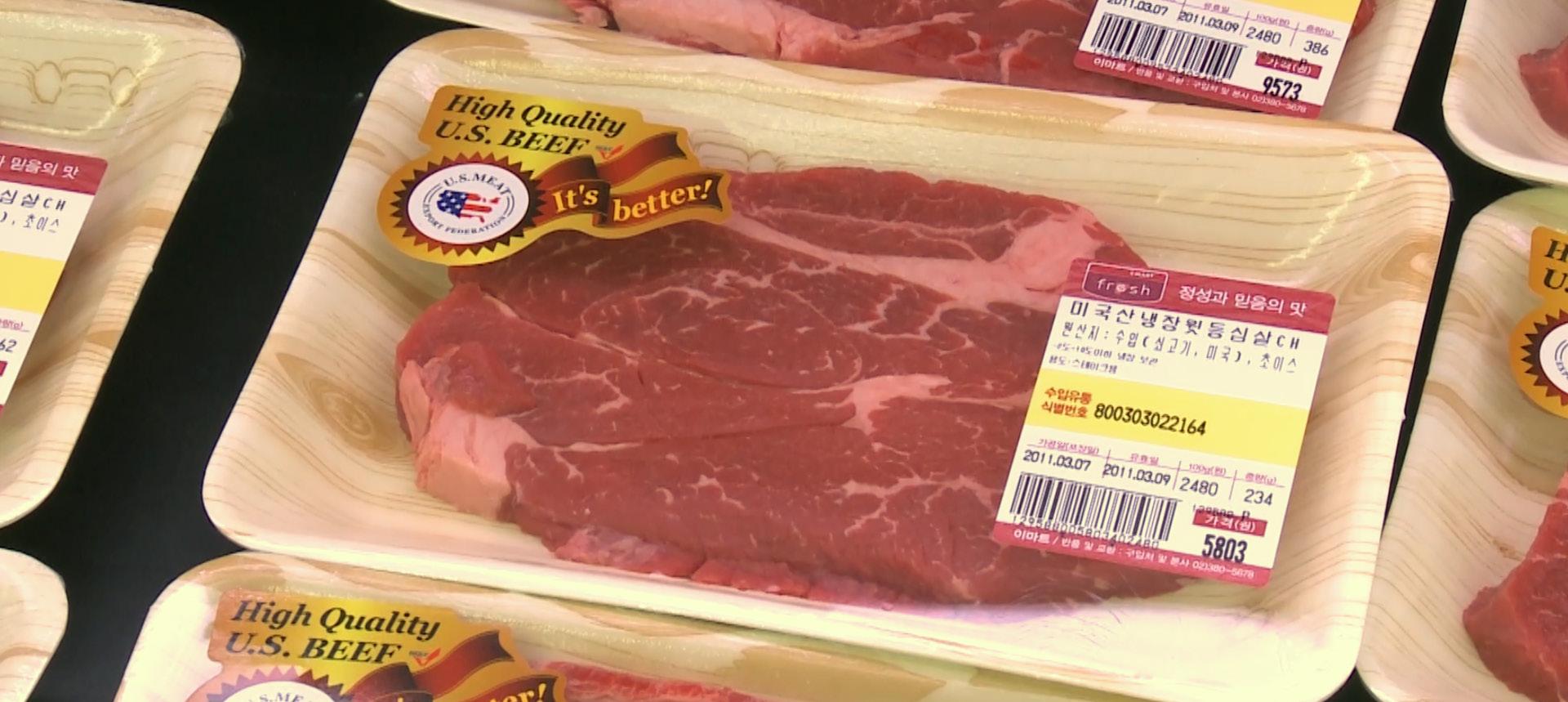
April exports to Taiwan and the Philippines were record-large and exports increased to Japan, China/ Hong Kong, Indonesia, the Middle East and the Caribbean. For January through April, beef exports increased 5% from a year ago to 478,260 metric tons, valued at $4.05 billion, up 38%. For South Korea, the leading value destination for U.S. beef, export value already topped $1 billion, increasing nearly 50% from a year ago.

“Global demand for U.S. beef continues to overcome enormous obstacles, from inflationary pressure to logistical challenges to the recent lockdowns in some of China’s major metropolitan areas,” said U.S. Meat Export Federation President and CEO Dan Halstrom.
“Most encouraging is that even as beef exports climb to unprecedented levels in our largest Asian markets, demand is strengthening in other regions as well, fueled by a strong rebound in the foodservice sector.”
Halstrom cautioned April results did not capture the full impact of recent COVID-19 lockdowns in China, some
of which continued through May and into early June. The pressure inflation imposes on consumers’ discretionary income and the rising strength of the U.S. dollar versus some key trading partner currencies are also growing headwinds for U.S. red meat exports.
Record-level red meat exports of $18.7 billion in 2021 had a major impact on the corn and soybean industries, according to an independent study by the Juday Group.
The study quantified the returns that red meat exports brought to corn and soybean producers in 2021 nationally, and at state levels for leading corn-producing and soybean-producing states.
“The study validates the red meat industry’s collaborative approach to export market development,” said U.S. Meat Export Federation Chairelect Dean Meyer, who produces corn, soybeans, cattle and hogs near Rock Rapids, Iowa. “Beef and pork exports drive value directly
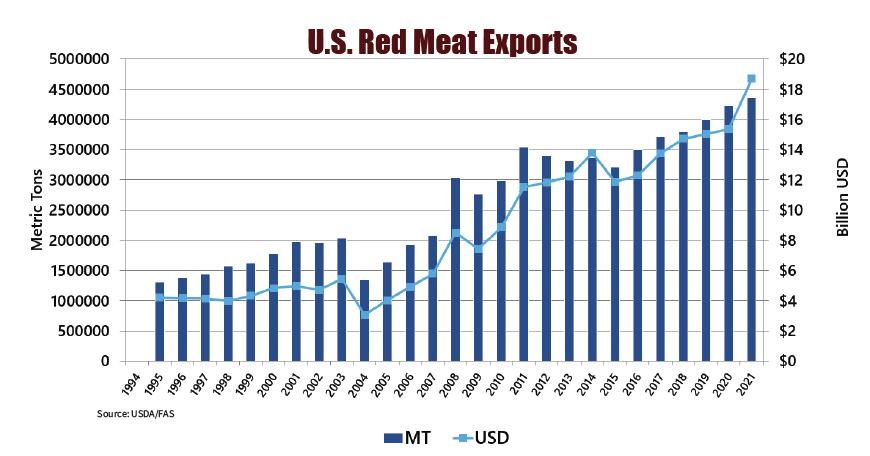
back to my farm and this study helps confirm the return on this investment for all corn and soybean producers.”
Corn and soybean growers support the international promotion of U.S. pork, beef and lamb by investing a portion of
their checkoff dollars in market development efforts conducted by the U.S. Meat Export Federation.

Key findings from the Juday Group study, which utilized national 2021 export data, include the following:
• Beef and pork exports accounted for 537 million bushels of corn usage, equating to $2.94 billion (at an average corn price of $5.48 per bushel).
• Beef and pork exports accounted for 3.4 million tons of dried distillers grains usage, equating to $716 million (at an average price of $209.92 per ton. T C
Story and photos courtesy of the U.S. Meat Export Federation.
The Animal Agriculture Alliance is currently seeking ranchers, farmers, practicing veterinarians and industry professionals to participate in the next online class of their Animal Ag Allies program.
The deadline to enroll is Sept. 2.
Created in 2020, Animal Ag Allies is an alliance initiative empowering agriculture producers, veterinarians and industry professionals to be advocates for agriculture, both online and within their local communities. Graduates will be on the front lines of discussions about animal agriculture by engaging in respectful dialogue and sharing positive information.
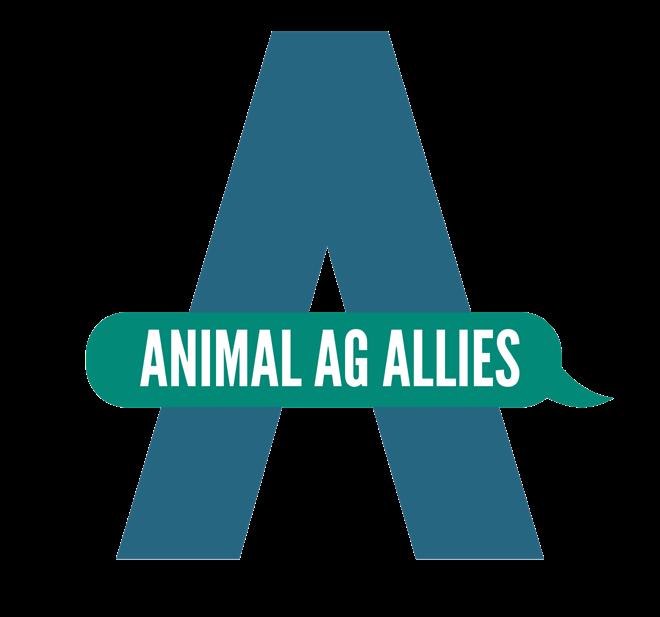

“The Animal Ag Allies program was created to connect agriculture advocates and arm them with the issue expertise and communications skills they need to engage with influencers and consumers,” said Hannah ThompsonWeeman, alliance president and CEO. “Our goal for this program is to make sure the voices of farmers, ranchers and veterinarians are being heard when it comes to important issues related to animal agriculture.”
Similar to the National Cattlemen’s Beef Association’s Masters of Beef Advocacy, this program consists of two phases: a self-paced online training and a private online forum to discuss engagement strategies and current issues. Modules include:
Overviews of each animal agriculture sector
Where to find more resources on each sector
Hot topics and emerging issues facing animal ag
How to address contentious issues
Growing your social following and reaching outside the choir
Public outreach
Interactive sample scenarios
Following the completion of the training modules, participants will be invited to a private forum where they will have the ability to interact with one another, as well as previous program participants and industry professionals. Participants use the group to get advice on growing their online following, engaging on certain issues, responding to comments and messages, and any other relevant topics. Continuing education events are also held quarterly to dive deeper into certain topics or provide updates on emerging issues.
The Animal Ag Alliance has a similar initiative for college students, the College Aggies Online scholarship competition. More information about either program can be found on their website, animalagalliance.org. T C
Sarah Harris is a freelance writer who splits her time between Austin and her family’s ranch near Tilden.

Kelly
Three Rivers Equipment Sales
Tuttle Motors
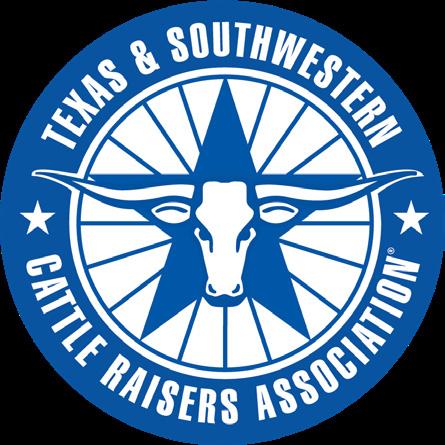
Texas & Southwestern Cattle Raisers Association Director Seth Denbow has simple advice for anyone wanting to become more involved: raise your hand and volunteer.
Denbow and his family became members two decades ago, and he has put that practice to good use, rising through the leadership ranks and serving the association however he can. In addition to serving as a director, Denbow also sits on the association’s executive committee.
“Like any association that you’re involved in, you get out what you put into it,” he says. “I tried to go to as many conventions, Schools for Successful for Ranching and such, that I could. There’s a lot of great programs the association provides.”
Denbow is senior vice president and leads the credit department at National Finance Credit Corporation, a Fort Worth-based lender that provides financing to livestock producers.
“At the office, we always say, ‘I can teach you to crunch numbers, but you’ve got to have the passion for the industry,’” he says. “You’ll get recognized in the industry and TSCRA by having the passion for it.”
Denbow is also part-owner in a yearling and cowcalf operation in Bosque and Callahan counties with his brothers, Blake and Cole. The three are also part of a family operation with their parents in Shackelford County. The stocker operation turns raised spring-born and purchased calves out on summer grass, while the family cow-calf operation is part of the joint venture with another family-oriented cattle operation in a fall-calving Angus-influenced herd, with calves marketed through an all-natural program.
In 2008, Denbow was part of a group of young association members who saw a need to help develop passionate future leaders and set in motion the Young Leadership Series. The program offered educational and networking opportunities for cattle raisers ages 19 to 50 to learn about the industry and develop leadership skills.
While active in the program, Denbow was chosen to represent Texas & Southwestern Cattle Raisers Association at the Young Cattlemen’s Conference, hosted by National Cattlemen’s Beef Association.
He was elected to the Texas & Southwestern Cattle Raisers Association board of directors in 2016, and in 2019, was appointed to represent the association on the Cattlemen’s Beef Board, which oversees the Beef Checkoff.
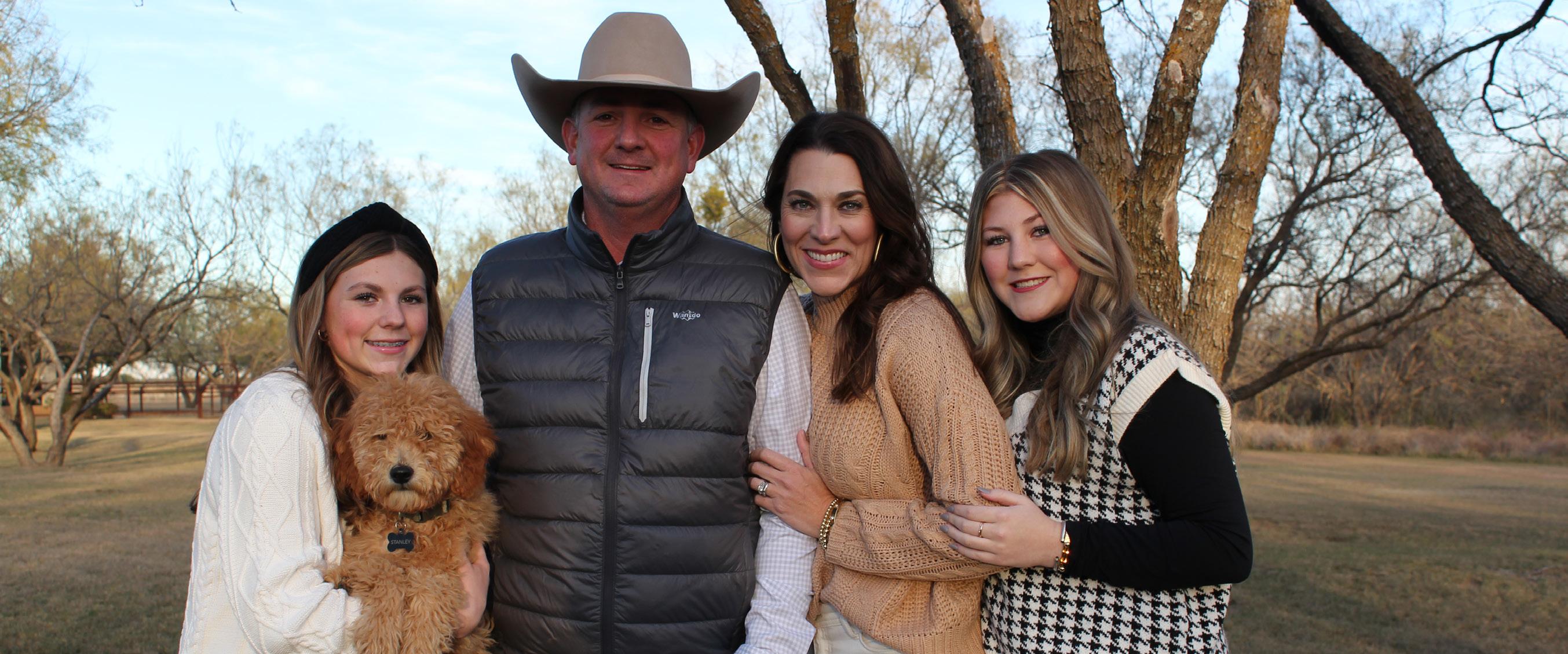
He is currently on the Cattlemen’s Beef Board’s international marketing committee, serves as vice chair of the budget and audit committee, and is a member of the executive committee.
“Again, I just raised my hand,” Denbow says of his Cattlemen’s Beef Board roles. “These are jobs I truly enjoy because this is where I want to contribute. It’s all about maximizing the beef experience for consumers.
“We’ve had growth in beef exports, and we need to continue that, but we can’t lose focus of those right around us, who need to enjoy the beef experience. We’ve got to continue showing them different ways of preparing a dish. Cattlemen’s Beef Board, Texas Beef Council and their respective checkoff contractors are doing a great job of that.”
T
Sarah Harris is a freelance writer who splits her time between Austin and her family’s ranch near Tilden.

4040 Broadway St., Ste. 430 San Antonio, Texas 78209
John M. “Jack” Shelton III Amarillo, 1984-1986
James L. Powell San Angelo, 1988-1990
Tom Beard Alpine, 1994-1995
Chaunce Thompson Breckenridge, 1995-1997
C. Coney Burgess Amarillo, 1997-1999
J. Mark McLaughlin San Angelo, 1999-2001
John E. Dudley Comanche, 2001-2003
Bob McCan Victoria, 2003-2005
C.R. “Dick” Sherron Beaumont, 2005-2007
Jon Means Van Horn, 2007-2009
Dave Scott Richmond, 2009-2011
Joe J. Parker Byers, 2011-2013
First Vice President P.O. Box 155108
Lufkin, Texas 75915
Pete Bonds
Saginaw, 2013-2016
Richard Thorpe lll Winters, 2016-2018
Robert E. McKnight Jr. Fort Davis, 2018-2020
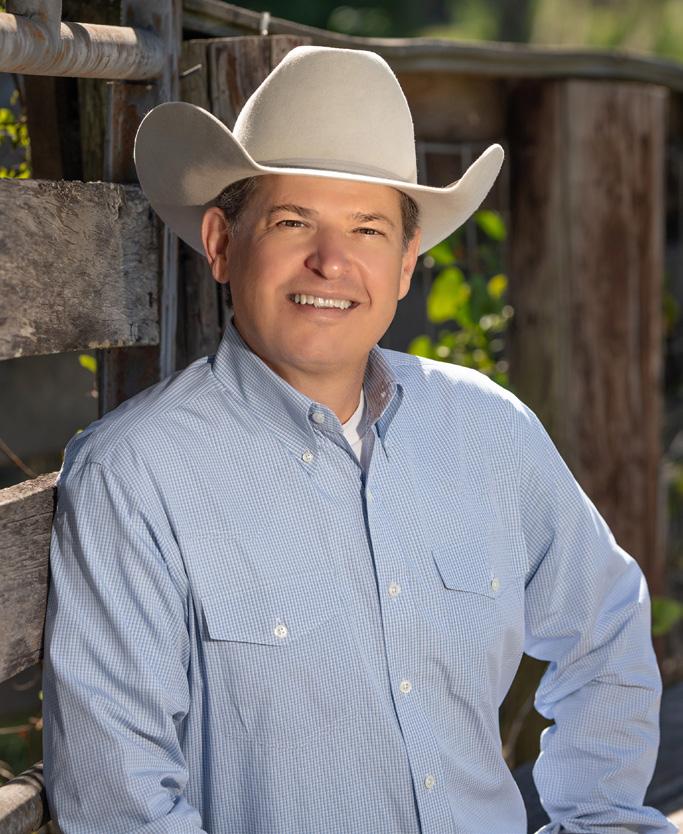

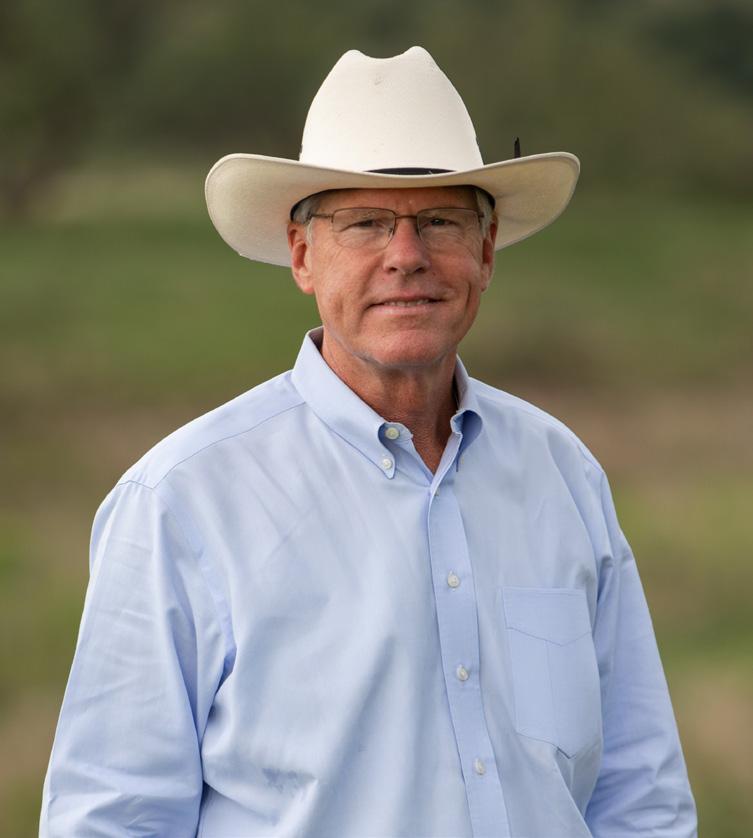
G. Hughes Abell Austin, 2020-2022
Jack Hunt
San Juan Capistrano, California
W. R. Watt Jr. Fort Worth
Richard Wortham Austin
P.O. Box 101988 Fort Worth, Texas 76185 817-332-7064 • 800-242-7820
Jason Skaggs
Executive Vice President/ Chief Executive Officer
Second Vice President and Secretary/Treasurer
3907 Salem Rd. Victoria, Texas 77904
Jaclyn Roberts
Executive Director, Communications & Marketing
Emily Lochner Executive Director, Engagement & Education
Grace Dunham Executive Director, Events & Partnerships
Megan Wills
Executive Director, Finance & Human Resources
Michele Woodham
Executive Director, Insurance Services
Scott Williamson
Executive Director, Law Enforcement, Brand & Inspection Services
Lisa Walker Executive Director, Membership & Operations
919 Congress Ave., Suite 750 Austin, Texas 78701
Kaleb McLaurin
Executive Director, Government Relations

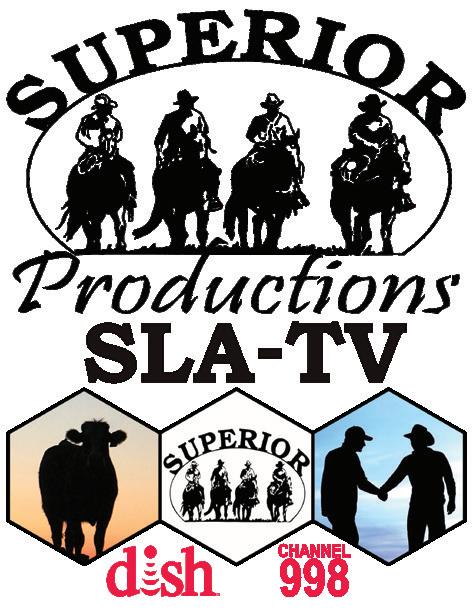
Joe M. (Jody) Bellah, Throckmorton Blake Birdwell, Canyon
E. S. F. “Swasey” Brainard II, Pampa
J. K. “Rooter” Brite Jr., Bowie Donnell Brown, Throckmorton Campbell Burgess, Amarillo
J. D. Cage, Muleshoe
Deborah Clark, Henrietta Lynn Cowden, Skellytown
J. B. Daniel, Crowell John Greer, Henrietta
James Henderson, Memphis
Clayton Henry, Wichita Falls Brooks Hodges, Guthrie Joe Leathers, Guthrie Frank McLelland, Tahoka
Jeff Mitchell, Amarillo Gage Moorhouse, Benjamin Diaz W. Murray, Wichita Falls J. Malcolm Shelton IV, Amarillo
Dale A. Smith, Amarillo Jim Thompson, Breckenridge
Tom Watson, Muleshoe Wesley Welch, Lubbock
William L. “Buck” Arrington, Pampa Van Baize, Nocona
Emry Birdwell Jr., Henrietta Mary Lou Bradley-Henderson, Childress
R. A. “Rob” Brown Jr., Throckmorton Barrett D. Clark, Breckenridge Mike Gibson, Paducah
Ronald J. “Ron” Gill, Chico Robert B. Mansfield, Amarillo Tom Moorhouse, Benjamin Boots O’Neal, Guthrie James Palmer, Roaring Springs
Bill Phinizy, Gail
Tom L. Roach III, Bozeman, Montana Wilson Scaling, Henrietta
Chris Scharbauer, Amarillo John Welch, Wolfforth
A. B. “Buck” Wharton III, Vernon Tom Woodward, Decatur
Kevin Busher, Winters
Charles M. “Charley” Christensen Jr., San Angelo
C.A. “Chili” Cole IV, San Angelo Alan F. Curry, San Angelo
James H. Dudley IV, Horseshoe Bay
Amanda Dyer, Fort Davis Johnny Ferguson, Big Lake
D.A. “Day” Harral, Fort Stockton Ron Helm, Van Horn
Heath Hemphill, Coleman Shelby W. Horn, Fredericksburg
Larry R. Horwood, Sterling City Grant Jones, Rochelle Mark W. Jones, Brady
W. Clay Jones, Brady Ty Keeling, Boerne Lorenzo Lasater, San Angelo Brian T. McLaughlin, Midland David L. Neal, San Angelo Gerald Nobles Jr., Brady James Oliver, Ozona Wade Perks, San Angelo
Gordon E. Sauer, Fredericksburg Jessica Tate, Marfa
James Uhl, Fort McKavett Cody Webb, Barnhart Ken Welch, Baird
Ray W. Willoughby III, Eldorado
C. A. “Chip” Cole III, San Angelo
William C. “Billito” Donnell Jr., Alpine
James H. “Jim” Dudley, Comanche Richard Gates, Marfa
W. H. “Billy” Green III, Albany Rafe Hargrove, Rotan
Dr. Joe Pat Hemphill, Coleman
Richard D. “Dick” Hughes, El Paso
Ken Jordan, San Saba
Don Keeling, Fredericksburg
Chris Lacy, Fort Davis
Laurence M. Lasater, San Angelo
Ben Love, Marathon
C. H. “Terry” McCall, Comanche
Len P. Mertz, San Angelo
Tom Perini, Buffalo Gap
Frank Price, Sterling City
Danny B. Stewart, Sterling City
Rick Tate, Marfa
Cliff Teinert, Albany
Dennis W. Webb, Barnhart
W. C. “Billy” Williams, Mertzon
Ian Chapman, Madill, Oklahoma
Ford Drummond, Pawhuska, Oklahoma
Bob Drake, Davis, Oklahoma
Russell “Rusty” Noble, Ardmore, Oklahoma
Les Nunn, Pauls Valley, Oklahoma
Edward Bordovsky Jr., Riviera
Austin Brown III, Beeville
W. Christopher Bush, Refugio
Presnall C. Cage, Falfurrias
James Clement lll, Kingsville
David S. Crow, Corpus Christi
Dustin Dean, Floresville
David DeLaney, Kingsville
Robert “Bobby” Dobson, Birmingham, Alabama
James L. “Jamie” Donnell Jr., Fowlerton
J. David Eppright, Cost
Benjamin Eshleman III, Corpus Christi
Joseph B.C. Fitzsimons, Carrizo Springs
Cody Fry, Lueders
Jim L. Gates, Pearsall
Milton S. Greeson Jr., Victoria
Bret Griffith, Del Rio
Heath Grigg, Kingsville
Marty R. Harris, Tilden Leslie Kinsel, Cotulla
Claude Koontz, San Antonio
Steven J. Mafrige, Tilden Beth Knolle Naiser, Sandia
Federico Nieto, Raymondville
T. Michael O’Connor, Victoria
Jason Peeler, Floresville
J.R. Ramirez, La Pryor
Gilly Riojas, Corpus Christi
M. Stuart Sasser, Corpus Christi
Lew Thompson, Pearsall
Gene S. “Primo” Walker Jr., Mirando City
C. Clark Welder, Beeville
John Zacek, Victoria
Steve G. Beever, Pearsall
Richard H. Bennett, San Antonio
Chip Briscoe, Carrizo Springs
Austin E. Brown II, Beeville
Martin W. Clement II, Kingsville
Thurman S. Clements Jr., Victoria Nixon Dillard, Pleasanton
Trainor Evans, Mercedes Thomas J. “Tommy” Haegelin, Concan
Dr. Philip C. Hardee, Beatrice, Alabama
Allen C. “Dick” Jones IV, Corpus Christi Joan Negley Kelleher, San Antonio
David W. Killam, Laredo Dan W. Kinsel III, Cotulla
Steve C. Lewis, San Antonio Jim McAdams, Seguin
James A. McAllen, Linn Red McCombs, San Antonio
Tim Pennell, Westhoff Jim Peters, Quemado
Scott Petty Jr., San Antonio Tom Risinger, Weslaco Frates Seeligson Jr., San Antonio
Richard Traylor, Batesville
Roger F. Welder, Victoria
David W. Winters, Del Rio
Wayne Cockrell, College Station
Herff Cornelius Jr., Wadsworth
Carlos Detering III, Houston
Dr. Lewis (Bud) Dinges, Richmond
Gardner H. Dudley, Houston
Jay C. Evans, Dripping Springs
Dan Gattis, Georgetown
Kelley Sullivan Georgiades, College Station
George Harrison, Bay City
Tom J. Haynie, Navasota
Robert Hodgen, Houston Clay Kenley, Crockett
Clive Runnells III, Austin
John Sumner Runnells III, Bay City
Tony Spears, Rosanky
John “Rocky” Sullivan, Galveston
Bill White, Stowell
Claudia Scott Wright, Richmond
Leroy Ezer, Anahuac
Frank Green, Liberty
Coleman H. Locke, Hungerford
Katharine Armstrong Love, Austin
Richard M. Lucas Jr., Houston
William “Alan” McNeill, Beaumont
Evalyn Moore, Richmond
Raymond E. Moore IV, Richmond
Rick Peebles, Baytown
Gordon Richardson, Caldwell
Charles R. “Butch” Robinson, Navasota
Nolan Ryan, Round Rock
J. D. “Bubba” Sartwelle Jr., Sealy
Ed Small, Austin
Guy F. Stovall Jr., El Campo
Linda Joy Stovall, El Campo
Gerald Sullivan, Galveston
John L. Sullivan, Galveston
Robert J. Underbrink, Houston
Mark A. Wheelis, Montgomery
Beau Brite White, Rosanky
Dr. M. R. “Mike” Wirtz, Brenham
April Bonds, Saginaw
Missy Bonds, Saginaw
John L. Cantrell, Cresson
Hunter Crow, Dallas
James T. Dangelmayr, Muenster
Seth Denbow, Weatherford
Crawford Edwards, Fort Worth
Jason Harlow, Dallas
Colt Hoffman, Marlin
Pete Hudgins, Sherman
Tom Johnson, Wortham
John Z. Kimberlin Jr., Dallas
Ken Leiber, Fort Worth
James E. “Jim” Link, Crowley
Stefan Marchman, Fort Worth
William H. McCall, Fort Worth
Dan Nance, Haslet
Gary Price, Blooming Grove
Susan Roach, Fort Worth
Stephen S. “Steve” Sikes, Fort Worth
Bragg Smith III, Dallas
Bart Wulff, Dallas
Curtis Younts Jr., Belton
Bradford S. “Brad” Barnes, Fort Worth
George Beggs IV, Fort Worth
John W. Carpenter III, Dallas
Markham B. Dossett, Waco
Jon David Mayfield, Dublin
Bob Moorhouse, Weatherford
Mary Joe Reynolds-Montgomery, Fort Worth
Stephen T. “Steve” Swenson, Dallas

























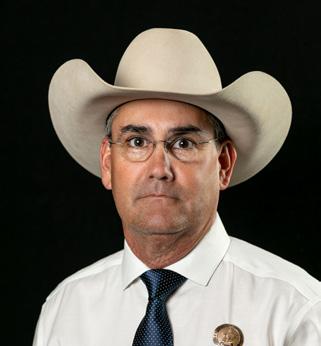

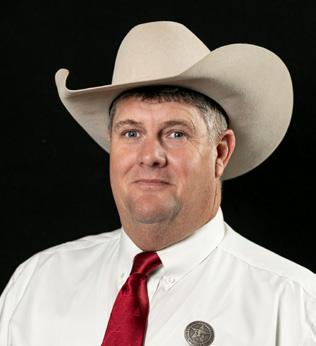

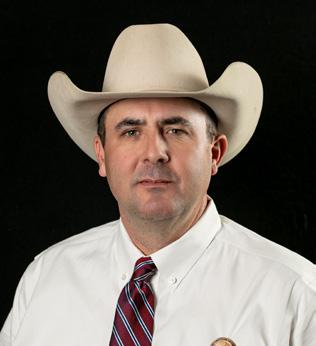
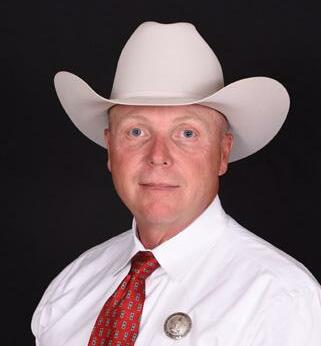
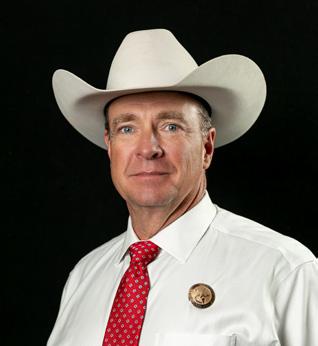
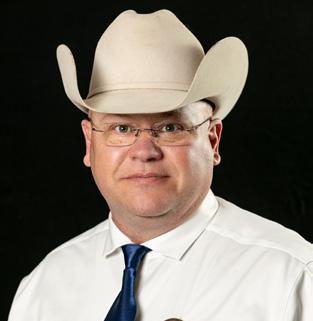



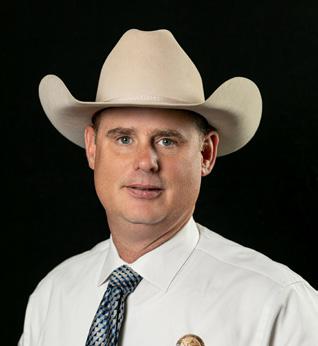
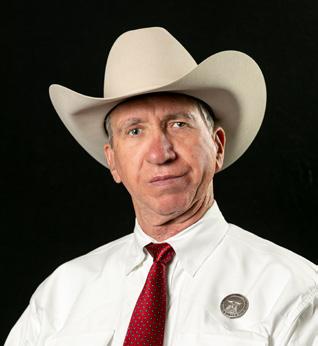

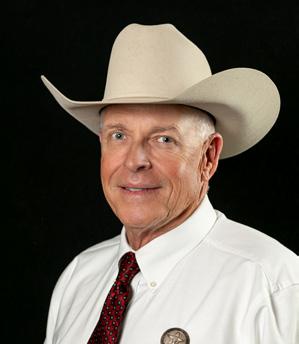
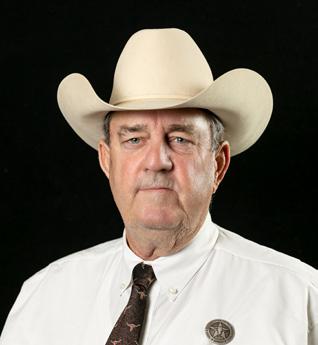
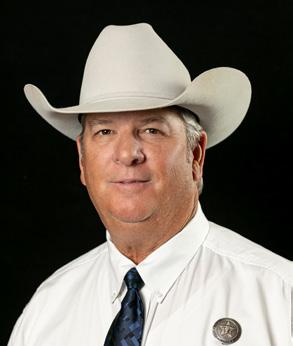
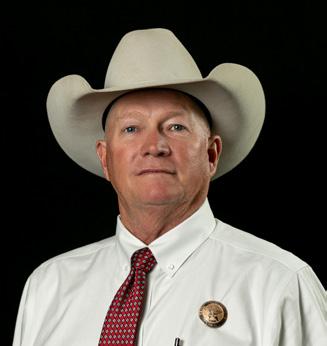
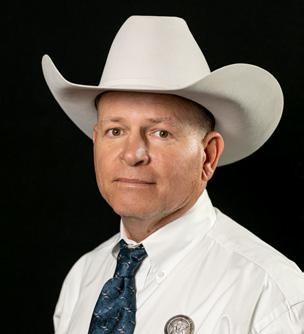

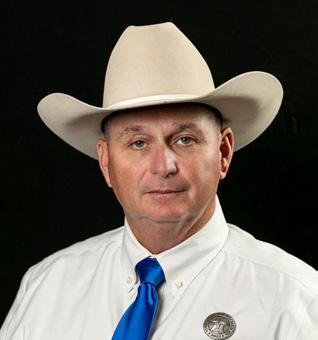
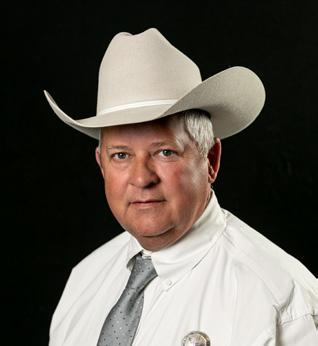
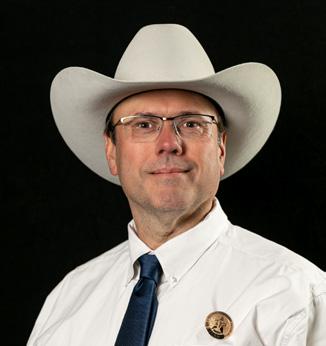
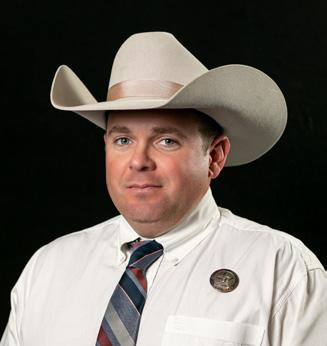
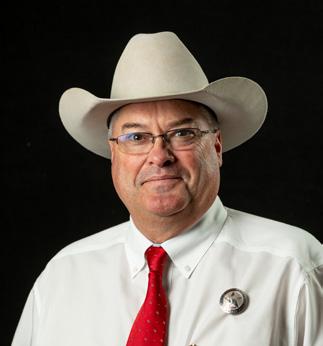

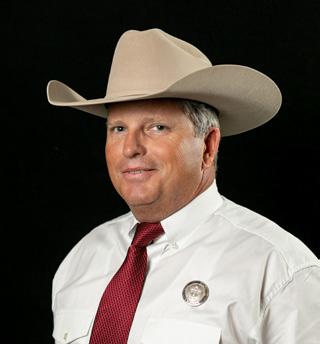
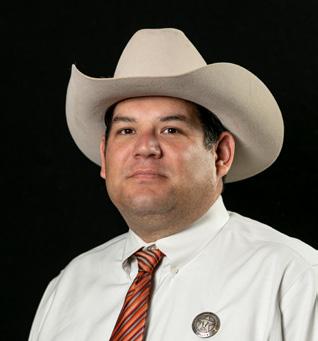
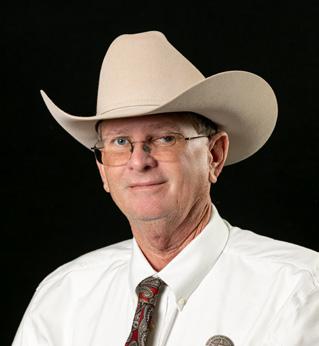

2H Ranch
Edgewood
2L Cattle Co.
Tolar
4 Bar S Ranch
Fayetteville
4J Madera Canyon Ranch Fort Davis
4J Ranch North Richland Hills
5E Ranch Stockdale
6W Cattle Co. LLC Montgomery
7X Cattle Co. Longmont, Colorado
Addington Cattle Co. Rome Allen Ranch Garwood Juan Alonso Austin
Ammons Farms Ben Wheeler
Back Bar Cattle Co. New Braunfels
Bailey Land & Cattle LLC Houston Beckham Family LP Abilene
Bedford Farms Muldrow, Oklahoma
Sylvan Biediger San Antonio
Biela 78 Elmodorf
Big Poppy Ranch Montgomery
BLC Rockwall Will Blocker Fort Worth
BMB Investments Dallas
Jeffrey Bodle
Sealy
Patrick Borden
Woodsboro
Box Ranch LLC Fort Davis
Bruce Bricarell
Houston
Broken H Houston
Bruce Walston Ranch Moulton
Yvonne B. Buchanan Dallas
Bullard Farm Edgewood
BWG Acquisitions Weatherford
C&B Ranch Sanderson Douglas Callegari Johnson City
Shelby Rod Chachere El Campo
William Chloupek Dallas
Mary Christmas Raton, New Mexico Circle E Ranch Warda
Charles Cleveland Lubbock
CMT Cattle Co. Wills Point
Travis Cooke Fort Bragg, North Carolina
Cornerstone Land & Cattle LLC Rockwall
Leo Corrigan Dallas
Country Haven Ltd., C-Bar Ranch Dallas
James Cowart Kountze
Steven R. Cox Fruitvale
Gary Crandall Earth
Tommy Crawford Mineola
CRS & Associates LLC Tyler D&S Ranch San Antonio
Dark Horse Ranch Yoakum
Carolyn Dolby Fayetteville
Dyess Farm Chandler Ebrom Farms Karnes City
El Zopilote Ranch Laredo Jeff Emmons Comanche
FHP Cattle Ranches, H&P Cattle, Castro-Pruski Cattle Lavernia
Fink Ranch Wharton
Flying U Ranch Charlotte
Freddy Friederick New Berlin
Joseph Furlong El Paso
G&S Ranch
Forney Kerry Gaines Weatherford
Billy Gallier
Sour Lake
Don Gann Aledo
Jeanne Gillette Fayetteville
Carter Ann Gordon Fort Worth
Hereford heterosis adds longevity, fertility and efficiency to any herd.
At the same time, Hereford leads the way in docility – while increasing profitability by $51 per cow per year.
The tiger-stripe female: built to survive and thrive.

William Graves
Santa Rosa Beach, Florida
Austin Green
Damon
Greenlee Acres Fort Worth
Mark B. Hagan Yoakum
Hardin Farms Carlton
Ryan Harrington College Station
Mike Heiler Yoakum
Reggie Hickerson Union Valley
Rayford B. High Jr. San Antonio
HLLM
Bruni
Kayla Hoff Goliad
Steven Hon Shallowater
Dale Hudler Brownsboro
Sandra L. Ingram Wills Point
Patrick G. Jalufka Yoakum
James & Helen Noll Farm Falls City
Wade Jarutowicz Floresville
Jay Talley Cattle Stockdale
Jenschke Farm & Ranch Ltd Fredericksburg
JJN Ranch LLC Pleasanton
Jason K. Johnson Halletsville
K-4 Farms Kinnard
KB Cattle Co.
Forney
Cory King Wills Point
King Roofing LLC Gun Barrel City
Krebs Farms
Fayetteville
Ronnie Kriewald Hondo
Trevor Kunkel
Midfield
L&L Ranch Lavernia
La Sierra San Antonio Lavaca Oaks Houston
Lazy H Cattle Halletsville
Lee Farm & Ranch Corpus Christi
Left Hand Six Halletsville
Livestock Risk Services Newcastle, Oklahoma
LJ Ranch Calvert
Lodermeier Auctions LLC Tuscola
Lonewolf Ridge Cattle Co. Floresville
James & Nancy Loos Yoakum
Timmy & Karen Lucherk McCoy
George Lyssy San Antonio
Rene Mata Dallas Ruben Mata DeSoto
Menke Farm & Ranch Inc. Hempstead
Terry Mitchell
Lone Wolf
Robert Monahan
Alice
James Morton Sweetwater
Muehlstein Cattle New Braunfels
Nolte Ranch Stockdale
Edward & Garrett O'Neal Boulder, Colorado
P3 Farms Brownsboro
Page Cattle Co. Kerrville
Brian Palmer Montgomery
William Pannell Midland
Paris Horse & Tack Petty
Parten Sundance Ranch Taylor
Pavliska Ranch Cuero
Peace on Earth Ranch Corpus Christi Kenneth Pearce Lavernia
Landon Persyn Hondo
Pioneer Oaks Ranch Cypress
Pontotoc Creek Ranch Austin
POP & Loll's Farm Wills Point
Rod J. Pratka Shiner
Prescher Cattle Co. Clifton
Q-H Ranch Canton


Julian Quintero
Dallas
Rafter R. Farms Canton
Ranch Emmanouella LLC Plano
Rancho Los Vaqueros La Feria
Raqusa's Circle J Austin
Razzle Dazzle Ranch
Edgewood
RD Ranch Flatonia
Red Hill Ranch Hillsboro
Twila Reynaud Eustace
Robin Roost Ranch Fort Worth
Rockin V Ranch Friendswood
Rocking C Ranch Halletsville
Scott Roemer College Station
Rolling Hills Ranch Shiner
Roque Ranch Frisco
Brian Sanders Houston
Schott's Crossing Halletsville
Shafer Ranch Dallas
Gregory Shimp
Mineral Wells
Sister Grove Farm Van Alstyne
Clayton Skinner
Glenwood Springs, Colorado
Mark Skoruppa Lake Jackson
David Smallwood Kountze
Smith Cattle Co. Pleasanton
Brad Sowell Jasper
Brandon Steinmann Conroe
Callie Jo Swaim Elephant Butte, New Mexico
Mari Swain Cleburne
Swinnea Ranch Clute Team Taylor Canutillo Susan D. Teele Cypress
Texas Sunset Farm Shiner
Michael W. Thompson Schulenburg
TIO Max Farms Schulenburg
Tres Hijos Ranch LLC Tyler
Triple B Ranch West
Triple E Cattle
New Ulm
Triple O Group LLC Laredo
Triple T Ranch Coolidge
Trott Farm Boerne True Ranch Bedias
Tulsa Texas Ranch La Feria
Twin Creeks Ranch Wills Point
Tymrak Cattle Co. LLC Alice
Ruthie Wagener
Gillett
Wallace Farms Maud Mickey Wardlaw Dallas
Loyal Warner Ledbetter
Wesley & Sharon Trucking & Farming Edgewood
WGW Little Ranch Houston RW Wilshusen Houston
Wilson Brothers Madisonville Wingo Ranch Yoakum
Young Farms Plainview
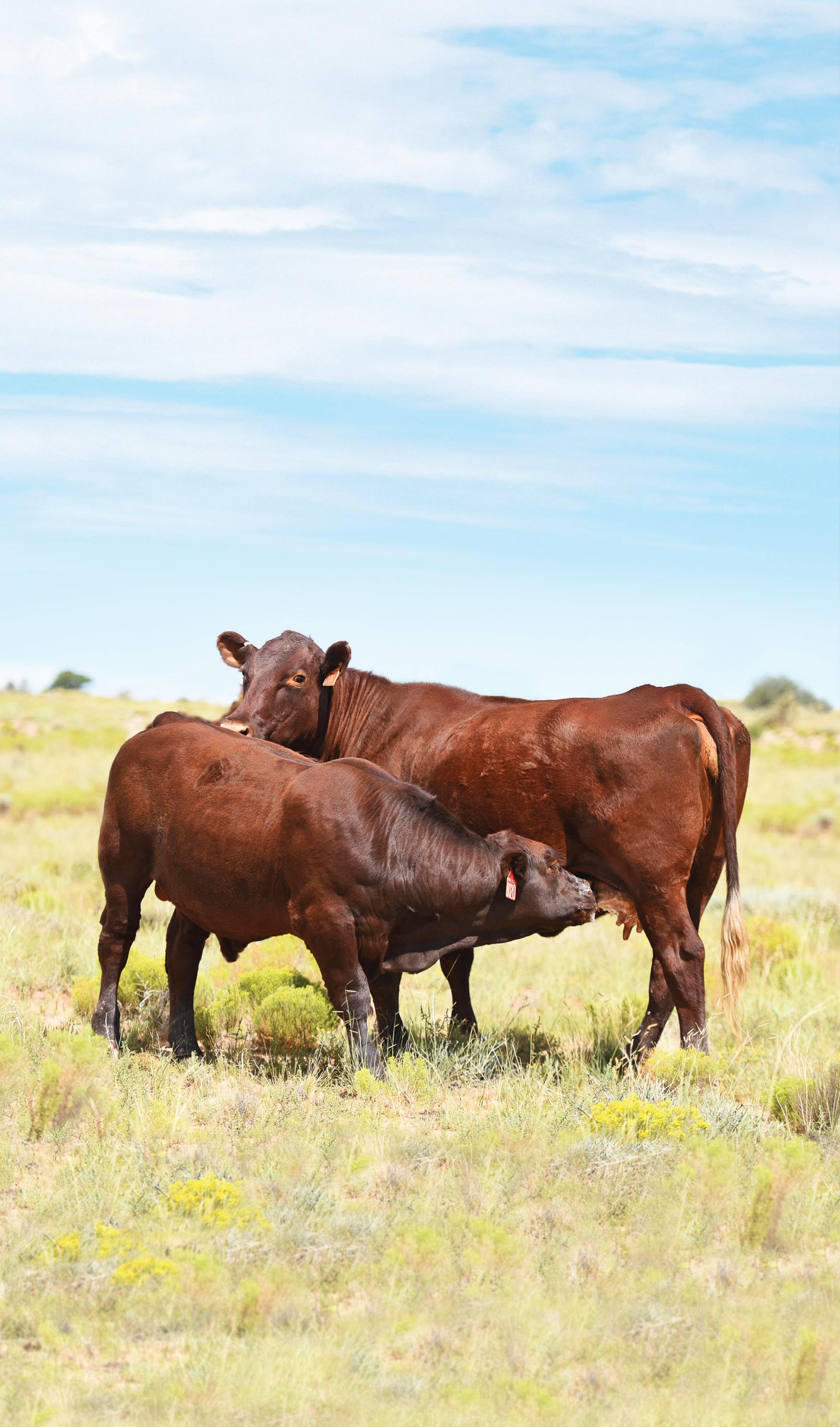
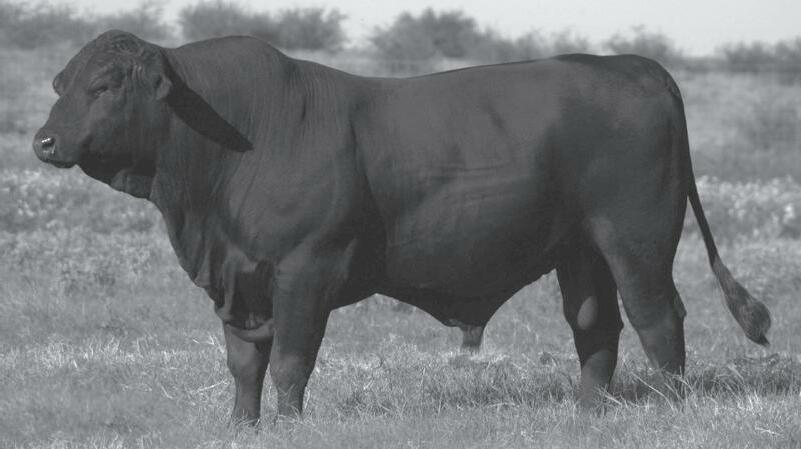


Anderson County Livestock Exchange
Where: Elkhart
Phone: 903-764-1919
Sale Day: Wednesday
Contact: Michael Little, 903-876-3153
Elkhart Horse Auction
Where: Elkhart Phone: 903-764-1495
Sale Day: Saturday
Contact: Tiffany Patterson, 903-388-7288
Atascosa Livestock Exchange
Where: Pleasanton Phone: 830-281-2516
Sale Day: Tuesday
Contact: Marvin Bendele, 210-213-5890
Four County Auction
Where: Industry Phone: 979-357-2545
Sale Day: Tuesday
Contact: Lisa Sebastian, 979-270-3041
Muleshoe Livestock Auction
Where: Muleshoe Phone: 806-272-4201
Sale Day: Friday
Contact: Benny Parker, 806-946-9142
Beeville Livestock Comm.
Where: Beeville Phone: 361-358-1727
Sale Day: Friday
Contact: Robert Bridge, 361-542-6693
Meridian L/S Comm. Co.
Where: Meridian Phone: 254-435-2988
Sale Day: Monday
Contact: Larry Brown, 254-265-1920
J & J Livestock Auction
Where: Texarkana
Phone: 903-832-3576
Sale Day: Saturday
Contact: Lana Caldwell, 903-908-0530
Brazos Valley Livestock Comm.
Where: Bryan Phone: 979-778-0904
Sale Day: Tuesday
Contact: Nina Nygard, 512-281-6753
Caldwell Livestock Comm.
Where: Caldwell Phone: 979-567-4119
Sale Day: Wednesday
Contact: Mark Nygard, 512-281-6330
Lockhart Auction
Where: Lockhart Phone: 512-398-3476
Sale Day: Thursday
Contact: Nina Nygard, 512-281-6753
Bruce Overstreet Livestock
Where: Pittsburg Phone: 903-856-3440
Sale Day: Monday Contact: Michelle Willeford, 903-767-0670
Tri County Livestock Market
Where: New Summerfield Phone: 903-726-3291
Sale Day: Saturday Contact: Michael Little, 903-876-3153
Coleman Livestock Auction
Where: Coleman Phone: 325-625-4191
Sale Day: Wednesday Contact: Dave Williams, 325-669-2030
Columbus Livestock Auction
Where: Columbus Phone: 979-732-2622
Sale Day: Thursday Contact: JoGayle Stavena, 979-332-2186
Comanche Livestock Exchange
Where: Comanche Phone: 325-356-5231
Sale Day: Saturday Contact: Michael Davis, 254-879-3121
The New Gainesville Livestock Auction
Where: Gainesville
Phone: 940-665-4367
Sale Day: Friday
Contact: Robin Gibbs, 903-227-0791
Coryell County Comm.
Where: Gatesville Phone: 254-865-9121
Sale Day: Saturday
Contact: Ray Davis, 254-718-5512
Cattleman’s Livestock Comm.
Where: Dalhart Phone: 806-249-5505
Sale Day: Thursday
Contact: Clifton Miller, 806-570-7439
Hereford Livestock Auction
Where: Hereford Phone: 806-240-3082
Sale Day: Tuesday
Contact: Joe Bob Via, 806-452-9280
Cuero Livestock Comm.
Where: Cuero Phone: 361-275-2329
Sale Day: Friday
Contact: Rodger Koehler, 830-305-5544
Texas Cattle Exchange
Where: Eastland
Phone: 254-629-2288
Sale Day: Tuesday
Contact: Ronnie Ober, 817-371-7071
Rio Grand Classic
Where: El Paso Phone: 956-487-5551
Sale Day: Tuesday
Contact: Joe Karl Rios, 915-858-0590
Dublin Livestock Auction
Where: Dublin Phone: 254-445-1734
Sale Day: Friday
Contact: Ronnie Ober, 817-371-7071


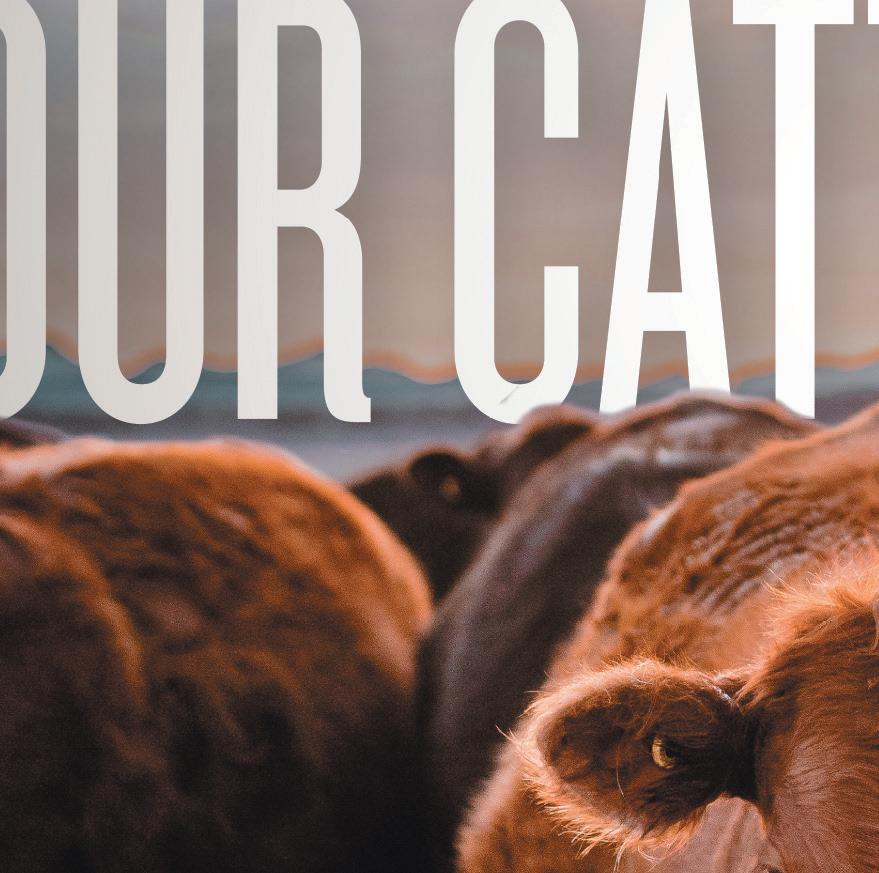
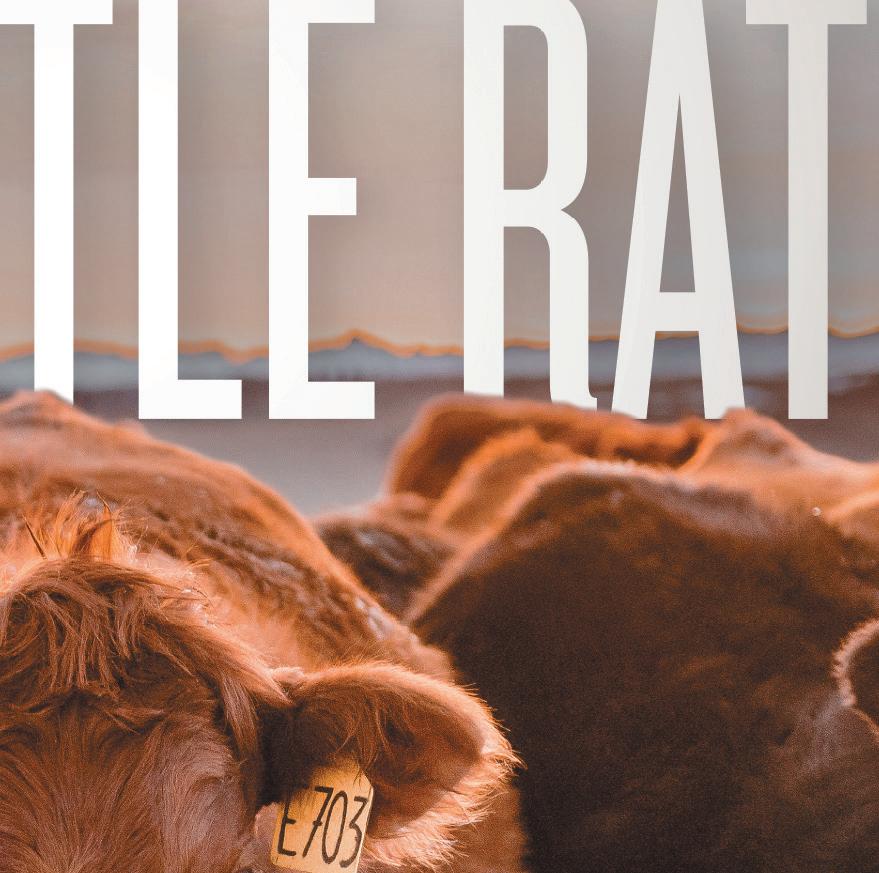
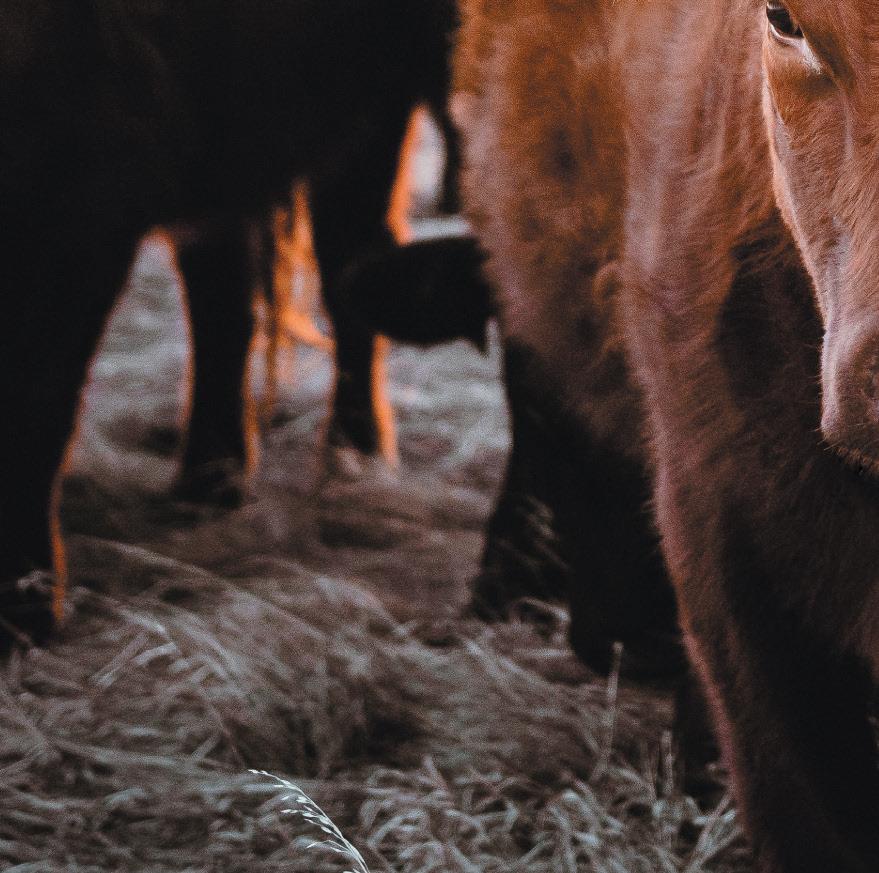
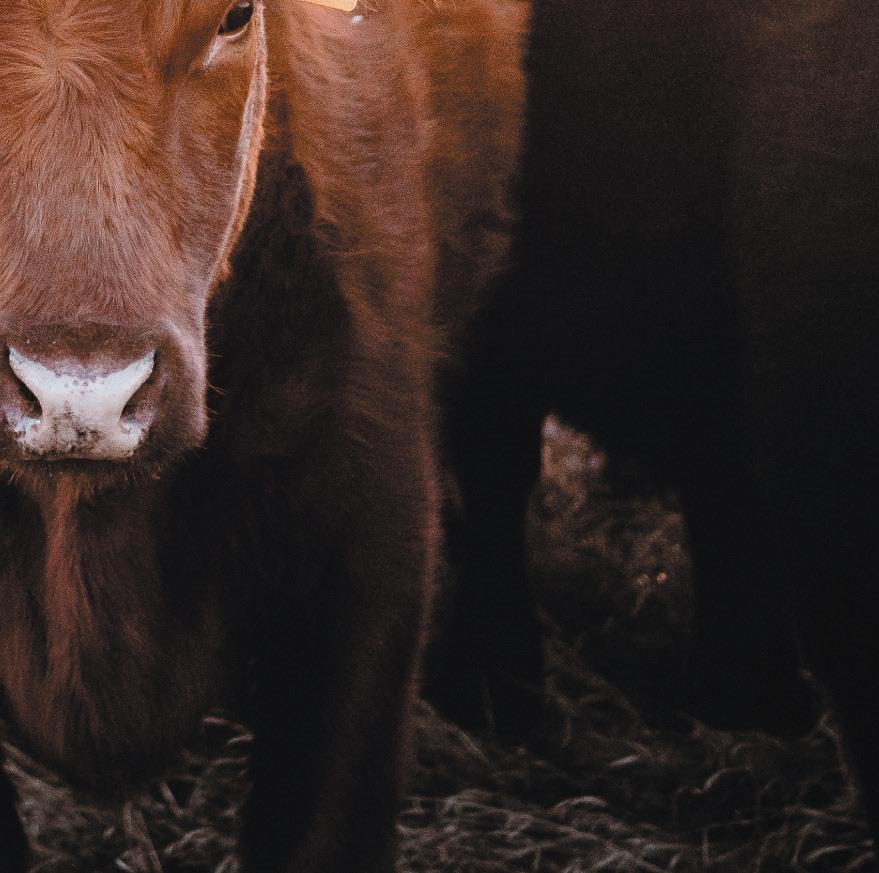

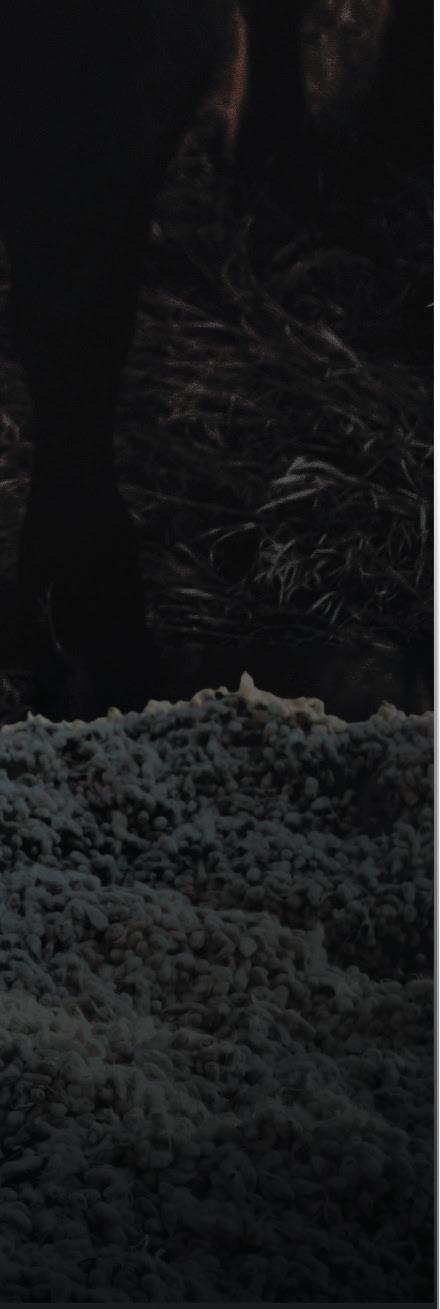
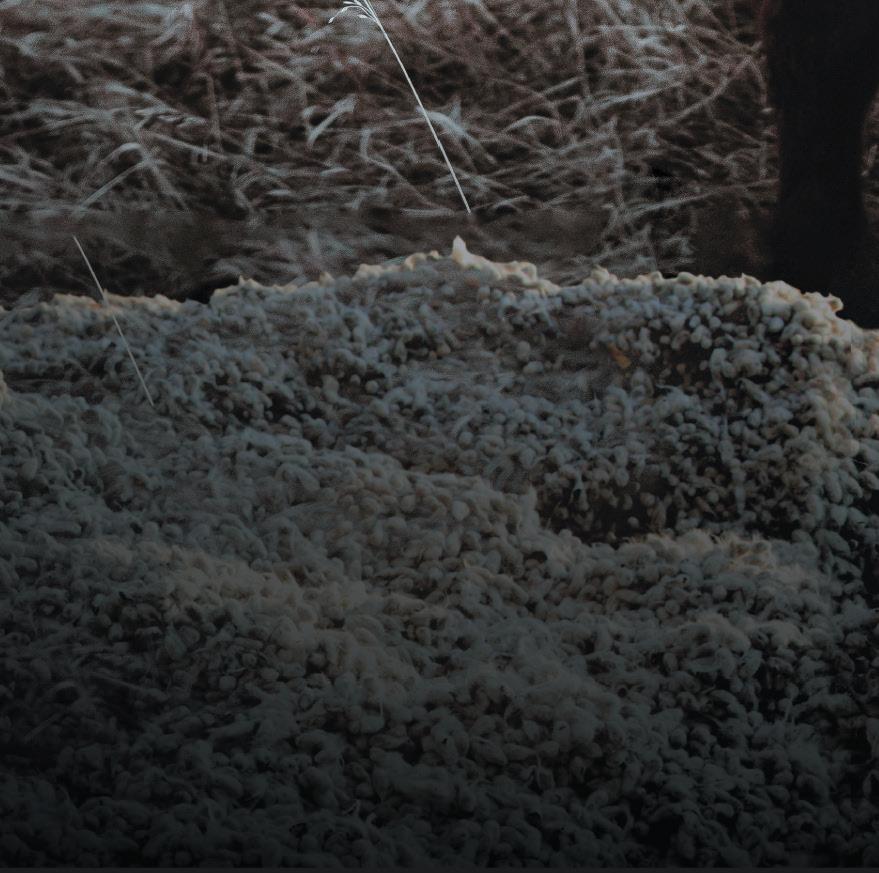




Erath County Dairy Sale
Where: Dublin
Phone: 254-968-7253
Sale Day: Friday
Contact: Bob McBryde, 940-859-6217
Stephenville Cattle Co.
Where: Stephenville Phone: 254-968-4844
Sale Day: Wednesday
Contact: Bob McBryde, 940-859-6217
Flatonia Livestock Comm.
Where: Flatonia Phone: 361-865-3538
Sale Day: Monday
Contact: Danielle Robbins, 512-944-0383
Schulenburg Livestock Auction
Where: Schulenburg Phone: 979-743-6566
Sale Day: Saturday
Contact: Megan Stavena, 979-320-4228
Floydada Livestock Sales
Where: Floydada Phone: 806-983-2153
Sale Day: Wednesday
Contact: John Hindman, 806-778-4899
Pearsall Livestock Auction
Where: Pearsall Phone: 830-334-3653
Sale Day: Wednesday
Contact: Clarence Stevens, 210-415-0441
Gillespie Livestock Co.
Where: Fredericksburg Phone: 830-997-4394
Sale Day: Wednesday
Contact: Tom Roarick, 830-889-5155
Gonzales Livestock Market
Where: Gonzales Phone: 830-672-2845
Sale Day: Saturday
Contact: JoGayle Stavena, 979-332-2186
Nixon Livestock Comm.
Where: Nixon Phone: 830-582-1561
Sale Day: Monday
Contact: Cade Burks, 830-391-4501
Longview Livestock
Where: Longview Phone: 903-235-6385
Sale Day: Thursday
Contact: Paul Pruitt, 903-725-6200
Mid-Tex Livestock Auction
Where: Anderson Phone: 936-825-3970
Sale Day: Thursday
Contact: Danielle Robbins, 512-944-0383
Navasota Livestock Auction
Where: Navasota Phone: 936-825-6545
Sale Day: Saturday Contact: Rick Faught, 936-442-1039
Seguin Cattle Co.
Where: Seguin Phone: 830-379-9955
Sale Day: Wednesday Contact: Cade Burks, 830-391-4501
Hamilton Livestock Comm.
Where: Hamilton Phone: 254-386-3185
Sale Day: Tuesday Contact: Bob McBryde, 940-859-6217
Athens Comm. Co.
Where: Athens Phone: 903-675-3333
Sale Day: Friday
Contact: Brandy Baughman, 903-440-4382
Edinburg Livestock Auction
Where: Edinburg Phone: 956-383-5671
Sale Day: Saturday Contact: Coney Alvarez Jr., 956-437-3899
Hubbard Livestock Market
Where: Hubbard
Phone: 254-576-2584
Sale Day: Monday
Contact: Bob McBryde, 940-859-6217
Sulphur Springs Livestock Comm.
Where: Sulphur Springs Phone: 903-885-2455
Sale Day: Monday
Contact: Paul Pruitt, 903-725-6200
East Texas Livestock Auction
Where: Crockett Phone: 936-544-2246
Sale Day: Tuesday
Contact: Robert Ware, 903-388-5365
Big Spring Livestock Auction
Where: Big Spring Phone: 432-267-5881
Sale Day: Wednesday
Contact: Bruce Brandenberger, 254-977-5763
Edna Livestock Auction
Where: Edna Phone: 361-782-7666
Sale Day: Monday
Contact: Galynn Mazoch, 979-578-1823
Kirbyville Auction Barn
Where: Kirbyville Phone: 409-423-2612
Sale Day: Saturday
Contact: Casey Jones, 409-423-0685
Gulf Coast Livestock Market
Where: Alice Phone: 361-664-4395
Sale Day: Tuesday
Contact: Ramiro Garcia, 361-460-0008
Johnson County Cattle Auction
Where: Cleburne
Phone: 817-556-9090
Sale Day: Saturday
Contact: Lee Snyder, 254-707-1682

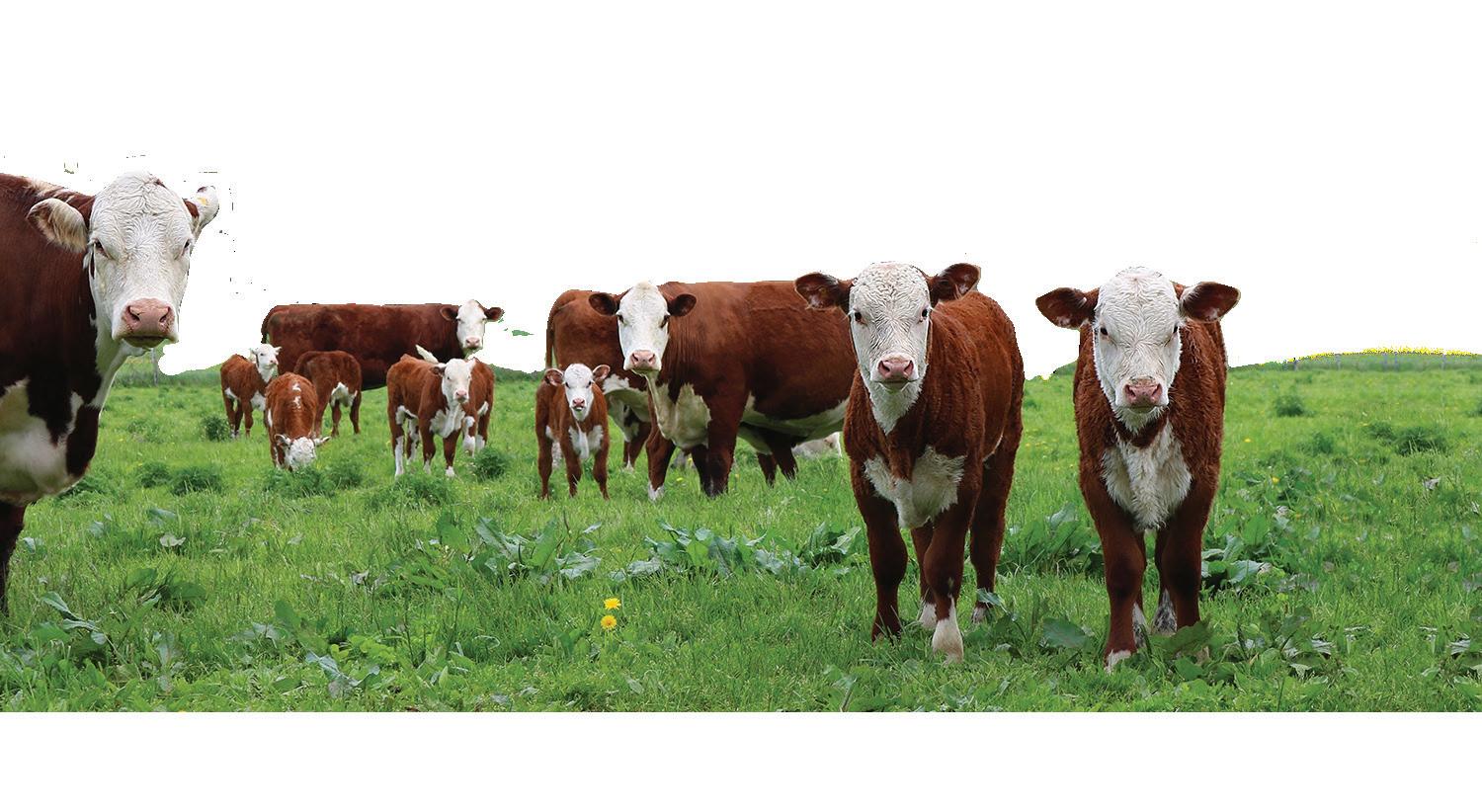
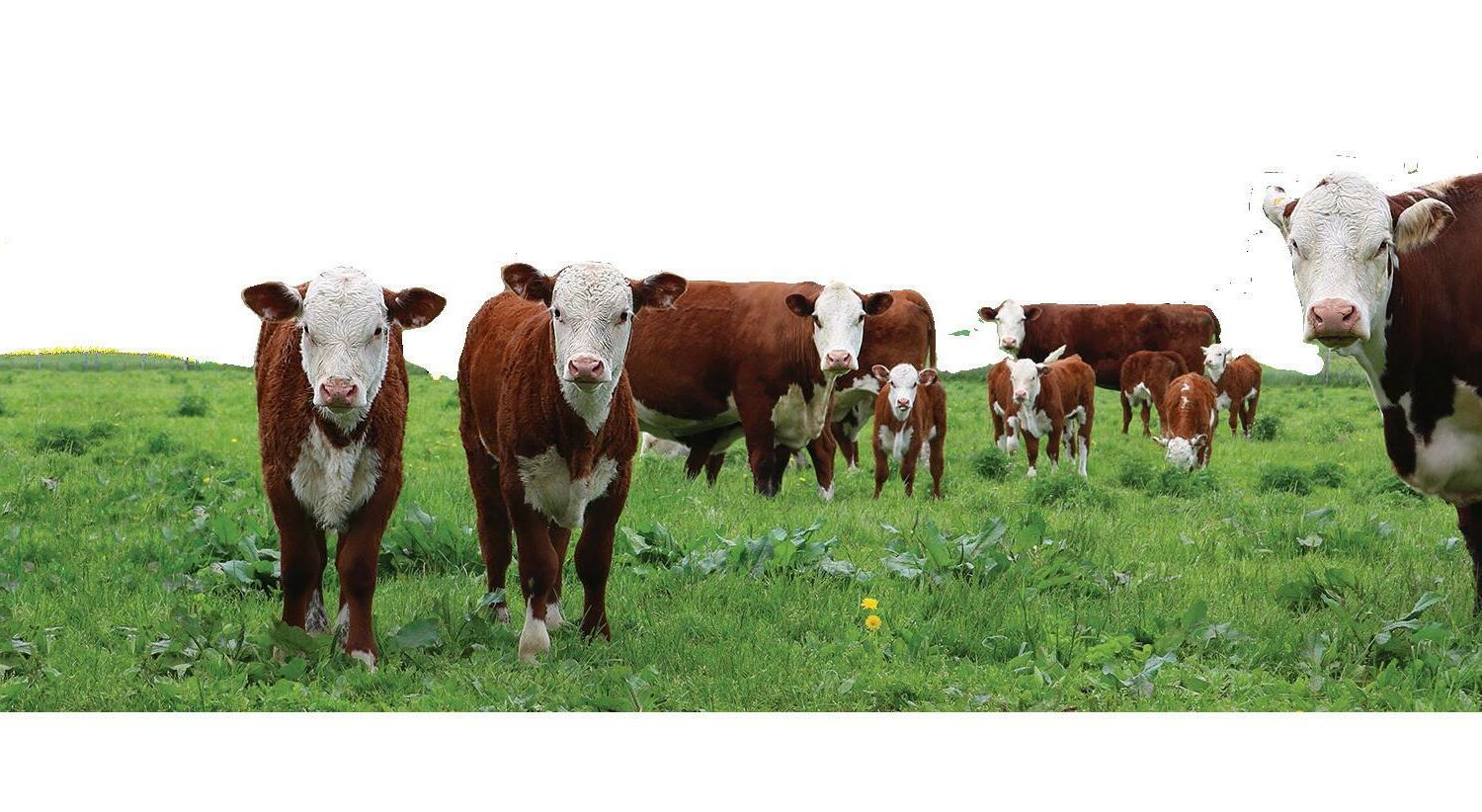


Karnes City Auction
Where: Karnes City
Phone: 830-780-3382
Sale Day: Saturday
Contact: Kaylee Malatek, 979-942-0323
Karnes County Livestock Exchange
Where: Kenedy Phone: 830-583-2574
Sale Day: Thursday
Contact: Kaylee Malatek, 979-942-0323
Cattlemen’s Livestock Comm.
Where: Paris Phone: 903-784-2238
Sale Day: Saturday
Contact: Robin Gibbs, 903-227-0791
Paris Livestock Auction
Where: Paris
Phone: 903-739-2575
Sale Day: Wednesday
Contact: Lana Caldwell, 903-908-0530
Lampasas Cattle Auction
Where: Lampasas Phone: 512-556-3611
Sale Day: Wednesday
Contact: Ray Davis, 254-718-5512
LAVACA
Hallettsville Livestock Comm.
Where: Hallettsville Phone: 361-798-4336
Sale Day: Tuesday
Contact: Kaylee Malatek, 979-942-0323
Giddings Livestock Comm.
Where: Giddings
Phone: 979-542-2274
Sale Day: Monday
Contact: Nina Nygard, 512-281-6753
Lexington Livestock Comm.
Where: Lexington Phone: 979-773-2922
Sale Day: Saturday
Contact: Nina Nygard, 512-281-6753
Buffalo Livestock Comm.
Where: Buffalo Phone: 903-322-4940
Sale Day: Saturday
Contact: Robert Ware, 903-388-5365
Raywood Livestock Market
Where: Raywood Phone: 936-587-4941
Sale Day: Monday
Contact: Harvey Williamson, 963-334-5325
Groesbeck Auction & Livestock
Where: Groesbeck Phone: 254-729-3277
Sale Day: Thursday
Contact: Tyler Rader, 713-907-2725
Live Oak Livestock Auction
Where: Three Rivers Phone: 361-786-2553
Sale Day: Monday
Contact: Marvin Bendele, 210-213-5890
Lubbock Stockyards
Where: Lubbock Phone: 806-745-3383
Sale Day: Tuesday Contact: J.E. Stone, 806-777-4396
Jordan Cattle Auction
Where: Mason Phone: 325-347-6361
Sale Day: Monday
Contact: Warren Ottmers, 830-669-2262
Waco Stockyards
Where: Waco Phone: 254-753-3191
Sale Day: Tuesday Contact: Larry Brown, 254-265-1920
West Auction
Where: West Phone: 254-826-3725 Sale Day: Thursday Contact: Ray Davis, 254-718-5512
Union Comm.
Where: Hondo
Phone: 830-741-8061,
Sale Day: Monday
Contact: Clarence Stevens, 210-415-0441
Milam County Livestock Auction
Where: Cameron Phone: 254-697-6697
Sale Day: Friday
Contact: Morgan Wendland, 512-632-9366
Nacogdoches Livestock Exchange
Where: Nacogdoches
Phone: 936-564-8661
Sale Day: Thursday
Contact: Michael Witcher, 936-556-0992
Corsicana Livestock Market
Where: Corsicana Phone: 903-872-1631
Sale Day: Tuesday
Contact: Lee Snyder, 254-707-1682
Panola Livestock
Where: Carthage Phone: 903-693-6361
Sale Day: Tuesday
Contact: Lori Blankenship, 936-234-3441
Livingston Livestock Exchange
Where: Livingston Phone: 936-327-4917
Sale Day: Saturday
Contact: Harvey Williamson, 963-334-5325
Amarillo Livestock Auction
Where: Amarillo
Phone: 806-373-7464
Sale Day: Monday
Contact: Michael Vessels, 806-517-3188
Lonestar Stockyards
Where: Amarillo
Phone: 806-677-0777
Sale Day: Tuesday
Contact: Michael Vessels, 806-517-3188

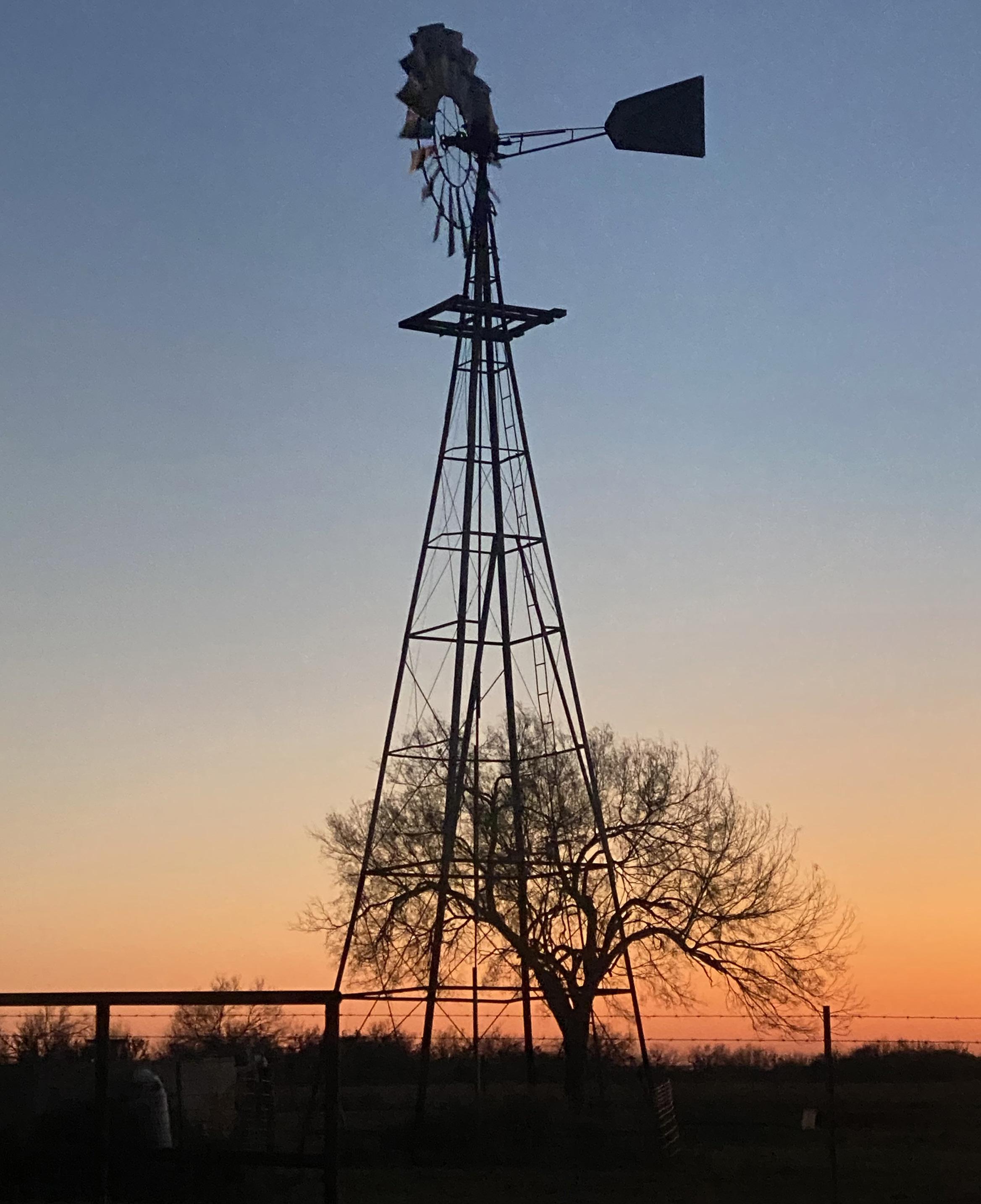
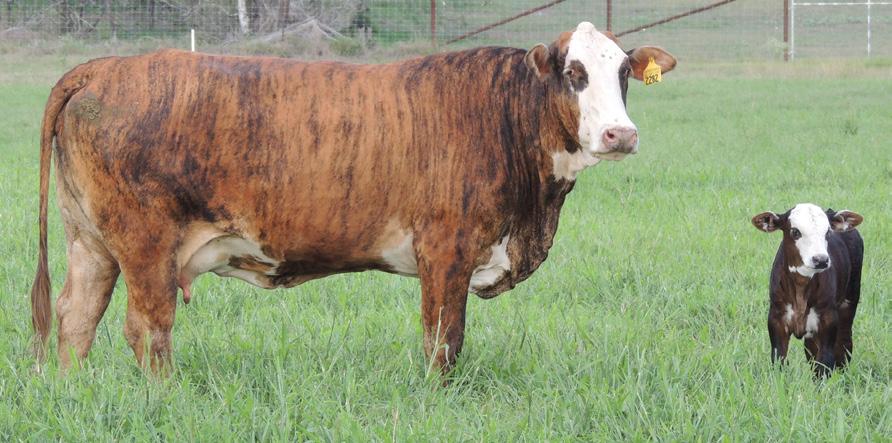


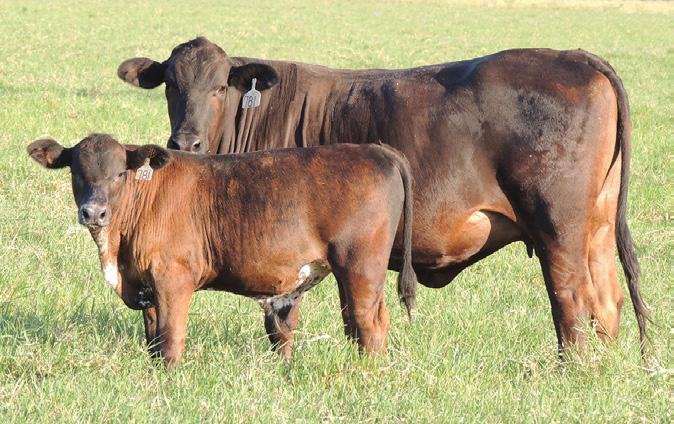


Emory Livestock Auction
Where: Emory
Phone: 903-473-2512
Sale Days: Tuesday & Saturday
Contact: Brandy Baughman, 903-440-4382
Calvert Livestock Co.
Where: Calvert Phone: 979-364-2829
Sale Day: Friday
Contact: Ray Davis, 254-718-5512
Hunt Livestock Exchange
Where: Henderson
Phone: 903-657-2690
Sale Day: Monday
Contact: Samuel Steadman, 318-617-1141
Jordan Cattle Auction
Where: San Saba
Phone: 325-372-5159
Sale Day: Thursday
Contact: David Munden, 325-456-7253
Center Auction Co.
Where: Center Phone: 936-598-4395
Sale Day: Wednesday
Contact: Michael Witcher, 936-556-0992
Triple G Livestock Auction LLC
Where: Rio Grande City Phone: 956-437-1988
Sale Day: Friday
Contact: Coney Alvarez Jr., 956-437-3899
Tulia Livestock Auction
Where: Tulia
Phone: 806-995-4184
Sale Day: Thursday
Contact: Michael Vessels, 806-517-3188
Abilene Auction
Where: Abilene Phone: 325-673-7865
Sale Day: Tuesday
Contact: Dave Williams, 325-669-2030
Stone Livestock Comm.
Where: Mt. Pleasant Phone: 903-575-9099
Sale Day: Tuesday
Contact: Paul Pruitt, 903-725-6200
Producers Livestock Auction
Where: San Angelo Phone: 325-653-3371
Sale Day: Thursday
Contact: Bruce Halfmann, 325-315-5972
Southwest Livestock Exchange
Where: Uvalde Phone: 830-278-5621
Sale Day: Thursday
Contact: Clarence Stevens, 210-415-0441
Mort Livestock Exchange
Where: Canton Phone: 903-287-6386
Sale Day: Saturday Contact: Paul Pruitt, 903-725-6200
Van Zandt Comm. Co.
Where: Wills Point Phone: 903-872-2117 Sale Day: Saturday Contact: Paul Pruitt, 903-725-6200
Brenham Livestock Auction
Where: Brenham Phone: 979-836-3621
Sale Day: Friday
Contact: Lisa Sebastian, 979-270-3041
El Campo Livestock Co.
Where: El Campo Phone: 979-543-2703
Sale Day: Tuesday
Contact: Galynn Mazoch, 979-578-1823
Wharton Livestock Auction
Where: Wharton
Phone: 979-532-3660
Sale Day: Wednesday
Contact: JoGayle Stavena, 979-332-2186
Wichita Livestock Sales
Where: Wichita Falls Phone: 940-541-2222
Sale Day: Wednesday
Contact: R.C. Langford, 832-330-7279
Vernon Livestock Market LLC
Where: Vernon Phone: 940-552-6000
Sale Day: Tuesday
Contact: Larry Lee, 940-886-6746
Decatur Livestock Market
Where: Decatur Phone: 940-627-5599
Sale Day: Monday
Contact: R.C. Langford, 832-330-7279
Winnsboro Livestock Auction
Where: Winnsboro Phone: 903-365-2201
Sale Day: Friday
Contact: Alan Pruitt, 903-725-6200
Graham Livestock Comm. LLC
Where: Graham
Phone: 940-549-0078
Sale Day: Monday
Contact: Ronnie Ober, 817-371-7071
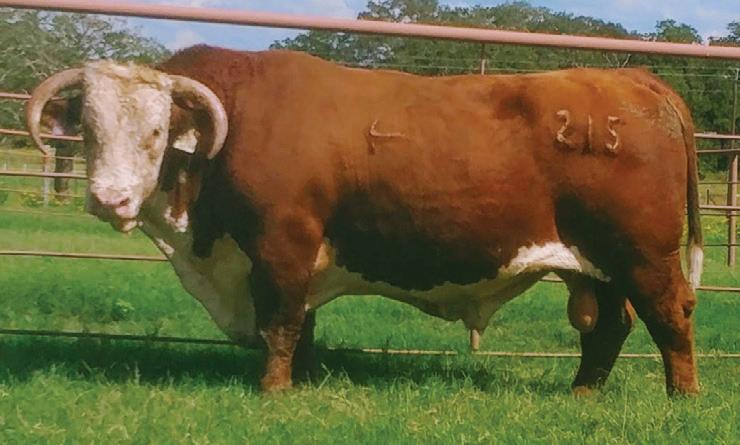
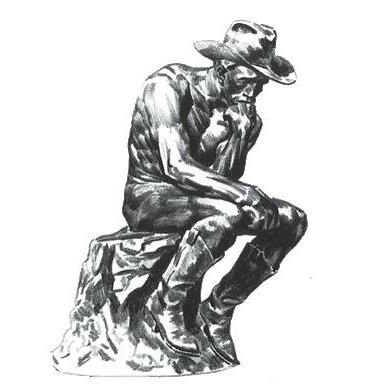

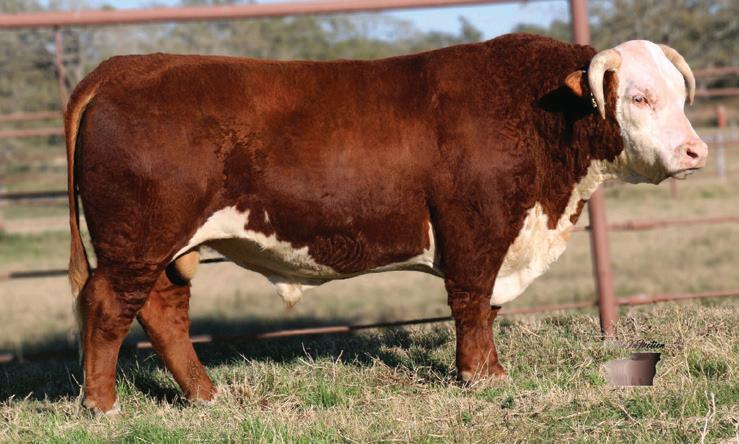
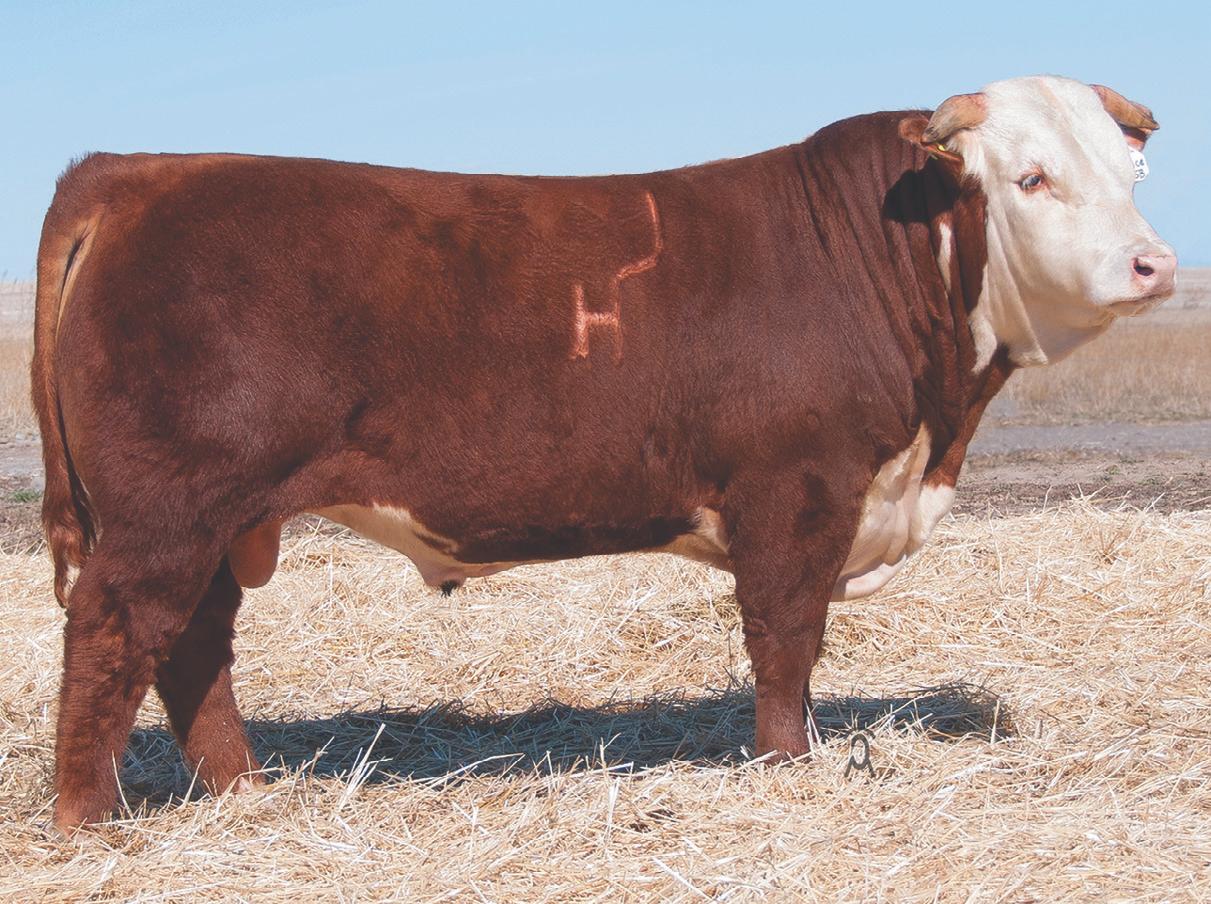





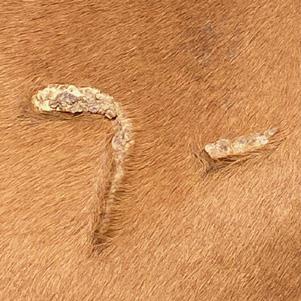
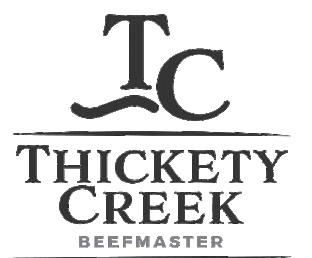

Matthew Domel Cell: 254-749-3253
& Barbara
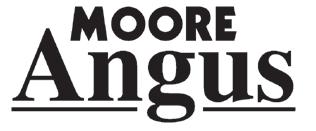





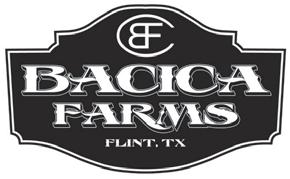



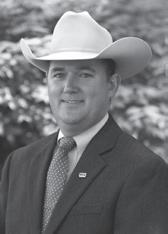
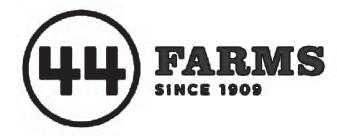
Mike & Carla Bacica
FM 2868
TX 75762
903-520-0390 mbpga@aol.com
903-530-8551 wtnca@aol.com
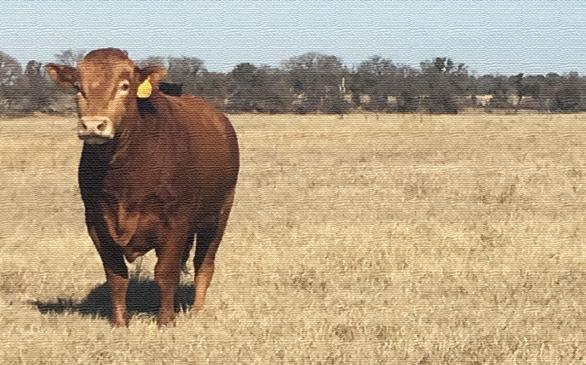
Oriented
Plantation,
Chapel Rd.
77445
PARTIN
Steve and Carlton Partin
Montalba, Texas 75853
903-549-3005
Partin: 903-922-3689
407-709-0297






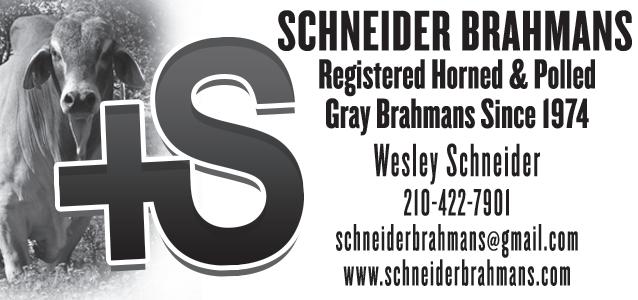


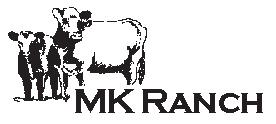


Brangus

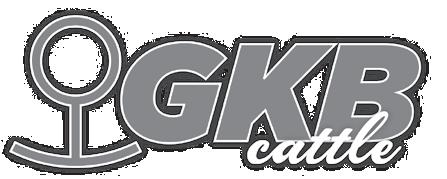





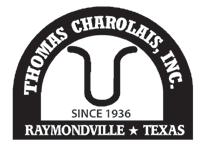


Registered
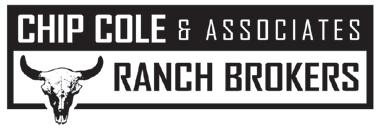
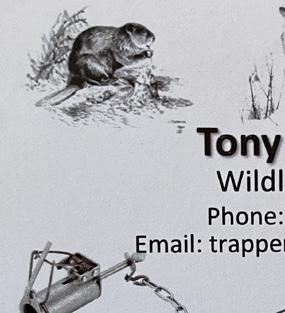
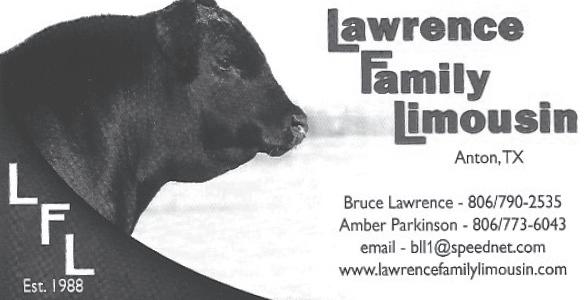
Warnken

Warnken 979-743-0619
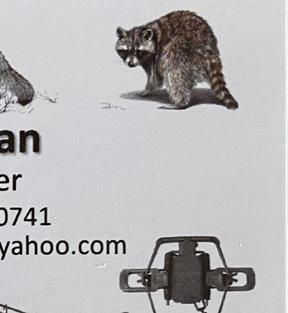


POLLED HEREFORDS
Joey and Susan Skrivanek, owners 407 W. Mustang • Caldwell, TX 77836 • Cell 979-224-4698 Office
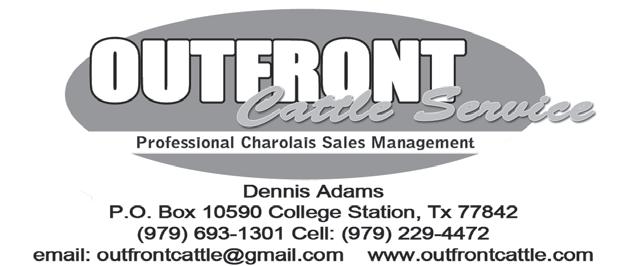


L.C. Whitehead, Owner Cell: 325-234-5115 • Office: 325 396 238 4 Randy Wood, Mgr : 325 396-4911 Mark McClintock: cattleman50@yahoo.com 5749 Rocking Chair Lane Ft. McKavett, TX 76841 Nine miles east of Caldwell on Hwy 21 or 15 miles west of Bryan College Station on Hwy 21



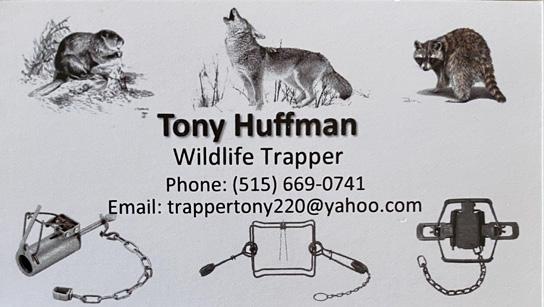



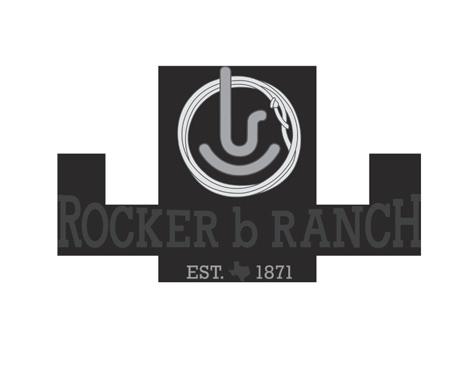
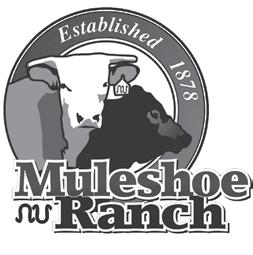
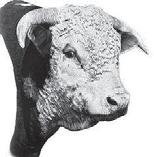
Borchers Southern Y Ranches, L.P.
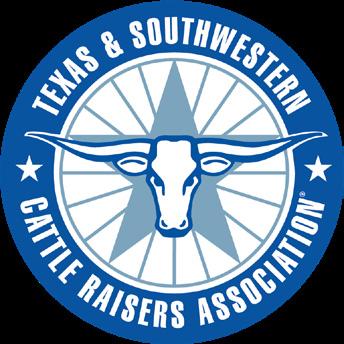
Charla Borchers-Leon


Santa
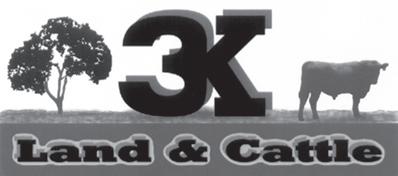







SANTA GERTRUDIS CATTLE



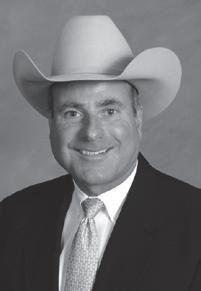

Texas 78384
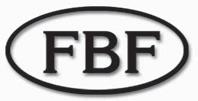
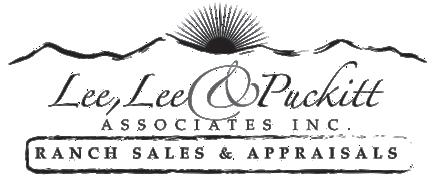

MONDAY, AUG. 1 -
WEDNESDAY, AUG. 3
Texas A&M Beef Cattle Short Course
Where: College Station
THURSDAY, AUG. 4
Special Stocker & Feeder Sale
Where: Jordan Cattle Auction, San Saba When: 10 a.m.
MONDAY, AUG. 8
Special Stocker & Feeder Sale
Where: Jordan Cattle Auction, Mason When: 10 a.m.
TUESDAY, AUG. 9
TSCRA Ranch Gathering
Where: Katzfey Ranches, George West When: 5:30 p.m.
THURSDAY, AUG. 11
TSCRA Ranch Gathering
Where: Stalwart Ranch Barn, Crockett When: 5:30 p.m.
TUESDAY, AUG. 16
Ranching 101: Sale Barn Best Practices
Where: Online When: 1 p.m.
THURSDAY, AUG. 18
TSCRA Ranch Gathering
Where: The Lodge at Pipkin Ranch, Winnie When: 5:30 p.m.
TUESDAY, AUG. 23
TSCRA Ranch Gathering
Where: National Roper’s Supply, Decatur When: 5:30 p.m.
SATURDAY, AUG. 27
Replacement Female Sale
Where: Jordan Cattle Auction, San Saba When: 10 a.m.
WEDNESDAY, AUG. 31
Weaned Calf Sale
Where: Navasota Livestock Auction Co., Navasota When: 10 a.m.
THURSDAY, SEPT. 1
Stocker, Feeder & Premium Weaned Sale
Where: Jordan Cattle Auction, San Saba When: 10 a.m.
SATURDAY, SEPT. 3
South Texas Cattle Marketing, Replacement Female Sale
Where: Nixon When: 12 p.m.
TSCRA Young Cattle Raisers Dinner & Dove Hunt
Where: G2 Ranch, Pearsall When: 5:30 p.m.
TSCRA Policy Conference
Where: Omni La Mansion del Rio, San Antonio
Special Stocker & Feeder Sale
Where: Jordan Cattle Auction, Mason When: 10 a.m.
TSCRA Ranch Gathering
Where: Silver Spur Resort, Canton When: 5:30 p.m.
Ranching 101: Wildlife Management
Where: Online When: 1 p.m.
TSCRA Ranch Gathering
Where: Texas Ranger Hall of Fame & Museum, Waco When: 5:30 p.m.
Fall Replacement Female Sale
Where: Jordan Cattle Auction, San Saba When: 10 a.m.
Live Oak Beefmaster Breeders Association: Perfect Pair Fall Sale
Where: Live Oak Co. Fairgrounds, Three Rivers
Gardiner Angus: 18th Annual Fall Bull Sale
Where: Ashland, Kansas
Isa Cattle Co.: 61st Bull Sale
Where: San Angelo
TSCRA Ranch Gathering
Where: First Financial Pavilion, San Angelo When: 5:30 p.m.
WEDNESDAY, OCT. 5
TSCRA Ranch Gathering - Educational Series
Where: Briggs Ranch, Victoria When: 4 p.m
THURSDAY, OCT. 6
Special Stocker & Feeder Sale
Where: Jordan Cattle Auction, San Saba When: 10 a.m.
Dudley Bros.: 61st Anniversary Bull Sale
Where: Dudley Bros. Ranch, Comanche When: 12 p.m.
TSCRA Ranch Gathering - Educational Series
Where: Priefert Headquarters, Mount Pleasant When: 4 p.m.
Powell Herefords: 25th Annual Production Sale
Where: Fort McKavett
When: 11:30 a.m.
TSCRA Ranch Gathering
Where: R.A. Brown Ranch, Throckmorton
When: 5:30 p.m.
R.A. Brown Ranch: 48th Annual Bull Sale
Where: Throckmorton
THURSDAY, OCT. 13
Special Bull Offering
Where: Jordan Cattle Auction, San Saba
When: 10 a.m.
TUESDAY, OCT. 18
Ranching 101: Finding the Right Equipment
Where: Online
When: 1 p.m.
TSCRA Ranch Gathering
Where: Vista Oaks Event Center, Fredericksburg
When: 5:30 p.m.
TSCRA Ranch Gathering
Where: Houston Polo Club, Houston
When: 5:30 p.m.
9th Annual Hill Country Youth Heifer Sale
Where: Jordan Cattle Auction, San Saba
When: 10 a.m.
44 Farms: Annual Bull Sale
Where: 44 Farms, Cameron
When: 10:30 a.m.
Weaned Calf Sale
Where: Navasota Livestock Auction Co., Navasota
When: 10 a.m.
19th Annual Holt Cat Symposium on Excellence in Ranch Management
Where: King Ranch Institute, Kingsville
Fall "Best of the Best" Replacement Female Sale
Where: Jordan Cattle Auction, San Saba
When: 10 a.m.
Special Stocker & Feeder Sale
Where: Jordan Cattle Auction, Mason
When: 10 a.m.
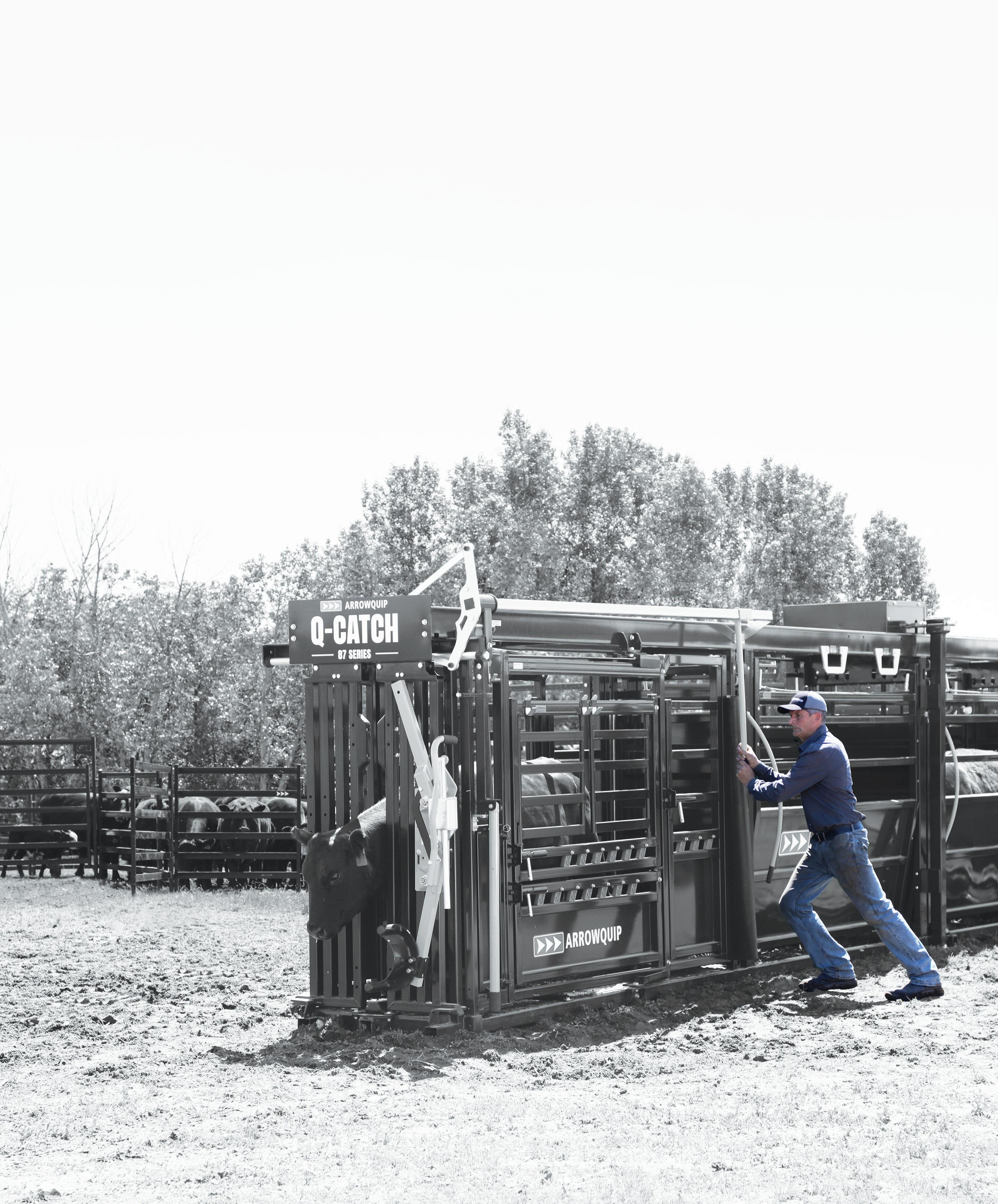
Justin Insurance Agency
K3 Ranch
Kaddatz Equipment
King Ranch Institute
Accredited
Bacica
Cactus
Max Inc.
Cole
The Dale Lasater
Charolais
Detering
Farris
Angus
Hall
Cattle
Riverbend Farms
Quarter
Agri-Enterprises
Angus
Ranch
Cattle
Herefords
Indian Hills Ranch
Mound Ranch
Cattle Co.
Martin
Cattle
Lawrence Family Limousin
Lee, Lee & Puckitt
Lesikar Ranch
Lezli McPhail
Littlerobe Angus Ranch
Livestock Nutrition Center
Lone Star Ag Credit
Lone Star Angus
LRB Ranches
M6 Ranch
Mallett Simmentals
Massey Ferguson 65 MK Ranch 89
Moly Manufacturing Inside Back Cover Moore Angus 88 Morgan Stanley/Mark McAndrew 90 MP Brangus 89
Muleshoe Ranch 24, 90 Multimin USA 83
No Bull Enterprises
Herefords
O
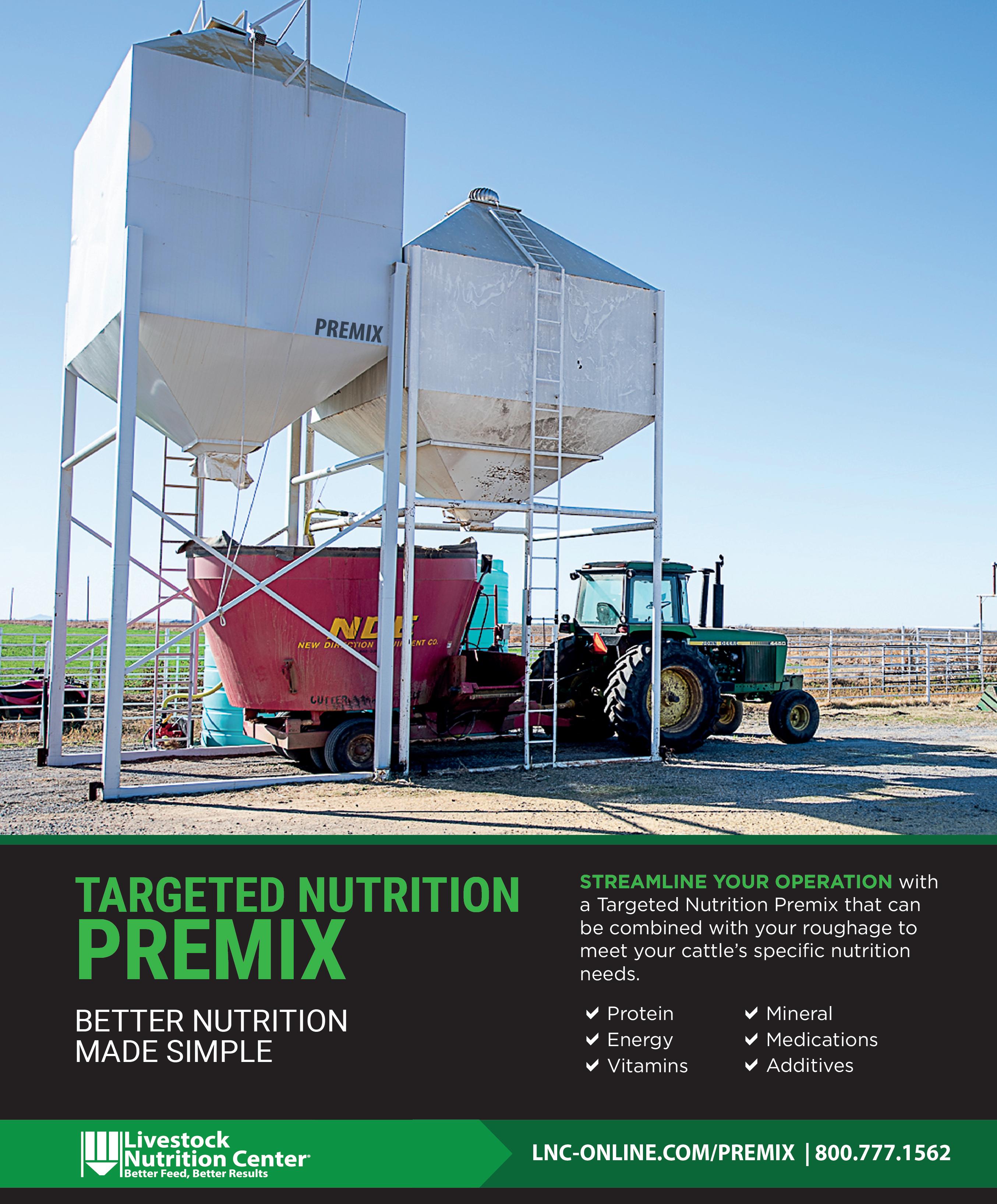

Cactus Feedyard
Matthew Turney, Manager Cactus, TX

(806) 282-7077
Rusty Jackson, Manager Ulysses, KS
(806) 773-9457
At Cactus, our Employee Stock Ownership

each employee
what
Frontier Feedyard
Ross Kelso, Manager Spearman, TX
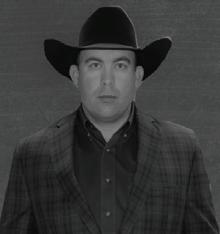
(806) 662-4741
Stratford Feedyard
Pistol Audrain, Manager Stratford, TX
cell: (806) 753-7133
Southwest Feedyard
Kacey Graham, Manager Hereford, TX
cell: (806) 316-8799
Hale Center Feedyard
David Watts, Manager Hale Center, TX
cell: (806) 202-0209
Ulysses Feedyard
Adam Gerrond, Manager Ulysses, KS
cell:(806) 390-9034
Wolf Creek Feedyard
Keith Brinson, Manager Perryton, TX
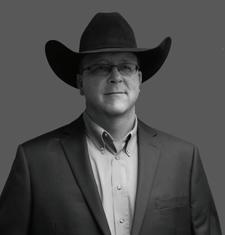
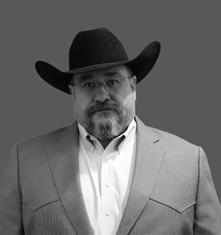
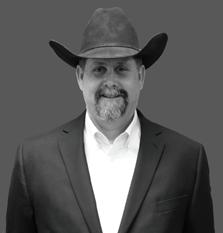
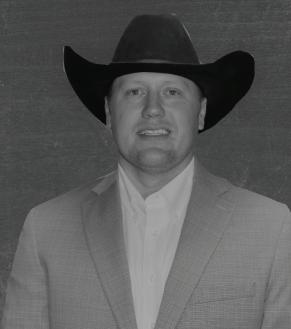

cell:(806) 282-7588
Wrangler Feedyard
Randy Shields, Manager Tulia, TX

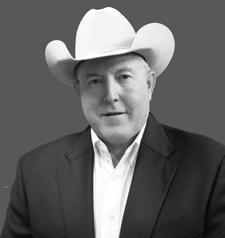
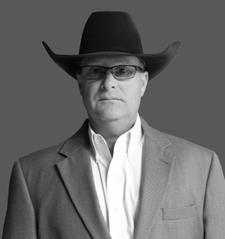
cell: (806) 290-0559
Syracuse Feedyard
Phil Moreman, Manager Syracuse, KS cell: (806) 340-4790





Sunday, Sept. 11 • G2 Ranch, Pearsall, Texas
TSCRA Young Cattle Raisers Dove Hunt & Dinner is a gathering for the next generation of ranchers, landowners, wildlife managers and those who live for it.
For those aged 25-40, join a group of like-minded individuals for networking, learning and education.
Hunt spots are limited, please contact education@tscra.org for more information.
A serious young cattleman, Tony Sellman and his cutting horse, Jug, were pictured on this century-ago cover of The Cattleman . He was the son of John Sellman with S.M.S. Flat Top Ranch.
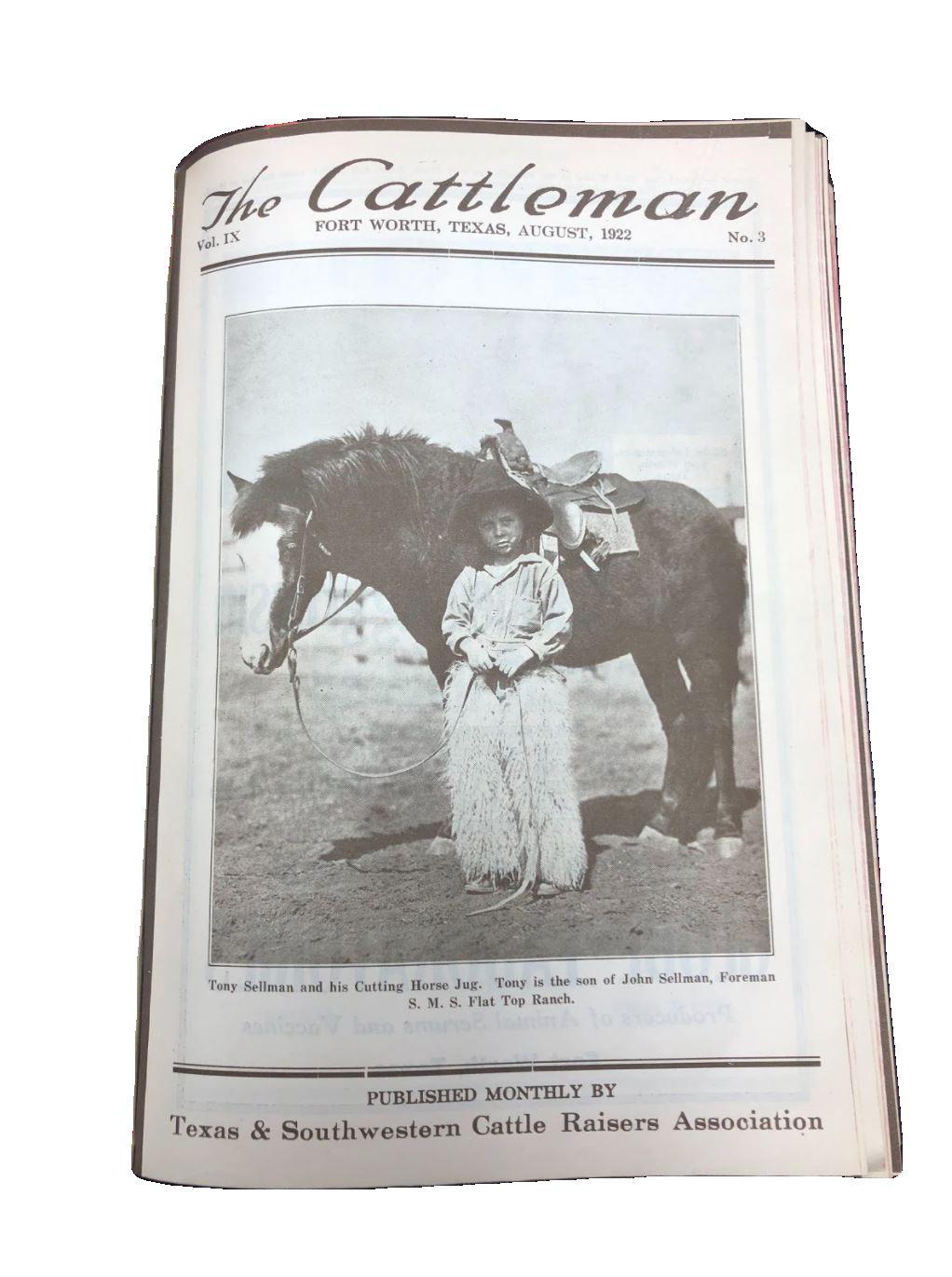
Also within the magazine’s pages was a feature story by Laura V. Hamner, better known as Miss Amarillo, outlining the work of Charles Goodnight throughout the Texas Panhandle and the establishment of the Goodnight Eastern Trail in 1875.
“All the great West was stocked with Texas cattle and most of these followed the Goodnight Trail,” she wrote.
C


